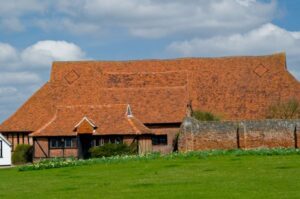
''Triptomelus standing between Demeter and Kore'' [Wiki}. Question. Where have you seen a similar representation before? Question 2. ''Embossed'' = 'Stamp of approval'? Try Part 3 and/or ''Unicorn''.
Continued: ''Winnowing''? {i.e., in relation to September/Aphrodite/winds/little man/weep/Dionysus/sorb-apple/Eleusis etc}. [Page 158 'The White Goddess'].
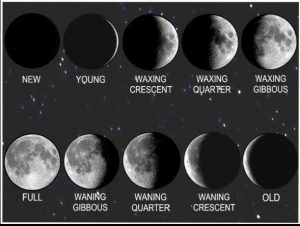
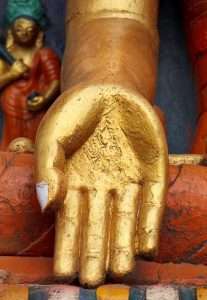 "The next type of Hercules {Khonsu?} is an agricultural as well as pastoral king and specialises in the cultivation of Barley, so that he is sometimes confused with the Eleusinian Triptolemus, Syrian Tammuz or Egyptian Maneros. Early portraits of him with lion skin, club and grain sprouting from his shoulders {not chest {heart?} as with Osiris} - have been found in Mesopotamian cities....In the Eastern Mediterranean he reigns alternatively with his 'twin' as in the double kingdoms of Argos, Lacedaemon, Corinth, Alba Longa and Rome. Co-kings of this type {include} Iphiclus, twin to Tirynthian Hercules; Pollux, twin to Castor, Demophoon, twin to Triptolemus, Abel, twin to Cain...Hercules is now 'lover' to fifty water priestesses of the Mountain goddess in whose honour he wears a lions skin. The twin joint reign is fixed for EIGHT years, apparently because at every hundred lunar month occurs a rough approximation of lunar and solar times. Llew Llaw Gyffes {'the Lion with a Steady Hand'} is true to type when in the Romance of Math the Son of Mathonwy he takes Gwydion as his twin to visit his mother Arianrhod." [Page 127 'The White Goddess'].
"The next type of Hercules {Khonsu?} is an agricultural as well as pastoral king and specialises in the cultivation of Barley, so that he is sometimes confused with the Eleusinian Triptolemus, Syrian Tammuz or Egyptian Maneros. Early portraits of him with lion skin, club and grain sprouting from his shoulders {not chest {heart?} as with Osiris} - have been found in Mesopotamian cities....In the Eastern Mediterranean he reigns alternatively with his 'twin' as in the double kingdoms of Argos, Lacedaemon, Corinth, Alba Longa and Rome. Co-kings of this type {include} Iphiclus, twin to Tirynthian Hercules; Pollux, twin to Castor, Demophoon, twin to Triptolemus, Abel, twin to Cain...Hercules is now 'lover' to fifty water priestesses of the Mountain goddess in whose honour he wears a lions skin. The twin joint reign is fixed for EIGHT years, apparently because at every hundred lunar month occurs a rough approximation of lunar and solar times. Llew Llaw Gyffes {'the Lion with a Steady Hand'} is true to type when in the Romance of Math the Son of Mathonwy he takes Gwydion as his twin to visit his mother Arianrhod." [Page 127 'The White Goddess'].Try ''lion'' 2:6

'153'. Glass eyes?
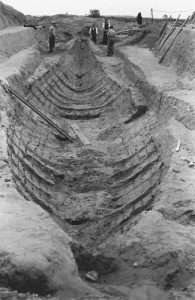
Sutton-Hoo-Suffolk: "Before any vessel may be filled with any specific content, it must be empty. Before a single number is accountable, Zero must be assumed. No creation is possible without the void. Writing can only be recorded on BLANK paper, or sound on a clean tape." {Page 24 'Magical Ritual Methods' / W. Gray}. 'Purity'?
AND/OR: "After 'three' months we set sail, in a ship which had wintered in the island {Malta}, a ship of Alexandria, with the Twin Brothers as figurehead. Acts 28:11.
"Putting in at Syracuse, we stayed there for three days, and from there we made a circuit and arrived at Rhegium, and after one day a South wind sprang up {'leap'?}, and on the second day we came to Puteoli. There we found brethren and were invited to stay with them for 'seven' days. And so we came to Rome. " Acts 28: 12-14.
N.B. Fellow 'tent makers' came with him from Corinth. A shipwreck occured between Crete and Malta.
Continued: "And the brethren there, when they heard of us, came as far as the Forum of Appius and the Three Taverns to meet us. On seeing them, Paul took courage and thanked god. And when we came into Rome, Paul was allowed to stay by himself, with the soldier that guarded him." Acts 28:15-16.
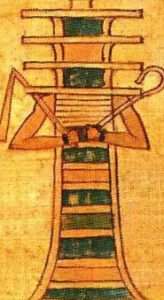 Side note: The trapezius[4] is a large paired trapezoid-shaped surface muscle that extends longitudinally from the occipital bone to the lower thoracic vertebrae of the spine and laterally to the spine of the scapula. It moves the scapula and supports the arm.
Side note: The trapezius[4] is a large paired trapezoid-shaped surface muscle that extends longitudinally from the occipital bone to the lower thoracic vertebrae of the spine and laterally to the spine of the scapula. It moves the scapula and supports the arm.
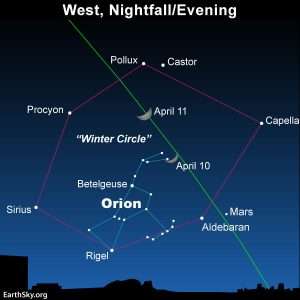
The winter triangle. On the shoulders of giants?
The trapezius has three functional parts:
- an upper (descending) part which supports the weight of the arm;
- a middle region (transverse), which retracts the scapula; and
- a lower (ascending) part which medially rotates and depresses the scapula.
The trapezius muscle resembles a trapezium, also known as a trapezoid, or diamond-shaped quadrilateral.
Gemini?
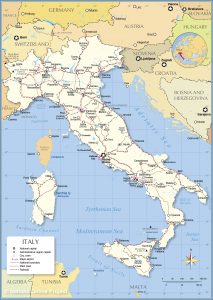
''Sicily = the TOE end of the boot of Italy.'' [Wiki]. Buskin or sandal?

Left or Right?
the man is an indispensable, but on the whole disturbing factor {'shadow'?.}." [Page177 'Science of Mythology'].
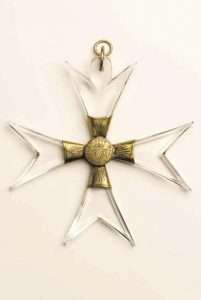

'Birthing' bricks.
Side note: A crystal eight -pointed cross, given to Grandmaster Jean de Valette by Pope Pius V in recognition of his victory during the Great Siege of Malta, is among the items displayed in a new book that tells the story of the Order of St John. The cross is inscribed with the words unus decem millia vicit – one conquers ten thousand {'10000'}– in reference to the grandmaster having led the troops of the Order of St John in repelling the Ottoman forces, resulting in a victory that would change the course of history. It is one of the objects documented in Treasures – Faith, Care, Valour, a beautifully illustrated book filled with detailed images that help bring to life the collection within Museum of the Order of St John in the UK. As time passed, the Order improved and adapted to what was needed, said Dr Jarvis, adding: “In England we teach First Aid but are now moving more to expand our support to communities. But in some of the African countries we provide support to mothers and children during childbirth. In Malta there’s a rescue service and first aid training. We do what is most suited to the country – it’s a continuum of adapting,” he said as he commented about the stellar work of the Maltese branch and urged the public to support the work of the Order."
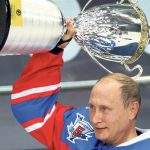
Team player or Self Serving? Does he speak for Mother Russia?

What would his mother think?
A working example: ''When will they wake? When will the true Demetrius appear? Demetrius - the name comes from Demeter, the Earth Goddess. Demetrius means: the child of the earth goddess; the 'child' of the Great Mother who was born at the beginning of the Christian era. The child will rise again in the hearts of men....May it be that then the Russian nation will wake up, when fresh news of the child of Light in the hearts of men is experienced and made a reality by the Russian peasant.'' [Page 80 'Russia: Past, Present and Future' / R. Steiner].
"The true voyage of discovery, lies not in seeking new landscapes, but in having new eyes." Marcel Proust.
Side step: Practical analogy..."Got to see it, rather than just read it..." John Humphrys talking to D. Tennant and Greg Doran in relation to the plays by W. Shakespeare. [400th anniversary. Radio 4. 23/04/16].
Question. Was Shakespeare aware of this subject?
A working example: "For though the Hermetic writings reflect the fundamental world view of ancient Egypt, they can convey an erroneous theme of spiritual teaching to the casual reader. To begin with, Hermetic revelation was not a process of the teacher consciously infusing knowledge into the candidate. Rather, it was a process by which the candidate arrived at wisdom through the order of the natural universe and contemplating it...."
And/or: " The esoteric function of these structures {i.e.,temples/pyramids etc.,} - could be understood - if the appropriate tools {keys} for understanding their purpose were made accessible." [Page 8/20 'Sacred Tradition in Ancient Egypt' / R. Clark].
"open thine eyes and 'see'...." {1 Kings xix.16}.
 "The word 'mystic' is from the Greek word 'muo' which means ''to be silent.'' The true mystic realizes that the highest level of insight is realized and honoured in the nature of Silence, for the fullness of reality as it exists and as it is experienced, can never be fully expressed by descriptive utterance ." [Chapter one, 'Jesus Christ Sun of God: Ancient Cosmology and Early Christian Symbolism'].
"The word 'mystic' is from the Greek word 'muo' which means ''to be silent.'' The true mystic realizes that the highest level of insight is realized and honoured in the nature of Silence, for the fullness of reality as it exists and as it is experienced, can never be fully expressed by descriptive utterance ." [Chapter one, 'Jesus Christ Sun of God: Ancient Cosmology and Early Christian Symbolism'].
"Silence is always more profound in places where there was once noise." A. Wainwright.
'Chaos'.
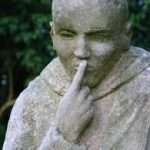
Finger width?
Working example: ''Until 40 years ago, corpses could still be found on top of the Towers of Silence in Yazd, Iran, slowly disintegrating or being picked apart by desert vultures....According to a tradition dating back over 3,000 years, bodies were arranged on the towers in three concentric circles. Men were placed in the outer circle, women in the middle, and children in the inner-most ring. The bodies were then left until their bones were bleached by the elements and stripped by the vultures. After the purification process, the bones were placed in ossuaries near or inside of the towers.'' ['Atlas Obscura'].
'She Who Loves Silence'...as a means.....
Link to objectivity. Purpose of. The symbol of which, is sometimes represented with a ''waveless body of water.'' Or put another way....''Still waters run deep.'' i.e., ... "Is not silence the very voice of 'Great Spirit' ? Black Elk [Emphasis, this readers].
'See' the word {logos} of the Lord." {Jer. ii. 31}. Get it?
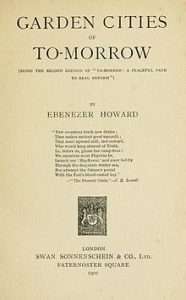
Huntingdon to enlarge.
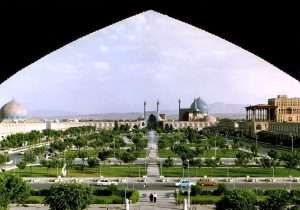
Charbagh gardens.
From a different perspective: "I am a polytheist nun based in Penwortham, Lancashire, north-west England. As a Brythonic polytheist I venerate the Gods and Goddesses of ancient Britain and the spirits of my local landscape. I am devoted to Gwyn ap Nudd – a ruler of Annwn. I serve Him and other Deities by bringing Their stories and veneration back to the world.
In 2022 I founded the Monastery of Annwn and took vows as a nun with the name Sister Patience. My vocation centres on maintaining a devotional relationship with Gwyn and His kin, keeping Their rites, exploring Their mysteries and journeying to Annwn to bring back inspiration and healing to reweave the ways between the worlds.
I am currently exploring a monastic life balancing deep work in Annwn with being embodied and present in the world. My practices include prayer, meditation, journeywork, devotional creativity and yoga and I enjoy running and strength training. I tend a garden where I grow small green things and volunteer in Greencroft Valley."
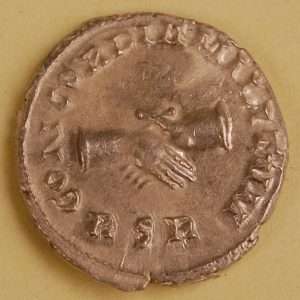
Reverse of a Carausius silver denarius from the Hoard, showing two clasped hands (symbolising the unity of the ruler and the army), alongside the abbreviation 'RSR'. This alludes to a line from Virgil's Eclogues - Redeunt Saturnia Regna or "The Golden Ages have returned". Horemheb and Tutankhamun?

The cycle of Saturn?
"The three decades Jesus spent in Nazareth are commonly called "the silent years", with the Gospels telling us close to nothing about that long period in his life. Over the centuries, Christians have sought for sites suitable for commemorating events from Jesus' life in his home village."
''Multiplication'' to enlarge.
'On Having No Head: Zen and the Rediscovery of the Obvious' / D. E. Harding.
"The primary object of every intelligent person must be to deny the corporeality of 'God', and to believe that all godly perceptions are of a spiritual not of a 'material' character. Note this and consider it well. ['Guide for the perplexed'].
Think about it in relation to those Signs/Keys/ Correspondences etc. All as a means...?

Finger or thumb?
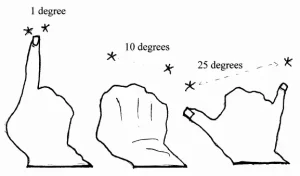 "The gnostic sense begins to operate when it is a matter of a new dimension in the act of knowledge, namely that of depth. It becomes active when it is a question of something deeper than the question: is it true or false? {and/or yes or no. Enlarged elsewhere}. It perceives more the significance of the truth discovered by discursive thought and also ''why this truth is truth in itself'', i.e.,it reaches to the 'mystical' or essential source of this truth. How does it arrive at this? By listening in silence. It is as if one wanted to recall something forgotten. Consciousness, ''listens'' in silence, as one ''listens'' inwardly in order to call to mind from the night of forgetfulness something that one formally knew. But there is an essential difference between the ''listening silence'' of contemplation and the silence arising from the effort to recall...
"The gnostic sense begins to operate when it is a matter of a new dimension in the act of knowledge, namely that of depth. It becomes active when it is a question of something deeper than the question: is it true or false? {and/or yes or no. Enlarged elsewhere}. It perceives more the significance of the truth discovered by discursive thought and also ''why this truth is truth in itself'', i.e.,it reaches to the 'mystical' or essential source of this truth. How does it arrive at this? By listening in silence. It is as if one wanted to recall something forgotten. Consciousness, ''listens'' in silence, as one ''listens'' inwardly in order to call to mind from the night of forgetfulness something that one formally knew. But there is an essential difference between the ''listening silence'' of contemplation and the silence arising from the effort to recall...
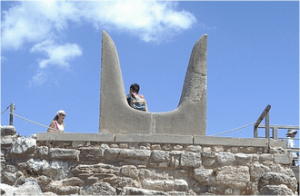
Bull of the Sky?
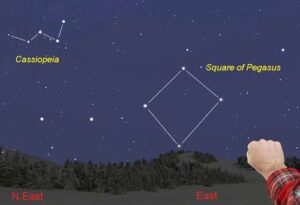 In this second situation, it is the horizontal - in time, past and present - which comes into play, whilst the ''listening silence'' of contemplation relates to the vertical - to that which is above and that which is below. In the act of recall, one establishes in oneself an inner mirror in order to reflect the 'past': when one ''listens in silence'' in the state of contemplation, one also makes consciousness into a mirror, but this mirror has the task of reflecting that which is above. It is the act of recall in the vertical." [Taken from the book by Tomberg].
In this second situation, it is the horizontal - in time, past and present - which comes into play, whilst the ''listening silence'' of contemplation relates to the vertical - to that which is above and that which is below. In the act of recall, one establishes in oneself an inner mirror in order to reflect the 'past': when one ''listens in silence'' in the state of contemplation, one also makes consciousness into a mirror, but this mirror has the task of reflecting that which is above. It is the act of recall in the vertical." [Taken from the book by Tomberg].
La Tene to enlarge.
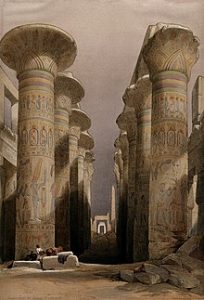
The middle ground.
Side note: "The cause, the first mystery {White chapel?}, can have but one aim: the second mystery {'Osiris'}, and then the final equilibrium in the Present Moment." [Page 12 'The Egyptian Mystery'].
'Second to none'.
 In other words all the above could be described as the process and benefit of ''objectivity'' in understanding something. Its step by step guide. This 'subject' [in parts and whole] - being in this case - its aim. Represented in the above paragraph as horizontal / vertical, i.e., contemplation of the vertical, i.e., universal framework and/or especially what all infer by the ''divine bit'' [''mystical'' link] - from the 'horizontal' position,i.e., from a horizontal perspective or viewpoint. That 'process' of learning that within this subject is represented [in the Egyptian case] with ''in profile'' as opposed; to ''face on''.
In other words all the above could be described as the process and benefit of ''objectivity'' in understanding something. Its step by step guide. This 'subject' [in parts and whole] - being in this case - its aim. Represented in the above paragraph as horizontal / vertical, i.e., contemplation of the vertical, i.e., universal framework and/or especially what all infer by the ''divine bit'' [''mystical'' link] - from the 'horizontal' position,i.e., from a horizontal perspective or viewpoint. That 'process' of learning that within this subject is represented [in the Egyptian case] with ''in profile'' as opposed; to ''face on''.
'On Having No Head: Zen and the Rediscovery of the Obvious' / D. E. Harding.
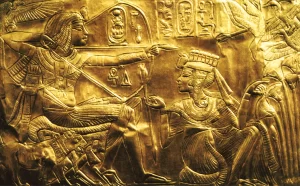
Giving directions?
A working example: Now we speak to-night of Personal Aim, in the Work-sense, on Being.
The most general definition of what aim means in the Work sense is that it is to hear what the Work teaches and to do what it says. Aim in the Work is always connected with the act of self remembering. This is because in the state of self remembering a man can receive help, which cannot reach him in his ordinary states of consciousness. Certain influences in the Universe can only penetrate as far as the third state of consciousness where a man is conscious to himself or self-conscious. If at the same time as he remembers himself he remembers his aim, he may get help. For example, he may understand his aim better.....
In regard to Work on Being, the first aim in this Work is self knowledge—Knowledge of one’s Being. This applies to everyone. Knowledge of the Work is one thing: self knowledge is another thing. Without self-knowledge you cannot make any aim about yourself. Real self-knowledge as distinct from imaginary ideas and illusions about oneself can only come from direct and long-continued personal observation of the different sides of oneself. That is why this Work begins with self observation....
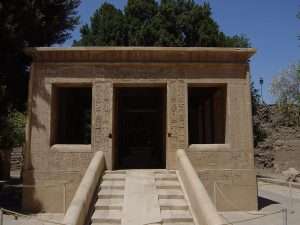
White Chapel. Karnac. Its very first.
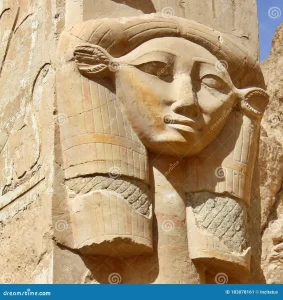
Large or small?
Many people in the Work find difficulty in understanding what personal aim means, in regard to work on the side of their Being—that is, on the kind of people they mechanically are. Here is a definite stage in the Work. They cannot see what to work on in themselves. One reason is that they do not apply the ideas of the Work to themselves and do not try to do what the Work tells them to do. They do not observe themselves from this angle. Being satisfied with themselves in life, they do not see the place, so to speak, where Work on themselves begins. They are not estimating themselves from what the Work says but from life standards. But the Work-standards are quite different from life-standards. You may be all right in life but all wrong in the Work. That is why it is necessary to realize that the Work is anew way of thinking. It is a new standard, a new thing altogether, from which you can begin to estimate yourself in quite another light—not in the light of external life but in the light of the Work. The Work is to make you think differently —it is to change your mind, change your ways of thinking, so that you begin to look at yourself in a new way. (This is metanoia). Imagine a collection of monkeys. They may be perfectly good monkeys and satisfied with themselves. But if they have to become responsible human beings, they must follow a new way of thinking, a new conception of what they must be. And, from the standpoint of conscious humanity —that is, fully developed men who have reached the level of the divine Intelligence of the Sun and its laws— we are nothing but monkeys and of really no importance. We are nothing but an experiment in self evolution.
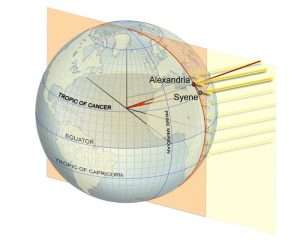
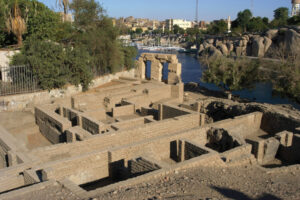
Three boulders began the temple construction through many generations. Avebury?
All personal aim on a small scale is a means, not an end. It is to make you think and awaken, to keep you awake. Aim is on different scales. Aim on a great scale is to be awakened from sleep, to attain inner liberation. But to say that this is one’s aim is not enough. You may see something in the far distance as your aim but in order to get to it you find that many lesser aims are necessary. You may say you want to go to China. But to get there, you must do many things in between and you must have enough money to buy a ticket. Mr. Ouspensky said that aim is like this: You see far off a light that you wish to reach. But on approaching it, you find many lesser lights, like lamp-posts along a road, that you must pass one by one, before you attain the final aim. Let us suppose a man aims at becoming a conscious man, and escaping from the circle of mechanical humanity. He does not, of course, understand what this means—that is, he does not understand his aim. To become No. 5 or 6 or 7 Man, a man must first become No. 4 man—that is, Balanced Man, a man in whom all his centres work rightly— Intellectual, Emotional, Instinctive-Moving. Now to become balanced a man must begin to notice what centre in him predominates and interferes with the proper development of his other centres. {'Psychological Commentaries on Gurdjieff and Ouspensky' / M. Nicoll}.
''The word 'mystery' comes from the Greek 'myein', to keep silent....The real secret about the mysteries is that they cannot be communicated by one being {'teacher'?} to another: the mystery guardian can only give guidelines and keys to knowledge, not actual knowledge itself, which is revealed to the initiate by personal experience and {or?} revelatory realisation." ['The Wester Way: A Practical Guide to the Western Mystery Tradition'. Chapter 1].

Crystal Clear?
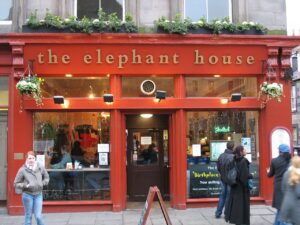
"The Elephant House was one of the cafés in Edinburgh where Rowling wrote the first part of Harry Potter." Did she really have an innate understanding of all that symbolism?
A proven: ''I decided to test Joe Campbell hypothesis that myths are corporeal or at least contained innately in the memories of sinews and the caches of the brain....I would have to look for them in their PUREST form in the minds of children - and not just any children, but ones who had not been exposed to radio, television, or movies, from which they could have picked up mythic stories....I was looking for the causal zone of myth. After a search i was able to locate a number of children whose parents refused to have any media in the house.'' [Page 95 'A Mythic Life' / J. Houston].
The author goes on to describe a ''new story'' as requested of a young man called Jimmy who searches within himself for one. Briefly; VERY briefly: ''Once upon a time there was a little boy, who had a mummy; loved his mummy, married her; had many babies; and then goes away with his sister.'' The author believing the above relates to the Oedipus myth. For this reader it relates more to the Egyptian culture - Pharaohs, mothers and sisters. Meritaten in particular. Enlarged elsewhere. A more PROVEN example - for this reader - with possible synchronistic links would be:
'The Fairytale Castles of King Ludwig II by Dan Cruickshank'.

Xmas Tree?
 A practical example: ''I think this is the hardest thing i've ever done. But i will tell you without shame, that i pray i come out of here a better man, and a thankful man, for all my blessings....I've been told countless times i'm to much to hang around with - the reason i don't have many friends....I've been thinking of all the people i've neglected along the way....Especially mother and father....Life's a tragedy all around for all of us, but now i'm sat here in Rock House with all this time on my hands, at the apex of my career, it gives time for thought - {reflection} 'i feel i hav'nt done my family right especially parents and sister....I,ve pursued everything that I wanted to do without considering them - but in the end it can only be what it is - 'it is what it is' - I like that saying....Todays day ninety-nine; Christmas Day. I plant this Christmas tree with this star i made on top at Rock House. I'II never forget this Christmas. Never as long as i live....I never thought that anything could change me or crack me, but i'm certainly going to be a more thankful man....{Day after} ''Today is day 100. This is a great day for me. Very
A practical example: ''I think this is the hardest thing i've ever done. But i will tell you without shame, that i pray i come out of here a better man, and a thankful man, for all my blessings....I've been told countless times i'm to much to hang around with - the reason i don't have many friends....I've been thinking of all the people i've neglected along the way....Especially mother and father....Life's a tragedy all around for all of us, but now i'm sat here in Rock House with all this time on my hands, at the apex of my career, it gives time for thought - {reflection} 'i feel i hav'nt done my family right especially parents and sister....I,ve pursued everything that I wanted to do without considering them - but in the end it can only be what it is - 'it is what it is' - I like that saying....Todays day ninety-nine; Christmas Day. I plant this Christmas tree with this star i made on top at Rock House. I'II never forget this Christmas. Never as long as i live....I never thought that anything could change me or crack me, but i'm certainly going to be a more thankful man....{Day after} ''Today is day 100. This is a great day for me. Very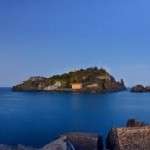 great. Just struck off day one hundred on this calendar tree. Day one - all the way down there at the base...I dedicate this day to my deceased mother....{reflection} ''I've always been alone. Even when i'm with someone or in a crowd - a sort of island that way.... Its dead silent right now, dead silent and calm. Everything has a rhythm and a beat and a silence....i just love to hear that dead silence - if that makes any sense." [Roland / winner of 'Alone' / History Channel/ 2020].
great. Just struck off day one hundred on this calendar tree. Day one - all the way down there at the base...I dedicate this day to my deceased mother....{reflection} ''I've always been alone. Even when i'm with someone or in a crowd - a sort of island that way.... Its dead silent right now, dead silent and calm. Everything has a rhythm and a beat and a silence....i just love to hear that dead silence - if that makes any sense." [Roland / winner of 'Alone' / History Channel/ 2020].
Try Billy Connolly for another.
Crackstone Ridge?
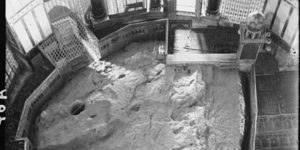
Hole in the S/E corner of the FOUNDATION stone within the Dome of the Rock. A ''light'' may shine through it. Recall the ''help'' section in relation to ''eye''. Anything?
Analogy: ''The best day of my life - my rebirth day, so to speak - was when I found I had no head. This is not a literally gambit, a witticism designed to arouse interest at any cost. I mean it in all seriousness.
I have no head.
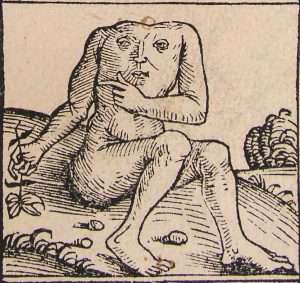
Sunrise or sunset? Moonrise?
It was when I was 33 that I made the discovery, though it certainly came out of the blue, it did so in response to an urgent inquiry - I had for several months been absorbed in the question: What am I?....What actually happened was something absurdly simple and unspectacular: just for the moment I stopped thinking. Reason and imagination and all mental chatter died down. For once words really failed me. I forgot my name, my humanness, my thingness, ALL that could be called me or mine. Past and future dropped away. It was if I been born in that instant, brand new, mindless, innocent of all memories, there existed only the Now, that present moment that was clearly given in it. To look was enough....It took me no time at all to notice that this nothing, this hole where a head should have been was no ordinary vacancy {void?} no mere nothing...

Astraea/Erigone?
On the contrary, it was very much occupied...." [Chapter one entitled 'The True Seeing' from the book 'On Having No Head'].
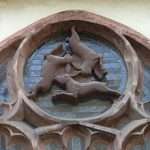 Or New Testament equivalent; Matthew 5:37, i.e.,''let your communication be yes or no...'']. Both enlarged elsewhere. 'See' it? i.e.,the result of which = a eureka moment. Representational of. Hermetic equivalent..."Fusion, inner unity, is obtained by means of 'friction', by the struggle between 'yes' and 'no' in man. If a man lives without inner struggle; if everything happens to him without opposition; if he goes wherever he is drawn or wherever the wind blows, he will remain such as he is. But if a struggle begins in him {'fire'?}, and particularly if there is a definite line in this struggle, then, gradually, permanent traits begin to form themselves, he begins to 'crystallise'. Crystallisation is possible on any foundations." [Extract from the book by Tomberg. 'Letter Xiii' ].
Or New Testament equivalent; Matthew 5:37, i.e.,''let your communication be yes or no...'']. Both enlarged elsewhere. 'See' it? i.e.,the result of which = a eureka moment. Representational of. Hermetic equivalent..."Fusion, inner unity, is obtained by means of 'friction', by the struggle between 'yes' and 'no' in man. If a man lives without inner struggle; if everything happens to him without opposition; if he goes wherever he is drawn or wherever the wind blows, he will remain such as he is. But if a struggle begins in him {'fire'?}, and particularly if there is a definite line in this struggle, then, gradually, permanent traits begin to form themselves, he begins to 'crystallise'. Crystallisation is possible on any foundations." [Extract from the book by Tomberg. 'Letter Xiii' ].
Link to ''Temple'' symbolism. For a deeper 'read' try ''wrestle'' or 'crystallize" and/or especially ''line of sight'' in the usual box - before those first impressions dictate {suggest?} something else.
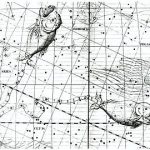
Fishers of men?
''When fishing became my therapy; i wondered why it was having such a positive affect on me. Then i discovered the psychologist Mihaly Csikszentmihalyi. He's famous for coming up with the practical theory that something that can completely engross you can help many mental health conditions {including boredom? - recall Part 1}. He calls it ''Flow''. The concept of flow. BEING in the flow, in the zone, in the moment - its a fairly new term - its also as OLD AS THE HILLS {al-Qurn?}. Its Eastern philosophy, its Buddihism, its Zen, all those things. Its about losing oneself in the MOMENT. And we all know what being in the zone is - its when time stands still {'Saturn'?]. Concerns whether they be about money, relationships, profession, career etc - all the mundane stuff - just falls to one side {'in profile'?} - and you are just FOCUSED in the moment....A state of equilibrium. ['Robson and Jims Fly-fishing Adventure in Iceland' / ITV].
Landscape equivalent {can you 'see' it?}: "It is also remarkable that the exact explanation of the 'light of the moon' was almost founded by the Egyptians. 'Khonsu-lo' - light of the night - image of the left eye of Amon {Amun}, rising in the Bahkt { East}. While Aton {the Sun} is in the Ankhet {West}. Thebes is flooded with their light, for the left eye receives the light of the right eye when they are re-united on the day when the two bulls meet. The only reservation to be made is that this short text appears to refer to the refection of the solar light by the moon - at the moment of opposition." [Quote by Philippe Derchain from the book 'Serpent in the Sky' by J. West].
Side note: "The manifestation of Atum-Ra between the twin peaks of the mountain of the horizon." [Picture of same, page 256 'Temple of the Cosmos'].
Continued: Question. ''At the moment of opposition'' relative to - ''if everything happens to him without opposition'' {two para's back} represented with New {dark} moon and its cycle to Full moon. All as a means...?
Therefore Libra {'scales'} and/or 180 degrees? And/or: Planets within a ''line of sight'' {conjunction?} together with ''full moon'' = ?
'Mysteries of the Dark Moon' / D. George.
A more practical example of same could be the book ' Play of Consciousness' by Swami Muktananda. Understanding what all cultures infer by the ''Divine bit''[within the same acclaimed 'framework'] gives a credible logic; a credible hypothesis; in understanding that internal 'story'. "What is understood intellectually through books and study can be experienced directly through Siddha Yoga." [Chapter 24, 'Play of Consciousness'].
And/or therefore - vice versa.
"Traditionally, there were two methods for understanding the message of the Yoga Sutras. The first method relied on a teachers commentary to unlock the abstract and sometimes difficult to comprehend information presented in the text. The second method relied on the students own inner capacity to find the meaning of each sutra through contemplative inquiry. In most cases, both are necessary for maximum comprehension. The words of the teacher can point the student in the right direction to grasping the truth, but it is up to the student to gain direct perception of the truth that is implied. Otherwise, no actual learning takes place." [From the book 'Kriya Yoga' by R. Kurczak].
As seen from a different 'angle' and/or perspective..."Magic was seen as an aspect of science as well as religion, and its roots were traced back thousands of years through the wider reconstruction of the history of the written knowledge." [Quote from the book by Owen Davies].
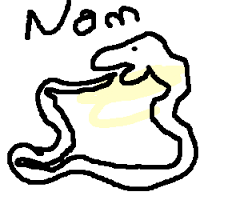
As part of that ''true poetry''. Others found throughout.
From a different perspective: ''My thesis is that the language of poetic myth anciently current in the Mediterranean and Northern Europe was a' magical' language bound up with popular religious ceremonies in honour of the moon goddess, or muse, some of them dating from the Old Stone Age, and that remains the language of TRUE poetry....but it is only fair to warn the reader that this remains a very difficult book, as well as a very queer one {'peculiar'?}, to be avoided by anyone with a distracted, tired or rigidly scientific mind...." [Forward to the book 'The White Goddess' / R. Graves].
Side note: Why a 'serpent'? Crawls on belly {horizontal?} but can strike in the vertical? Can be found in both salt and fresh water? Sheds its skin? etc. All as a means...?
Try ''poison/antidote''.
Refresher: "The children of Seth [Set] first possessed that peculiar sort of wisdom, which is concerned with the heavenly bodies",[chapter five.' The Sirius Mystery'],
Try ''magic'' before those first impressions hint {'lie'?} at something else.
"The task of the scholar of esoteric studies is not to prove that such an invisible 'tradition', hidden behind the veil of historic events, did or did not exist; as such; before the Renaissance; rather, the task consists of trying to grasp and to describe the different facets of the emergence of this idea as it appears in the imaginary and the discourses of the last centuries [and/or millenniums. This readers input]. Quote by A. Faivre.
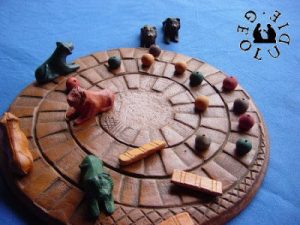
The Mehen board game.
From a different perspective: "...dreams are a source of great wisdom and insight. This is true of the following dream - dreamt by a woman soon after she came to a Sufi group: 'I am being kissed by a man. it is the most wonderful experience. It is not sexual, just a pure feeling of love in the heart. It touches me in the heart very deeply. But then I feel a tongue in my mouth, and it is not his tongue. I open my eyes and see that I am embracing a serpent, and it is the serpents tongue in my mouth. I feel frightened.' This dream contains two images that symbolize fundamental aspects of the Sufi path, the lover and the serpent. Sufism is a love affair, a relationship between the lover and the Beloved .'' [Intro to the book 'The Lover and the Serpent' / Llewellyn Vaughan Lee].
Question. ''Fundamental aspects'' = the understanding of that universal ''bit''? i.e., whatever we take an interest in especially those 'habitual' ones - do we not sooner or later dream about them? The real question is what does that really mean in relation to that ''bit'' should it be something more real than a MIND SET.
Songs of Solomon?
A {working?} example: "I was at the same cafe where i met G. the next day, and the day following, and every day afterwards. During the week i spent in Moscow i saw G. every day. It very soon became clear to me that he knew very much of what i wanted to know. Among other things he explained to me certain phenomena i had come across in India which no one had been able to explain to me either there, on the spot, or afterwards. In his explanations i felt the assurance of a specialist, a very fine analysis of facts, and a system which i was not able to grasp until then - because G.'s explanation made me think not only of the facts under discussion, but also of many other things i had observed or conjectured." ['In Search of the Miraculous'].
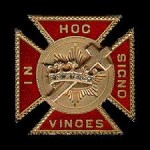
Latin...''in this sign you will conquer''. Question. Conquer what? Look up horizontal / vertical for clues. Also N/E - S/W : as a beginning of what? Question. Top/down or bottom/up?
"One of the main means whereby man arrives at an understanding of that great sum total we call the Macrocosm - 'God', functioning through a solar system - is by an understanding of himself, and the Delphic injunction ''Man, know thyself'' was an inspired utterance, intended to give man the clue to the mystery of deity. Through the Law of Analogy, or correspondence, the cosmic processes, and the nature of the cosmic principles are indicated in the functions, structure and characteristics of a human being. They are indicated but are not explained or elaborated. They serve simply as signposts [or keys], directing man along the path whereon future sign posts may be found and more definite indications noted." [Introduction to the book by Alice Bailey].
Recall what ''correspondence'' implies.
"The sign expresses the thing. A thing is the virtue of its sign. There is an analogical correspondence between the sign and the thing signified. The more perfect the sign, the more complete is the correspondence." Quote taken from the book by E. Levi.
'God is in the detail' ?
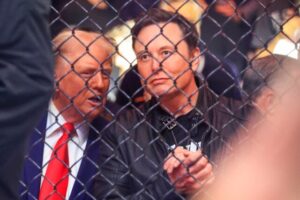
Apeing god? Which zoo?
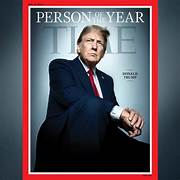
"I dont want to sound cute or be a wiseguy but we need to turn that demolition site into the Riviera of the Middle East." Can he understand anything outside of dollars, cents and dimes? Just Ignorant to ALL those thousands of years of spiritual history?
"A thing has no existence relatively to ourselves before we become conscious of its existence...The term consciousness signifies realization of existence relative to a certain thing. Consciousness in the absolute sense is unconsciousness in relation to things... Consciousness means knowledge and {of?} life, unconsciousness is ignorance and death..." Quotes taken from the book by F. Hartman. [Parenthesis, this readers].
'Devil in the detail'.
Example: 'To spit {snake?} in the face of ignorance'?
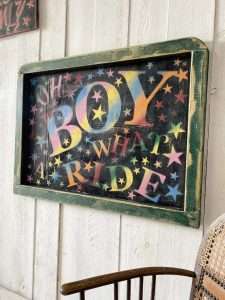
''Sold to the owner of a 'Bed and Breakfast' - who hung it above his bed.'' {'Salvage Hunters' / S7 EP4}.
"...the word Yoga is a sanskrit term meaning to unite the individual with the 'Cosmic'. The term has been used in certain parts of this book for ease of communication since the word ''Yoga'' has received wide popularity especially in western countries in recent years. The ancient Egyptian equivalent term to the Sanskrit word yoga is: ''Smai'' - which means union, and the following determinative terms give it a spiritual significance, at once equating it with the term ''Yoga'' as it is used in India. When used in conjunction with the ancient Egyptian symbol which means land, ''Ta'' the term 'union of the two lands' arises." [Extract taken from the book by Sebai Ashby].
''TA'' link to Tatenem {'T'?} and/or Taten - some say the 'God' of the ''Primordial Mound''. Memphis one of his/her main locations. The border of both upper/lower Egypt. The Sycamore tree being one of its emblems. To meditate [and/or study] by way of higher and lower = a result?
Side note: ''People assume they can never meditate because they cant stop thinking. I cannot say this enough: the goal is not to clear your mind but to focus your mind - for a few nanoseconds at a time - and when ever you become distracted all you need to do is just start again. Getting lost and starting over is not failing at meditation. It is succeeding.''[Readers Dijest / August 2021].
Continued: "Egyptian mythology, when understood as a system of Yoga [ union of Upper /Lower}. Enlarged elsewhere], gives every individual insight into their own divine nature and also a deeper insight into all religions and Yoga systems." [Same book].
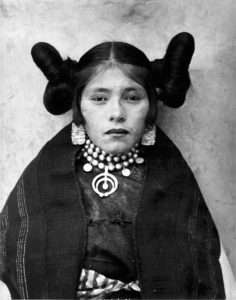
Central figure, upside down?
N.B. ''Higher'' = Vulture - Lotus - Reed or Su plant. ''Lower'' = Cobra - Papyrus - Bee. All as a representation of something. As a means...? Enlarged within.
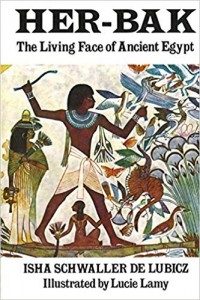 'Higher'/'lower' in relation to: ''You have seen desert mirages; they seem to depict real landscapes, they are deceptive and upside - down. Thus it is with illusory pictures of the Field of Reeds. Everything that is registered in the emotional life is reflected in the ''robe of Nut'' or Akashic screen and lasts for a time that is determined by the life of the lower consciousness involved. Those who live in the Field of Reeds are such as still feel drawn to the 'shade' to the attractions of Earthly existence; they relive the 'mirage' …..in the grip of 'hostile' forces that prevent their passing to a higher state....slaves of the Me....the Field of Reeds and the Field of Offerings are to be regarded as inferior heavens...they are shown with lakes and streams....awaiting successive changes; with islands to signify that one is stuck in certain conditions - it is a question of ''making one's own plant grow in the marches'', a new subtle body that is comfortable with the new state {'city'?} of affairs - fit to shew the ''true face''. [Page 215/6 'Her-Bak: Egyptian Initiate' / Isha Schwaller de Lubicz].
'Higher'/'lower' in relation to: ''You have seen desert mirages; they seem to depict real landscapes, they are deceptive and upside - down. Thus it is with illusory pictures of the Field of Reeds. Everything that is registered in the emotional life is reflected in the ''robe of Nut'' or Akashic screen and lasts for a time that is determined by the life of the lower consciousness involved. Those who live in the Field of Reeds are such as still feel drawn to the 'shade' to the attractions of Earthly existence; they relive the 'mirage' …..in the grip of 'hostile' forces that prevent their passing to a higher state....slaves of the Me....the Field of Reeds and the Field of Offerings are to be regarded as inferior heavens...they are shown with lakes and streams....awaiting successive changes; with islands to signify that one is stuck in certain conditions - it is a question of ''making one's own plant grow in the marches'', a new subtle body that is comfortable with the new state {'city'?} of affairs - fit to shew the ''true face''. [Page 215/6 'Her-Bak: Egyptian Initiate' / Isha Schwaller de Lubicz].
Vegetate.
Shrew?

Live queen moor?
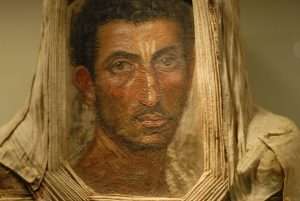
New face?
Side note: ''The Welsh Marches (Welsh: Y Mers) is an imprecisely defined area along the border between England and Wales in the United Kingdom. The precise meaning of the term has varied at different periods. The English term Welsh March (in Medieval Latin Marchia Walliae)[1] was originally used in the Middle Ages to denote the marches between England and the Principality of Wales, in which Marcher lords had specific rights, exercised to some extent independently of the king of England. In modern usage, "the Marches" is often used to describe those English counties which lie along the border with Wales, particularly Shropshire and Herefordshire, and sometimes adjoining areas of Wales. However, at one time the Marches included all of the historic counties of Cheshire, Shropshire, Herefordshire, Worcestershire and Gloucestershire.
In this context the word march means a border region or frontier, and is cognate with the verb "to march," both ultimately derived from Proto-Indo-European *mereg-, 'edge' or 'boundary'...''
''Running the Fields''.


The Pale Blue Dot is a photograph of Earth taken Feb. 14, 1990, by NASA’s Voyager 1 at a distance of 3.7 billion miles (6 billion kilometers) from the Sun. Close to the edge of our solar system. The image inspired the title of scientist Carl Sagan's book, "Pale Blue Dot: A Vision of the Human Future in Space," in which he wrote: "Look again at that dot. That's here. That's home. That's us."
And/or: "This even speaks of an earlier time when written language was first developed from the only two possible basic elements; the dot {or circle} and the line. Alphabetically it has been shown that Egyptian developed into Protosinaitic, then Phoenician, which traders spread across the world where it became Early then later Greek, and finally Latin. The Egyptian eye became O and the cross became T." ['Revealing the Green Man' / M. Olly].
And/or: "Marara created for women are largely missing from the archaeology record....There's just one published reference, from 1897, to a potential woman's marara. This tree carving is described as a diamond with a small encircled dot at its center, but little else about it is recorded." [Page 35 'Archaeology' / Sep-Oct 2024].
 Try ''line of sight'' to 'see' something since the dawn {'horizon'?} of human thought {oral tradition?}.
Try ''line of sight'' to 'see' something since the dawn {'horizon'?} of human thought {oral tradition?}.
Recall the 'cross' on the Isle of Philae. Enlarged elsewhere.
Philemon?
"The respected scholar Dr. David Frawley, Director of the American Institute of Vedic Studies, writing in the bimonthly journal 'Yoga International' [oct/nov. 1996], states - ' Yogananda can be said to be the father of yoga in the West - not the mere physical yoga that has become popular, but the spiritual yoga - the science of self realization - that is the real meaning of yoga." [Extract from the book 'Autobiography of a Yogi'. Mentioned elsewhere]. |
Tatenen:

Tatenen. Question. Green?
 Tatenen is a chthonic deity who in many respects is comparable to the earth god Geb. His realm is the deep regions underneath the earth from which everything emerges, plants and vegetables, but also minerals, all of which belong to Tatenen.
Tatenen is a chthonic deity who in many respects is comparable to the earth god Geb. His realm is the deep regions underneath the earth from which everything emerges, plants and vegetables, but also minerals, all of which belong to Tatenen.
Tatenen is first attested in the Coffin Texts,where his name appears as Tanenu or Tanuu, 'the inert land', a name which characterizes him as a god of the primeval condition of the earth. As such he is shown with two snakes on his head, an indication of the chthonic character of the god. Middle Kingdom texts also provide the first examples of the form Tatenen, 'the rising/risen/exalted land', i.e. the primeval hill on which the creator god appeared at the beginning of creation, and this soon became the usual form of the god's name. From the 19th Dynasty on Tatenen is linked to the Memphite god Ptah as Ptah-Tatenen. This deity is then worshipped as a royal god and as a creator god; as such he can even be called the father of the Ogdoad of Hermopolis, the eight gods who themselves embody the primeval elements from before creation. Ptah-Tatenen is usually depicted in human form wearing a crown consisting of a pair of ram's horns surmounted by a sun disk and two tall feathers.
All as a means...?
Something hinted at: "And he plucked a faceted crystal from his pocket...held it up to the sunlight....spread a rainbow pattern in all its splendour. 'There in the 'middle'. Do you see? Green the shade of balance {'Libra'?} - between the 'upper' active kingdoms of Fire and Air, and the 'lower' passive kingdoms of Earth and Water - three-one-three - a threshold colour...." [Page 255 'The Deeper Teachings of... by D. Monroe'].
'High on the Hog'?
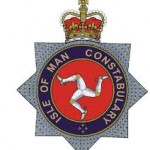
Hello, Hello - Anything? Try ''three and the one''.
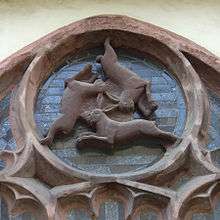
Man in the moon? hare?
"There is much to be learned concerning the use that was made by the ancient initiated priesthood; of the fact that the gods and goddesses ; are three aspected; by watching with the inner eye [i.e., objective analysis] what is done in group meditations by those Orders -that have recovered something of these ancient methods from their own unpublished manuscripts as well as from the published works of Briffault and Frazer, as well as from the books of many other scholars..." [From the chapter entitled 'Old Religion' from the book 'The New Dimensions Red Book'. Mentioned elsewhere].
"In the Pagan Mysteries, beginners were known as 'mystae', meaning 'those with eyes closed', and enlightened initiates were known as 'epopteia' meaning, 'those who can see'." [From the book by T. Freke and P. Gandy].
'Mans Search for Meaning' / Viktor Frankl.
"The true voyage of discovery, lies not in seeking new landscapes, but in having new eyes." Marcel Proust.
And/or: A mind set?
A working example: I hope that the reader, after having followed through a multitude of centuries the diverse phases of the Social State, and having progressed from causes to effects with a chain of physical and metaphysical proofs which no doubt have not escaped his sagacity, will follow with attention the corollary which I am going to present for his meditation, so as to draw from it for the future, useful inductions and luminous conclusions regarding what may or may not be.....
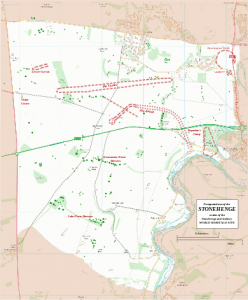
The Oxford English Dictionary cites Ælfric's 10th-century glossary, in which henge-cliff is given the meaning 'precipice', or stone; thus, the stanenges or Stanheng "not far from Salisbury" recorded by 11th-century writers are "stones supported in the air". In 1740, William Stukeley notes: "Pendulous rocks are now called henges in Yorkshire ... I doubt not, Stonehenge in Saxon signifies the hanging stones."[14] Christopher Chippindale's Stonehenge Complete gives the derivation of the name Stonehenge as coming from the Old English words stān 'stone', and either hencg 'hinge' (because the stone lintels hinge on the upright stones) or hen(c)en 'to hang' or 'gallows' or 'instrument of torture' (though elsewhere in his book, Chippindale cites the 'suspended stones' etymology).[15]
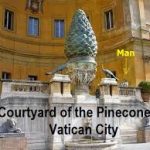
Three pine mesolithic postholes found under the car park at Stonehenge.
I shall have much to say in the following work concerning these three powers, and I shall describe as much as is possible for me, their respective action and the part that each of them takes in the diverse events which vary the scene of the world and change the face of the universe. They will be seen appearing together for the first time as motive causes independent one of the other, although equally bound to the unique Cause which rules them, acting according to their nature, jointly or separately, and giving thus sufficient cause for all things. These three powers considered as primal causes are very difficult to define; for, as I have already announced, one would never be able to define a principle; but they can be known by their acts and grasped in their movements, since they do not leave the sphere in which individual man is included as an integral part of Universal Man. What opposes the idea that God may be known and grasped in the same manner as these three powers which emanate from Him is the fact that this absolute Being contains them without being contained and enchains them without being enchained. He holds, according to the beautiful metaphor of Homer, the golden chain which envelops all beings and which descends from the heights of brilliant Olympus to the centre of shadowy Tartarus; but this chain which He moves at His pleasure leaves Him always immobile and free. Let us content ourselves to adore in silence this ineffable Being—this God besides whom there is no other god and, without seeking to sound His fathomless essence, search to understand the powerful ternary in which He is." ['Hermetic Interpretation of the Origin of the social State of Man'}.
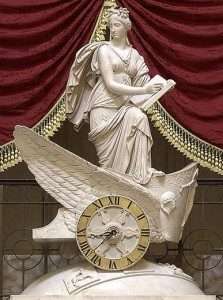
'Wheels' of time?
The Flying Ford Anglia was a light blue Ford Anglia 105E Deluxe that was enchanted by Arthur Weasley to fly,[2] as well as to become invisible, with the use of a specially installed device called an Invisibility Booster. It was also modified so that it could fit ten people, six trunks, two owls, and a rat comfortably.[1]
'Nineteen' or 'twenty'?
 Analogy of same..."The journal may also provide assistance to those who follow in the 'golden chain' of initiation, providing them with useful information on the short-cuts and dead ends in the labyrinth." [Extract from the book 'The Magister'. Mentioned elsewhere].
Analogy of same..."The journal may also provide assistance to those who follow in the 'golden chain' of initiation, providing them with useful information on the short-cuts and dead ends in the labyrinth." [Extract from the book 'The Magister'. Mentioned elsewhere].
''...golden chain'' in relation to ''nuggets'' {of information}. Enlarged elsewhere.
Side note: A small golden chain {three links?} were supposedly found in the shaft of the 'money pit' on Oak Island. Coincidence or a meaningful one?
The Oak tree that a ''lightening strike'' hits most often. Anything?
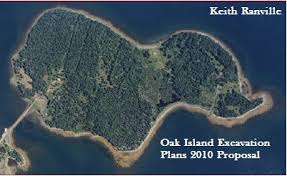
REASON for the origin of the name?

''Heart of oak are our ships, heart of oak are our men.''
A work in progress: "The mark on Harry Potter’s forehead is no ordinary scar. Its unique shape – a jagged lightning bolt – and its location, on the right side of his forehead, give it a distinct look that becomes an integral part of Harry’s identity. Unlike typical scars that might result from accidents or fights, this one comes from the Wizarding World’s most notorious villain, Voldemort. The scar isn’t merely a symbol of Harry’s past; it also serves as a connection to the dark wizard who left it there, providing insights into the mystical and often dangerous world of magic that Harry is thrust into.....

Dresden {Saxony} Germany. Rooster on top. Rooster also on top of Notra Dame roof. 'Forest of oaks'.
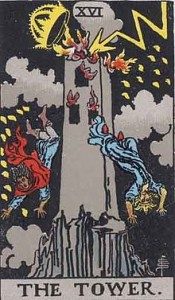 The origin of Harry’s scar traces back to a fateful night in Godric’s Hollow. When Harry was just a baby, Voldemort, hearing a prophecy that a child born at the end of July could potentially defeat him, decided to eliminate the threat. He chose Harry as this possible threat and broke into the Potters’ home, killing both of Harry’s parents, James first and then Lily. When Voldemort turned his wand on Harry and cast the Avada Kedavra curse, things didn’t go as planned.
The origin of Harry’s scar traces back to a fateful night in Godric’s Hollow. When Harry was just a baby, Voldemort, hearing a prophecy that a child born at the end of July could potentially defeat him, decided to eliminate the threat. He chose Harry as this possible threat and broke into the Potters’ home, killing both of Harry’s parents, James first and then Lily. When Voldemort turned his wand on Harry and cast the Avada Kedavra curse, things didn’t go as planned.
The Avada Kedavra curse, also known as the killing curse, is one of the three Unforgivable Curses and is known for its deadly power. There’s no known counter-curse, and no known witch or wizard had ever survived its direct hit, until Harry. On that night, Lily Potter’s sacrificial protection, triggered by her choice to die instead of stepping aside, shielded Harry. When Voldemort cast the killing curse, it rebounded off Harry, destroying Voldemort’s physical body and marking Harry with the now infamous lightning bolt scar...
'Lotus'?

A Pict symbol. Question. Goggle-eyed? A weaving pattern within the crescent of something? Enlarged elsewhere.
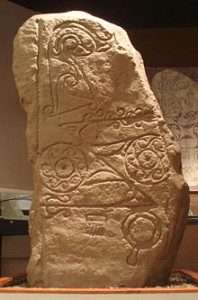 The aftermath of this event was as astonishing as the event itself. Harry became known as “The Boy Who Lived,” the only known survivor of the killing curse. The scar became a symbol of his survival and the hope of the wizarding world. But it was more than a mere mark; it was also a magical link between Harry and the Dark Lord he’d yet to fully understand....
The aftermath of this event was as astonishing as the event itself. Harry became known as “The Boy Who Lived,” the only known survivor of the killing curse. The scar became a symbol of his survival and the hope of the wizarding world. But it was more than a mere mark; it was also a magical link between Harry and the Dark Lord he’d yet to fully understand....
“…he was glaring at the face staring back from the cracked mirror on the wall next to the desk. It was almost completely hidden by a tangle of bushy, unbrushed hair, but there was no concealing the bright red zigzag scar on Harry’s forehead, which was still throbbing painfully under his fingers. Just above his right eye, a pulsing vein stood out in his temple…”
Harry Potter and the Order of the Phoenix


The impressive look is called the “squash blossom whorl”, a traditional hairstyle for unmarried girls. At the onset of puberty, historically young girls went through challenging initiation ceremonies, marked by a day of grinding corn at the paternal grandmother’s house. She would receive a new name and assume the squash blossom hairstyle, the sign of marriageability and fertility.
And/or:“He was about to go home, about to return to the place where he had had a family. It was in Godric’s Hollow that, but for Voldemort, he would have grown up and spent every school holiday. He could have invited friends to his house. . . . He might even have had brothers and sisters. . . . It would have been his mother who had made his seventeenth birthday cake. The life he had lost had hardly ever seemed so real to him as at this moment, when he knew he was about to see the place where it had been taken from him.” [“Harry Potter and the Deathly Hallows”]
They teach us about some of the most important values in life – friendship, loyalty, love, equality, and that “We’ve all got both light and dark inside us. What matters is the part we choose to act on. That’s who we really are.” [“Harry Potter and the Order of the Phoenix”]
Although Godric’s Hollow is fictional, it was based on a real place: Lavenham in Suffolk.
'Void'?

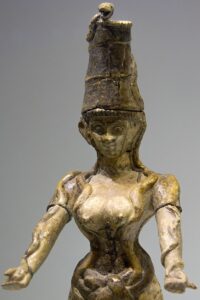
Snake goddess of Knossos. 'Peak' / tower hat?
Described by The Guardian as ‘one of the most beautiful small towns in Britain’, it was chosen as the location for scenes in Godric’s Hollow.....Once owned by Britain’s second to the royal family in terms of wealth and very powerful De Vere family. But its fame comes from modern fiction as this was the place where Harry Potter was born, where Lord Voldemort killed his parents, gave him his famous scar, and inadvertently made him a Horcrux. De Vere House is the second most photographed doorway in the whole of the UK, after number 10 Downing Street A great day out for all the family with a wide range of Bird of Prey Experiences.
Lavenham Falconry – a fantastic day out for all the family with a wide range of Bird of Prey Experiences.
Falcon?
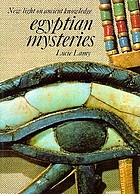 Side note: Fulcanelli (fl. 1920s) was the name used by a French alchemist and esoteric author, whose identity is still debated.[1] The name Fulcanelli seems to be a play on words: Vulcan, the ancient Roman god of fire, plus El, a Canaanite name for God and so the Sacred Fire.[2]
Side note: Fulcanelli (fl. 1920s) was the name used by a French alchemist and esoteric author, whose identity is still debated.[1] The name Fulcanelli seems to be a play on words: Vulcan, the ancient Roman god of fire, plus El, a Canaanite name for God and so the Sacred Fire.[2]
The appeal of Fulcanelli as a cultural phenomenon is due partly to the mystery of most aspects of his life and works, and his disappearance. In particular, he is reputed to have twice performed a transmutation of lead into gold. The first was in 1922, together with his most devoted pupil Eugène Canseliet, when the two supposedly performed a successful transmutation of 100 grams of lead into gold in the presence of Julien Champagne and Gaston Sauvage. This demonstration took place in a laboratory of the gas works of the Georgi company at Sarcelles, and was achieved with the use of a small quantity of "Projection Powder" (also known as the Philosopher's Stone) prepared by Fulcanelli.[3][4] The second was in 1937 at the Château de Léré, when Fulcanelli supposedly performed a transmutation of 225 grams of lead into gold and 100 grams of silver into uranium before witnesses including a chemist, two physicists and a geologist.[5] After this, Fulcanelli disappeared completely.[6]
-
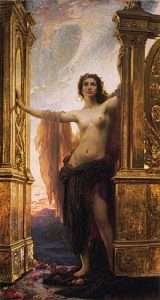
Goddess of Dawn. Gateway to the light.
Continued: Little Hall – a 14th Century house, open to the public as a museum filled with beautiful antique furnishings and artifacts. You can wander through the seven rooms and discover the treasures of Little Hall, including the study with exotic Persian panels and the spectacular upstairs chamber with its striking crown-post. Finish the tour with a walk around the beautiful garden. The Greyhound – offers comfortable, casual, and refined dining in a historic location. I had lunch there, and the food was delicious! A ride onboard The Jacobite Steam Train, best known for its role in the Harry Potter films as the iconic Hogwarts Express!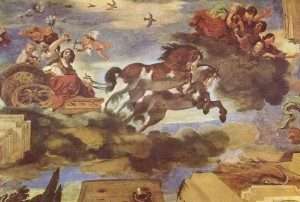
The Roman Goddess of Dawn. Whose brother was the sun, and sister the moon. Painted by the same artist, as that of The Shepherds of Arcadia. Boehmes first book after twelve years was called Aurora, supposedly never finished. As are a number of publications. Purposely. Question. Why? All dried up?[ Eclipse Of The Sun: An Investigation Into Sun and Moon Myths by J. McCrickard].
On board this magical train, you can experience spectacular views over the countryside scenery enjoyed by Harry, Ron, and Hermione on their journey to Hogwarts Castle.
Refresher: A small golden chain {three links?} were supposedly found in the shaft of the 'money pit' on Oak Island. Coincidence or a meaningful one?
The Oak tree that a ''lightening strike'' hits most often. Anything?
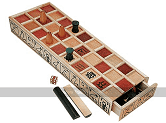
The 'middle' way.
July's full moon is also called the "thunder" moon because of early summer's frequent thunderstorms, NASA's Gordon Johnston said. Another name for July's full moon is the "hay" moon (for when farmers race to put hay in their barns around the storms), Earthsky.com reported.

''Trident'' in relation to ''metal of the mind''. All within a ''river''.
Something hinted at: "And what of the philosophers secret 'fire'? The aim of a secret is to evoke a sense of mystery, to mobilize all our faculties and to put us on our mettle {'metal of the mind'?}. It lures us on, even deceives us into embarking on a prospective quest whose ordeals would otherwise deter us. We set out in search of the hidden knowledge and power we believe the secret will confer - only to find on the way that these things are images of a wisdom and glory we did not dream of in the beginning. The secret i have tried to reveal on every other page of this book is in a sense no secret - it is an open secret passed along a Golden Chain of initiates, like the secrets of the Greek Mysteries. And as to 'its' philosophy, by whose assistance these mysteries are developed - it will make its appearance at different periods of time, as long as the sun himself shall continue to illuminate the world..." [Epilogue to the book: 'The Philosophers Secret Fire: A History of the Imagination' / P. Harpur].
Refresher: ''The most exciting items dug up from the pit on Oak Island include several coins, some dating to the 16th century; some gold links; and, in a find that has been confounding treasure-hunters and researchers alike for two centuries, a stone bearing indecipherable inscriptions.''
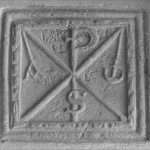
Hung / hang to enlarge.
Refresher: ''I am the wind that blows across the sea; I am the wave of the deep; I am the roar of the ocean; I am the stag of seven battles; I am the hawk on the cliff; I am the ray of sunlight; I am the greenest of plants; I am a wild boar; I am a salmon in a river; I am a lake on a plain; I am the word of knowledge; I am the point of a spear; I am the lure beyond the ends of the earth; I can shift my shape like a god.'' ['The Song of Amergin' / Ancient Irish Text].
Duration 'Six' minutes.
"I find it hard to believe that people would go to all this effort to hide a treasure. It had to be more valuable than gold..." Quote by Randal Sullivan in relation to his theory of Francis Bacon {creator of the Rosicrucian Order} being connected in some form to the 'mystery' of Oak Island. ['Curse of Oak Island' Series 4 Episode 8].
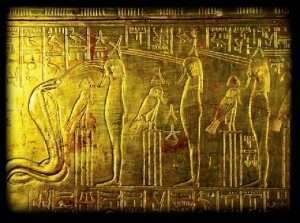
A 'portion' from king Tut's tomb. ''Gathered together {hurriedly''?}
Refresher: ''The Inca's referred to gold as the 'sweat of the sun'...'' ['Pawn Stars' / 2020].
''In science Archimedes is said to have cried out ''i have found it'' after determining the means of finding the purity for GOLD.''
"Eureka" comes from the Ancient Greek word εὕρηκα heúrēka, meaning "I have found (it)", which is the first person singular perfect indicative active of the verb εὑρίσκω heurískō "I find".[1] It is closely related to heuristic, which refers to experience-based techniques for problem-solving, learning, and discovery.''
And/or: The Eureka Rebellion was a series of events involving gold miners who revolted against the British administration of the colony of Victoria, Australia, during the Victorian gold rush.[1] It culminated in the Battle of the Eureka Stockade, which took place on 3 December 1854 at Ballarat between the rebels and the colonial forces of Australia. The fighting resulted in an official total of 27 deaths and many injuries, the majority of casualties being rebels. There was a preceding period beginning in 1851 of peaceful demonstrations and civil disobedience on the Victorian goldfields. The miners had various grievances, chiefly the cost of mining permits and the officious way the system was enforced.[2][3]
Side note: ''Albert Einstein's surname when translated into English is One Stone...'' ['The Chase' / 2018].
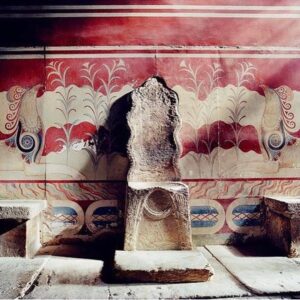
The Throne of Minos. 'Pliny suggested 'that Daedalus used this as the model for the Labyrinth which he built in Crete'. {'Ancient Egypt' / May-June 2025}. 'Griffins'? {Gryphon}
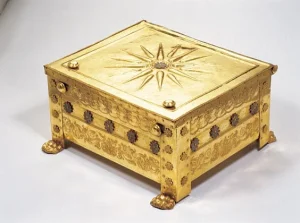
The tomb of Phillip II was found in the modern Greek village of Vergina, the site of Aigai. Objects from the tomb included an ivory head {bedpost}, a gold wreath with myrtle leaves and flowers; a gold quiver cover; a gold larnax, or ossuary, decorated with a sunburst {'SIXTEEN' pointed} or star likely containing Phillips remains; and a gold ornament of the gorgon Medusa.
And/or: According to writing by Herodotus I the IV century BC: the labyrinth was “situated a little above the lake of Moiris and nearly opposite to that which is called the City of Crocodiles” (‘Histories,’ Book, II, 148). And also writes that 'near the corner where the Labyrinth ends stands a pyramid' {'pillar'?}. The building near the pyramid The labyrinth (as it has been called by some in the distant past) is said to be an extraordinary underground complex which could hold the key to mankind’s history. It is said that there, we could find details about unknown civilizations in history, great empires, and rulers that lived on the planet before history as we know it began.
“When one had entered the sacred enclosure, one found a temple surrounded by columns, 40 to each side, and this building had a roof made of a SINGLE stone, carved with panels and richly adorned with excellent paintings. It contained memorials of the homeland of each of the kings as well as of the temples and sacrifices carried out in it, all skilfully worked in paintings of the greatest beauty.”
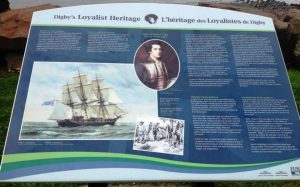 Something closer to the mark - if only for this reader - would be: ''John Dee was born into a Welsh family living in London. A brilliant young scholar....In the late 1570's he formed a circle called the Dionisii Areopagites with among others Edmond Spenser, whose poem The Faerie Queene is famous for Rosicrucian and other esoteric imagery....The Cabala was central to his studies. He believed in the mathematical foundation of all things....IT IS a little known fact, but documented, that at the height of his fortunes Dr Dee owned a charter granting him ownership of the vast landmass called Canada, and his vision of a British Empire - a phrase he coined - helped inspire and guide the nations voyages of discovery.'' [Pages 418 -420 'The Secret History of the World' / J. Black].
Something closer to the mark - if only for this reader - would be: ''John Dee was born into a Welsh family living in London. A brilliant young scholar....In the late 1570's he formed a circle called the Dionisii Areopagites with among others Edmond Spenser, whose poem The Faerie Queene is famous for Rosicrucian and other esoteric imagery....The Cabala was central to his studies. He believed in the mathematical foundation of all things....IT IS a little known fact, but documented, that at the height of his fortunes Dr Dee owned a charter granting him ownership of the vast landmass called Canada, and his vision of a British Empire - a phrase he coined - helped inspire and guide the nations voyages of discovery.'' [Pages 418 -420 'The Secret History of the World' / J. Black].
Atalanta?
N.B. Very similar to the Fulcanelli 'mystery'. Enlarged elsewhere. Try 'Feast of Fools' for a further connection.
"We have to admit that, more than once, we have encountered great difficulties in following some of the indications left by Fulcanelli as he skipped along the Way of the Fool, juggling with words {keys?}, occasionally allowing one to fall to the floor for the benefit of his followers." ['The Zelator'].
As an example {i.e.,something hinted at - something allowed to ''fall to the floor'' ...}: "Four 'gammas' arranged in a circle with a communal center make the swastika, the solar symbol. Numerologically, these four gammas total twelve, and echo the path of the sun against the zodiac belt...On a deeper level, the swastika is also a symbol of reincarnation, for the three and the one combine from lifetime to lifetime..." ['The Zelator'].
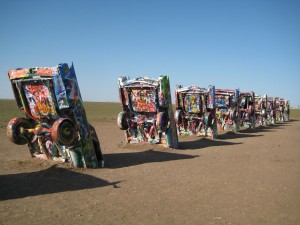
 Example of {i.e.,a work in progress}: "The potential literature for an intellectual study of this is vast. We hope we have provided a few simple pointers on the way. It is however, a 'centering' in, rather than a wandering in the labyrinthine fields {outer?} of intellectual speculation, that is the direct way of truth. The 'rose' blooms at the center of the cross. And those who are prepared to contemplate the imagery and take it unto their inmost hearts are the more likely to be met by Beatrice from the triumphal car {'chariot'}, and 'led' to places where even the intellectual genius of a Virgil cannot go." [From the book by G. Knight].
Example of {i.e.,a work in progress}: "The potential literature for an intellectual study of this is vast. We hope we have provided a few simple pointers on the way. It is however, a 'centering' in, rather than a wandering in the labyrinthine fields {outer?} of intellectual speculation, that is the direct way of truth. The 'rose' blooms at the center of the cross. And those who are prepared to contemplate the imagery and take it unto their inmost hearts are the more likely to be met by Beatrice from the triumphal car {'chariot'}, and 'led' to places where even the intellectual genius of a Virgil cannot go." [From the book by G. Knight].
Question. Queen of Thorns? [Game of Thrones].
External / internal ...Intellectual speculation / something more substantial. Representational of. Link to the word 'Gnosis' - its intent and purpose - if only in relation to subject material {i.e.,in the 'spiritual' sense of the word}.
As seen from a different perspective {i.e.,a visual one?}: "Throughout the Iliad, the chariots of warriors are represented by triangles of three stars. A good example is seen by King Nestor and his two chariots who leads his troops into battle: 'He placed his knights with the chariots and horses in the front rank'. Another group of stars in the triangular formation of a chariot is found close to the personal star of Hector in Orion..." ['Homer's Secret Iliad'].
Question. Graffias? Enlarged elsewhere. Try Part 4.
Refresher: As is the word 'Pyramid'. Those first three letters that means 'fire', [Key. Mentioned elsewhere]. 'Triangles' on top of a 'square' base. Those acute angles that somehow have 'hidden' within them the concept of the circle. As the author of the 'Egyptian Dawn' informs the reader..."The Giza plan is essentially invisible, and was meant to be so. There is nothing obvious about it, and no casual eye was ever meant to perceive it. You may know the old proverb...'If you want to conceal something successfully, hide it in plain sight".
Two Bronze chariots pulled by 4 horses {facing west} - found buried {underworld? and/or in 'wooden boxes'} alongside the structure that contains the 1st emperor of China..."The type of bronze sculpture that appeared almost overnight." -{The largest ever to be found on the planet}- "Nothing like it seen before the 1st emperor." [Quote by Dan Snow of the program 'Greatest Tomb on Earth: Secrets on Ancient China'}. Enlarged elsewhere.
Question. Did the 1st Emperor understand something prior to the contact of East and West?
Question 2. Is it that ''something'' - that initiated that first contact? Try ''Silk Road''.
Side note: "In China the seven stars in the Constellation Ursa Major were known as the Government....also called the Northern Measure, which Flammarion translates as Bushel, while the center of the Square was a object of worship and a favourite stellar title in that country as it occurs twice in their lists - named Spectra or Striding Legs {strong or weak ones?}. Reeves said that the four stars of the Square were named the Heavenly Reason, and others assign this spot to the female divinity Tow Moo....Others the Emperor's Chariot....or the Chariot that Pharaoh gave to Joseph." ['Star Names and Their Meaning'].
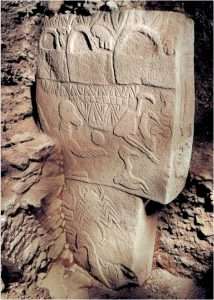
Basket? Try Part 1
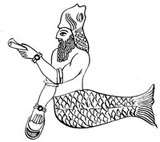
Silk purse from a sow's ear?
And/or: "It shared with Antares the title Ta Who, and was the central one of the seven lunar asterism making up the Azure Dragon...But individually Graffias seems to have been known as the Four Horse Chariot of Heaven, and was worshipped by all horsemen. It probably was also Fu Kwang, the Basket with Handles, and highly regarded as presiding over the rearing of silkworms, and as indicating the commencement of the season of that great industry of China...Graffias is said to be of an unknown derivation...more than likely from the word ''crab''....as it is well known that the ideas and words for crab and scorpion were almost interchangeable in early days...['Star Names and Their Meaning']. Continued elsewhere.
Question. Any planets within a constellation to determine a date?
Crab Nebula?
''Labyrinth'' {'underworld' - therefore represented with the UNconscious} in relation to ''archetypes''. Archetypes in relation to ''keys'' - those universal ones - regardless of how or where they are understood.
And/or: ''It can refer to the stomach as an actual digestive organ ("his breadbasket rumbled with hunger"), but these days it's more commonly applied to the general.''
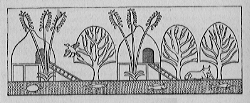
Punt: The fat of the land?
''The 'bread basket' is the most valuable thing that can be removed in the game 'Operation' - being worth 1000 dollars.'' ['Impossible' / S7 EP17].
Side note: The wooden horse of Troy that defined the end of something and therefore the beginning of...?
N.B. Many wooden coffins found within granite sarcophagi {i.e.,as one example Djoser}. Question. Cenotaph only?
'Wood-henge' ?

Hell's chariot.
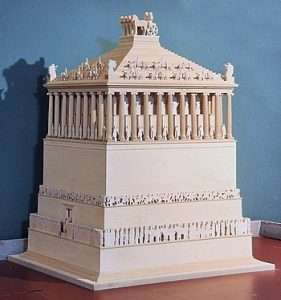 Analogy: {or something deeper?}: "There are strong mythical and astronomical links between Nestor and the constellation of Auriga. Known in Mesopotamia since ancient times as the Driver or Charioteer, conventional Greek legend associates this constellation with lame Erechtonius, King of Athens, who crippled and unable to move about easily, invented the four horse chariot and as a reward was placed by Zeus in the skies, as the constellation. Homer uses elements of both sources to describe Auriga in the Iliad...In the Iliad, King Nestor, the aging ruler of Pylos, is known as the Gerenian charioteer and, like Erechtonius, has a strong body but weak legs...Nestor's commanders are the bright stars in the outline of the constellation, his chariots are two groups of three stars..." ['Homer's Secret Iliad']. Coincidence or a meaningful one? Further information elsewhere.
Analogy: {or something deeper?}: "There are strong mythical and astronomical links between Nestor and the constellation of Auriga. Known in Mesopotamia since ancient times as the Driver or Charioteer, conventional Greek legend associates this constellation with lame Erechtonius, King of Athens, who crippled and unable to move about easily, invented the four horse chariot and as a reward was placed by Zeus in the skies, as the constellation. Homer uses elements of both sources to describe Auriga in the Iliad...In the Iliad, King Nestor, the aging ruler of Pylos, is known as the Gerenian charioteer and, like Erechtonius, has a strong body but weak legs...Nestor's commanders are the bright stars in the outline of the constellation, his chariots are two groups of three stars..." ['Homer's Secret Iliad']. Coincidence or a meaningful one? Further information elsewhere.
Top/down or bottom/up as a means to begin a story {method}?
N.B. Auriga = ''without a chariot''. Once 'he' has one = Strong legs?
Question. What does all that imply within the whole?
The ''striving chap'' on that very first zodiac - found at Denderah?
As is: "As the king of winter, the god at his lowest ebb rules with the dark queen, Lady of Night, and at midwinter he is born again, a weak child, the star child, the brightest of hope in a time of darkness. These legends form part...." [Page 67 'Magic for the Aquarian Age' / M. Green].
Question. Midsummer = 'strong'?
'Ben-Hur' ?
Refresher: ''On many Russian churches the crosses on the domes often have a slanting support bar underneath the cross. This is a Russian tradition that Christ was lame...'' [Page 266 'Russia: Past, Present and Future' / R. Steiner].
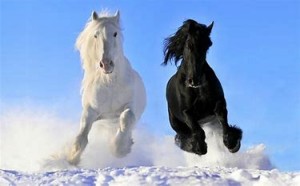
Duality, therefore 'Gnosis' link?
Something to ponder on {synchronistic?}: "A superior agreement is found in the metaphor for the human psyche in the Platonic dialogue Phaedrus. Socrates likens the human soul to a chariot drawn by two horses - one black, one white - puling in different directions and weakly controlled by the charioteer. The metaphor of the chariot itself is remarkably similar to MacLean's neural chassis: the two horses, to the R-complex and the limbic cortex; and the charioteer barely in control of the careening chariot and horses, to the neocortex. In yet another metaphor, Freud described the ego as the rider of an unruly horse. 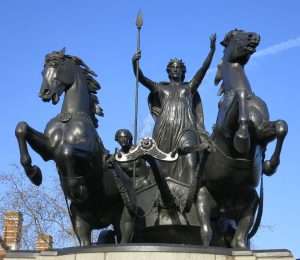 Both the Freudian and the Platonic metaphors emphasize the considerable independence of the tension among the constituent parts of the psyche, a point that characterizes the human condition and to which we will return. Because of the neuroanatomical connections between the three components, the triune brain must itself, like the Phaedrus chariot, be a metaphor; but it may prove to be a metaphor of great utility and depth....The triune-brain model derives from studies of comparative neuroanatomy and behaviour. But honest introspection is not unknown in the human species, and if the triune brain model is correct, we would expect some hint of it in the history of human SELF KNOWLEDGE. The most widely known hypothesis that is at least reminiscent of the triune brain is Sigmund Freud's division of the human psyche into id, ego and super-ego..." [Page 81/82 'The Dragons of Eden' / C. Sagan]. Try ''Jung''.
Both the Freudian and the Platonic metaphors emphasize the considerable independence of the tension among the constituent parts of the psyche, a point that characterizes the human condition and to which we will return. Because of the neuroanatomical connections between the three components, the triune brain must itself, like the Phaedrus chariot, be a metaphor; but it may prove to be a metaphor of great utility and depth....The triune-brain model derives from studies of comparative neuroanatomy and behaviour. But honest introspection is not unknown in the human species, and if the triune brain model is correct, we would expect some hint of it in the history of human SELF KNOWLEDGE. The most widely known hypothesis that is at least reminiscent of the triune brain is Sigmund Freud's division of the human psyche into id, ego and super-ego..." [Page 81/82 'The Dragons of Eden' / C. Sagan]. Try ''Jung''.
Even though that 'model' has been improved upon - its basics {'metaphors'?} still apply. Apply those universal constants - that define something of the 'inner' self - but only when you understand what is implied by that ''divine bit''. All the way back to the ''oral'' tradition BEFORE the written word came into common use. Hence....
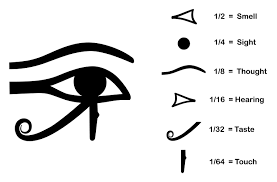
Who understood the benefits of objectivity first. Cro-magnon man or Neanderthal?
''The concept of the triune brain is in remarkable accord with the conclusions, drawn independently from studies of brain to body mass ratio's - that the emergence of mammals and of primates {especially humans} was accompanied by major bursts in brain evolution. It is very difficult to evolve by altering the deep fabric of life; any change there, is likely to be lethal. But fundamental change can be accomplished by the addition of new systems on top of the old ones." [Page 59, same book].
'Overthrowing the Old Gods' / A. Crowley.
Among others try ''giant'' / ''dwarf'' in relation to ''gathering'' and/or ''grasp''.
'The Evolution of the Dragon' / G. E. Smith.
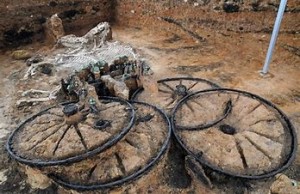
Ferrybridge Yorkshire. The oldest fully assembled 'chariot' found anywhere in the UK. Question. 'Four' horses or ONLY two? What does that imply in relation to the 'whole'. Strong or weak?

Hell's chariot.
Side note: "You must know that the collective noun in Hebrew denoting animals used for riding is ''merkabah'' i.e.,''Joseph made ready his chariot''{Gen. xlvi.29}….The following passage especially proves that the Hebrew Merkabah denotes a collection of animals: ''And a Merkabah came up and went out of Egypt for six hundred shekels of silver, and a horse for a hundred and fifty.'' {1Kings x.21}. Hence we may learn that Merkabah denotes here four horses. Therefore I think that when it was stated, according to the literal sense of the words, that four Hayyot {beasts} carry the Throne of Glory, our sages called this ''Merkabah'' on account of its similarity of the Merkabah consisting of four single animals.'' So far has the theme of this chapter carried us, and we shall be compelled to make many further remarks on this subject. Here, however, it is our object, and the aim of all we have said, to show that ''who rideth upon heaven'' {Deut.xxxiii.26} means ''who sets the all surrounding 'sphere' in motion and 'turns' it by his power and will." [Page 107 'Guide for the Perplexed' / M. Maimonides].
'Handle on the moment' ?
''Handle'' of Dipper?
'On Having No Head: Zen and the Rediscovery of the Obvious' / D. E. Harding.
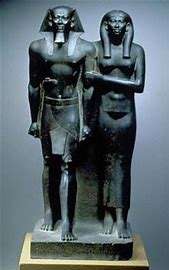
Whats he pulling? The Wain? Or should that be: whats he leaving behind? Shadow aspect? Death/rebirth?
Continued: "Qualities of Will for instance, were often referred to as belonging to limbs: powerful legs and strong arms indicated strength of will and the capacity to carry out one's wishes. There is a chapter in the Book of the Dead for ''gaining power in the legs,'' an expression that must, given its context, refer to the strengthening of the qualities of soul normally associated with the lower limbs. In it the Underworld traveller says: 'My strides are made long, my thighs are lifted up; I have passed along the great path, and my limbs are strong'..." [Page 179 'Temple of the Cosmos'].
Question. "Great path'' = Upstream? {and/or ''underworld''?}
Refresher: ''A limb can be a reference to someones arm or a tree branch.''
And/or: ''The secret is hidden not in the top but in the roots of the tree....The roots extend into the inorganic realm {bacteria/fungi?}, into the mineral kingdom. In psychological terms, this would mean that the self has its roots in the body, indeed in the body's chemical elements.'' ['Alchemical Studies' / C. G. Jung].
Melissa to enlarge.
''Like other members of the Clematis genus, old man's beard or traveller's joy climbs (or scrambles ) over other plants using its leaf stalks (petioles) and flower stalks. The leaves are not unlike the familiar garden forms of Clematis. The leaf stalks entwine around any convenient support / structure in their vicinity and then lignify (become woody).''
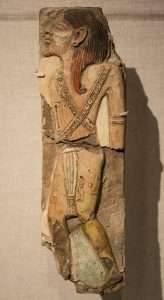
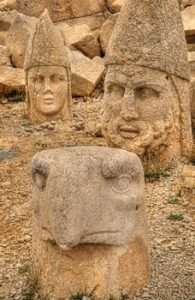
'peaked' hats? Triangular?
Working example: ''The name "Barbados" is from either the Portuguese term os barbados or the Spanish equivalent, los barbados, both meaning "the bearded ones". It is unclear whether "bearded" refers to the long, hanging roots of the bearded fig-tree (Ficus citrifolia), a species of banyan indigenous to the island, or to the allegedly bearded Caribs who once inhabited the island, or, more fancifully, to a visual impression of a beard formed by the sea foam that sprays over the outlying coral reefs. In 1519, a map produced by the Genoese mapmaker Visconte Maggiolo showed and named Barbados in its correct position. Furthermore, the island of Barbuda in the Leewards is very similar in name and was once named "Las Barbudas" by the Spanish.
Side note: ''Nemetona's association with Loucerius/Llew equates her naturally to that romantic figure of Welsh myth, the flower goddess Bloddeuwedd. The tale can be found in the collection of Welsh myths contained in The Mabinogion, where it is said she was formed of flowers and sea foam by the Welsh wizards Gwydion and Math to be the bride of Llew llaw Gyffes. However, this is likely to be a patriarchal gloss over an earlier story, as Bloddeuwedd is said to attempt murdering Llew with her lover Gronw and is turned into an owl by Gwydion as punishment. This reveals her to be a fierce and strong female character, a force of nature rather than a passive creation of man....A far more ancient goddess than the story initially suggests....Nemetona's presence in Celtic Europe is likely to have been widespread, as further inscriptions exist as do place names relating to her and her sacred groves.'' [Page 19/20 'Celtic Tree Magic' / Danu Forest].
Continued: ''The original name for Barbados in the Pre-Columbian era was Ichirouganaim, according to accounts by descendants of the indigenous Arawakan-speaking tribes in other regional areas, with possible translations including "Red land with white teeth"[12] or "Redstone island with teeth outside (reefs)"[13] or simply "Teeth".
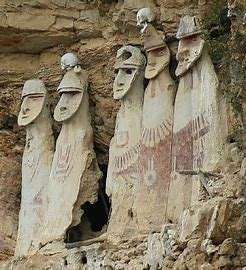 Refresher: "One of the things that virtually all writers, philosophers and poets agree on - is that walking helps you think. In fact, in some languages the word 'traveling' is the same as the word for thinking." ['Britain's Ancient Tracks' - narrated by T. Robinson. Episode 3]
Refresher: "One of the things that virtually all writers, philosophers and poets agree on - is that walking helps you think. In fact, in some languages the word 'traveling' is the same as the word for thinking." ['Britain's Ancient Tracks' - narrated by T. Robinson. Episode 3]
Recall the 'striving chap' on the zodiac disc at Denderah. Question. With or without 'hair'?
"With Capricorn it was the House of Saturn, governing the legs and ankles; and when on the horizon with the sun the 'weather' was always rainy..." ['Star Names and Their Meaning' under Aquarius].
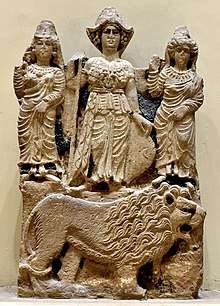
The daughters of Allah.
And/or: ''During the Middle Kingdom, the catlike and lionlike qualities of princesses and Queens {ONLY?} were emphasised , as shown by cat-claw anklets and the use of the Sphinx form in the statues of queens. While one might speculate that this was the result of the domestication of cats during the course of the First Intermediate Period, even in the Old Kingdom queens and princesses had been associated with lions, which appear on sedan chairs and thrones....Female cats and lionesses were associated mythologically with goddesses, the 'eye of Re', while male cats were sometimes linked with the sun god Re himself.'' [Page 13 'Hatshepsut: From Queen to Pharaoh' / Metropolitan Museum of Art].
Saqqara to enlarge and/or 'Shaft 24'.
 And/or: ''Such women {i.e., Kings Mother} may also have had religious authority. By virtue of their sons accession, they held, in the Old Kingdom period, the title 'The Daughter of the God'...indicating that they were the source of some of the kings divinity....While Hatshepsut used the roles of male kings and King's Mothers as models for her own expression and exercise of political power, as a queen regnant she belonged to neither category. She belonged instead to a very elite minority of Egyptian woman who ruled Egypt in their own right - as Daughters of Re, Ladies of the Two Lands.'' [same book].
And/or: ''Such women {i.e., Kings Mother} may also have had religious authority. By virtue of their sons accession, they held, in the Old Kingdom period, the title 'The Daughter of the God'...indicating that they were the source of some of the kings divinity....While Hatshepsut used the roles of male kings and King's Mothers as models for her own expression and exercise of political power, as a queen regnant she belonged to neither category. She belonged instead to a very elite minority of Egyptian woman who ruled Egypt in their own right - as Daughters of Re, Ladies of the Two Lands.'' [same book].
Lord of the Two Lands ? {'Valley of the Kings: The Lost Tombs'}.
Akhenaten will be found. Not Nefertiti.
Enlarged within.
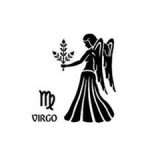
'M' OR 'W'?
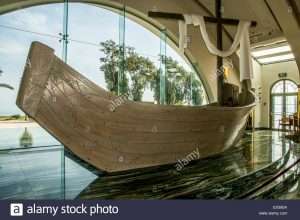
'M'?
Side note: "The reason is that each religion or philosophy that comes into the world is a Benjamin of humanity and insures its own life by 'destroying' its mother. It is because the symbolic serpent turns ever devouring its own tail; it is because, an essential condition of existence, a void, is necessary to every plenitude, space for every dimension, an affirmation for each negation: herein is the eternal realization of the phoenix allegory." ['Transcendental Magic' by E. Levi].
Patriarch /'M'atriarch.
And/or: ''Queen Victoria is known as the Grandmother of Europe.''
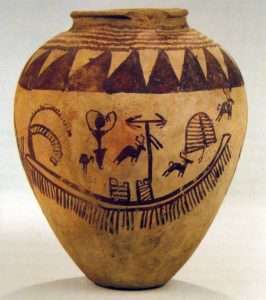 Continue: {flip side?}: "Some of the Arabic poets wrote that the Daughters of the Bier {i.e.,within Ursa Major} were good for nothing people whose rising and setting do not bring rain." [Page 441. Same book].
Continue: {flip side?}: "Some of the Arabic poets wrote that the Daughters of the Bier {i.e.,within Ursa Major} were good for nothing people whose rising and setting do not bring rain." [Page 441. Same book].
''Rain dance''? 'Hoeing the Field'?
 Syncronistic example? {i.e.,as seen from a different perspective - but because those COMMON keys are universal - common sense {wisdom?} can be got from it - REGARDLESS of its source}: "The climax for me for the whole trip seemed to be at Mycenae, site of the ancient House of Atreus, with its lions gate and colossal sophisticated bronze age architecture built when even Stonehenge was 'young'. Close by, at a peak where a rowan tree grew near a thorn i was moved to clasp the rowan to make contact its physical and etheric roots via all the thorn and rowan trees of Albion and Hellas. As i did this a sudden wind sprang up physically around me, and feeling surrounded by air and other elementals and i was urged to run down the mountainside toward a special sacred spot, only to find myself suddenly dropped by the elementals who were guiding my feet, and so fell, badly spraining my ankle and breaking blood vessels in my foot {'left'?}. The sudden pain seemed to act as a seal to the union of the forces. Here i planted one of the red Welsh jasper stones left over from the previous Hawkwood. I was able to continue walking that day, but my foot later swelled so badly i was incapacitated for the rest of the trip, by which time no less than three of us were limping for one reason or another. I was reminded of a species of ritual laming i suffered immediately after attempting my own first Qabalistic pathworking at the foundation of my small house group. Ostensibly it was the result of a bad mosquito bite but it marked an important initiatory beginning with resonance to the lamed god evoked in that sequence. It drew attention to an important link with Asclepios - a lamed god - who showed up strongly again at his major center at Epidauros..." [' I called it Magic'. Mentioned elsewhere]. Try ''Hephaestus'' to see it from the Greek perspective {on all pages}.
Syncronistic example? {i.e.,as seen from a different perspective - but because those COMMON keys are universal - common sense {wisdom?} can be got from it - REGARDLESS of its source}: "The climax for me for the whole trip seemed to be at Mycenae, site of the ancient House of Atreus, with its lions gate and colossal sophisticated bronze age architecture built when even Stonehenge was 'young'. Close by, at a peak where a rowan tree grew near a thorn i was moved to clasp the rowan to make contact its physical and etheric roots via all the thorn and rowan trees of Albion and Hellas. As i did this a sudden wind sprang up physically around me, and feeling surrounded by air and other elementals and i was urged to run down the mountainside toward a special sacred spot, only to find myself suddenly dropped by the elementals who were guiding my feet, and so fell, badly spraining my ankle and breaking blood vessels in my foot {'left'?}. The sudden pain seemed to act as a seal to the union of the forces. Here i planted one of the red Welsh jasper stones left over from the previous Hawkwood. I was able to continue walking that day, but my foot later swelled so badly i was incapacitated for the rest of the trip, by which time no less than three of us were limping for one reason or another. I was reminded of a species of ritual laming i suffered immediately after attempting my own first Qabalistic pathworking at the foundation of my small house group. Ostensibly it was the result of a bad mosquito bite but it marked an important initiatory beginning with resonance to the lamed god evoked in that sequence. It drew attention to an important link with Asclepios - a lamed god - who showed up strongly again at his major center at Epidauros..." [' I called it Magic'. Mentioned elsewhere]. Try ''Hephaestus'' to see it from the Greek perspective {on all pages}.
 Question. Did that 1st Emperor have such an 'affliction' ? Or would that 'knowledge' be known?
Question. Did that 1st Emperor have such an 'affliction' ? Or would that 'knowledge' be known?
N.B. Tutankhamun did. His left foot.
'House of York' / 'House of Lannister'.
Long Barrows?
Avebury?
"Another interesting symbol, which later became a prime emblem of Northern Ireland, is the red hand....A myth descibes a race in which the first to reach land would win the throne {'House'} of Ulster. A certain prince called O'Neil was losing the race but cut off his hand and threw it to the shore, ensuring his hand touched land first. {Page 143 'Scota: Egyptian Queen of the Scots' / R. Ellis].
Hands / Feet.
| Sign | Body Part | Glands and Organs |
| Aries | Head, face | The suprarenals (adrenal gland), the eyes |
| Taurus | Neck, throat, jaw | Thyroid, sensory organs |
| Gemini | Hands, arms, lungs | Thymus, respiratory and nervous systems |
| Cancer | Breasts, stomach, gall bladder | Mammary glands, body “containers” that retain water |
| Heart, back, spine | Heart and major arteries | |
| Virgo | Intestines, abdomen, spleen | Pancreas, esophagus, intestines, digestive system |
| Libra | Lower back, kidneys, bladder | Endocrine system and glands, urinary system |
| Scorpio | Genitals, colon, rectum | Reproductive and elimination systems |
| Sagittarius | Hips and thighs | Liver, hepatic system, pituitary gland |
| Capricorn | Knees, bones, skin, teeth | Skeletal system |
| Aquarius | Calves, veins, circulatory system | Pineal gland, blood, circulation system |
| Pisces | Feet | Lymphatic system, pituitary gland |
Zodiac signs and the body parts they rule.

Flag of Zaragoza
And/or: According to ancient local tradition, soon after the crucifixion and resurrection of Jesus, Saint James was preaching the Gospel in Spain, but was disheartened because of the failure of his mission.[4] Tradition holds that on 2 January 40 AD,[3] while he was deep in prayer by the banks of the Ebro,[6] the Mother of God appeared to him and gave a column of jasper and instructed him to build a church in her honor:[4] "This place is to be my house, and this image and column shall be the title and altar of the temple that you shall build."[7]
'Eight' days.
The name means "spotted or speckled stone," and is derived via Old French jaspre (variant of Anglo-Norman jaspe) and Latin iaspidem (nom. iaspis) from Greek ἴασπις iaspis (feminine noun),[6] from an Afroasiatic language (cf. Hebrew ישפה yashpeh, Akkadian yashupu).[7] This Semitic etymology is believed to be unrelated to that of the English given name Jasper, which is of Persian origin,[8][a] though the Persian word for the mineral jasper is also yashp (یَشم).

Ring of Minos.
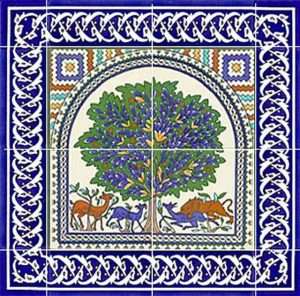
"An example of typical mythology in the Talmud exists as a discussion about a giant deer and a giant lion which both originated in a mythical forest called "Bei Ilai". 'GRASP' to enlarge.
Green jasper was used to make bow drills in Mehrgarh between 4th and 5th millennium BC.[9] Jasper is known to have been a favorite gem in the ancient world; its name can be traced back in Arabic, Persian, Hebrew, Assyrian, Greek and Latin.[10] On Minoan Crete, jasper was carved to produce seals circa 1800 BC, as evidenced by archaeological recoveries at the palace of Knossos.[11]
Although the term jasper is now restricted to opaque quartz, the ancient iaspis was a stone of considerable translucency including nephrite.[2] The jasper of antiquity was in many cases distinctly green, for it is often compared to emerald and other green objects. Jasper is referred to in the Nibelungenlied as being clear and green. The jasper of the ancients probably included stones which would now be classed as chalcedony, and the emerald-like jasper may have been akin to the modern chrysoprase. The Hebrew word may have designated a green jasper.[12] Flinders Petrie suggested that the odem – the first stone on the High Priest's breastplate – was a red jasper, whilst tarshish, the tenth stone, may have been a yellow jasper.[13]
'Dappled'.
'Red thread'.
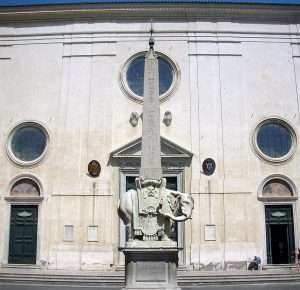
Round the corner from....?

'light oxen': "I bring up an individual type as a point of departure to talk about. The one {'emotion'?} that is strongest will pull you first." [Page 4 'Stopping and Seeing' / Translated by T. Cleary].
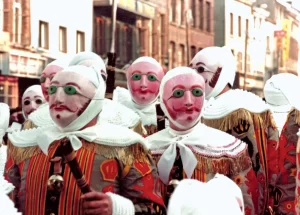
Shrove tuesday - Belgium.
'Bower'.
And/or: "Another interesting symbol, which later became a prime emblem of Northern Ireland, is the red hand....This is supposed to be the adoption of the red hand - and the three drops of blood that are said to be dripping from its wrist - as an emblem of Ulster....

'Red thread' {Jericho} = ginger haired?
There is also a thread of redness that runs through the biblical narrative and many of the patriarchs and kings that are said to be strangely red; including Adam, Esau, and king Solomon. This red thread is quite literally expressed at the birth of Pharaz and Zarah in the Book of Genesis: 'And it came to pass, when she gave birth, that one child put out his hand: and the midwife took and bound upon his hand a scarlet thread, saying, this came out first'..... A link to the Red Crown of Lower Egypt and a possible explantion that is sometimes given for the adoption of the red hand in Ulster symbolism for the mythology in these alternative accounts indicates that Jacob's Pillar {the Stone of Destiny} was taken into safe keeping by Jeremiah and that it somehow ended up in Ireland. This is how, so it is said, the Star of David ended up on the flag of Ulster. Another strand/thread of the same mythology says that Pharaz and Zarah were exiled to Spain and founded the city of Zaragoza, and at a later date their ancestors sailed to Ireland. Since Zaragoza lies on the river Ebro in Catalonia, this is a very similar story to the Scotichronicon account." [Page 144 'Scota: Egyptian Queen of the Scots' / R. ELLIS].
A link to the Red Crown of Lower Egypt and a possible explantion that is sometimes given for the adoption of the red hand in Ulster symbolism for the mythology in these alternative accounts indicates that Jacob's Pillar {the Stone of Destiny} was taken into safe keeping by Jeremiah and that it somehow ended up in Ireland. This is how, so it is said, the Star of David ended up on the flag of Ulster. Another strand/thread of the same mythology says that Pharaz and Zarah were exiled to Spain and founded the city of Zaragoza, and at a later date their ancestors sailed to Ireland. Since Zaragoza lies on the river Ebro in Catalonia, this is a very similar story to the Scotichronicon account." [Page 144 'Scota: Egyptian Queen of the Scots' / R. ELLIS].
'Red gloves'.
'Foster'.
And/or: "If the red hand of Ulster is somehow connected with Egyptian - Hebrew culture and mythology, then the disembodied hand may be better explained as a component of the Osiris mythology {i.e., ka}.
Philemon?

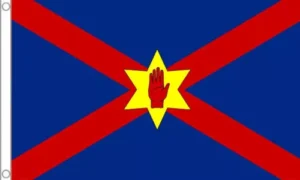
"Another interesting symbol, which later became a prime emblem of Northern Ireland, is the red hand....A myth descibes a race in which the first to reach land would win the throne {'House'} of Ulster. A certain prince called O'Neil was losing the race but cut off his hand and threw it to the shore, ensuring his hand touched land first. {Page 143 'Scota: Egyptian Queen of the Scots' / R. Ellis].
Side note: When they came to the place called the Skull, they crucified him and the criminals there, one on his right, the other on his left (Luke 23:33). There is nothing in the Gospels that would suggest that the thieves (or revolutionaries) were crucified in a manner different from Jesus'....
And indeed, we have been condemned justly, for the sentence we received corresponds to our crimes, but this man has done nothing criminal." Then he said, "Jesus, remember me, when you come into your kingdom." He replied to him, "Amen, I say to you, today you will be with me in Paradise."
Sabbath to enlarge.
Continued: Brigantia could mean 'pool' or from the French 'glacier' meaning 'ice' or 'slip' as in the glacis ramps that led to the fortification walls as a deterrent for any invaders against the fortress.
A more likely possibility[citation needed] is that the name simply means "The Crown", which in Galician is A Coroa and in Spanish is La Corona. It seems less likely that it traces back to the Galician clunia.[citation needed] The name is reputedly from the Greek Κορώνα (Crown), referring to the crown of Geryon that was buried by Hercules under the lighthouse he built to his honour. The hero Hercules slew the giant tyrant Geryon after three days and three nights of continuous battle. Hercules then—in a Celtic gesture—buried the head of Geryon with his weapons and ordered that a city be built on the site. The lighthouse atop a skull and crossbones representing the buried head of Hercules' slain enemy appears in the coat-of-arms of the city of A Coruña, Loukeris (2019).[10][11]
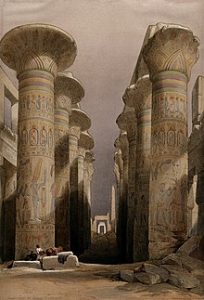
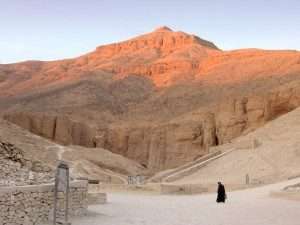
Mountain = pillar? 'She who loves silence' = Vow of silence?
Continued: The church itself is colossal: this great, many-domed rectangle dominates the historic core, and its four gigantic bell towers can be seen from miles away. The exterior is covered in brick in a nod to Aragón’s tradition of Mudéjar architecture, but the inside is a riot of Baroque opulence as weighty white pillars receive swooping, decorated arches and brilliant, sky-blue paint contrasts with the stark white of the pilasters. Upon entering the church, you’re immediately greeted by the woody fragrance of incense. The basilica’s gargantuan side chapels could dwarf small parish churches, and Byzantine-style pendentive domes balance precariously over the grand interior space. The reputed original pillar is venerated in the Chapel of El Pilar, and you can even go up to an exposed oval to kiss or touch the jasper column.
I really enjoyed taking the elevator to the top of one of the bell towers, skipping over 800 steps and taking in panoramic views of Zaragoza. To the north, foreboding clouds rolled in from the Pyrenees mountains, and before me the Ebro River flowed southeast to the Mediterranean. Beneath the bell tower, colorful zigzag patterns decorated the ten or so chapel domes. To the south, the city sprawled out from the historic core, and to the east, across the half-kilometer-long Plaza del Pilar, the La Seo Cathedral made its existence known, its single onion-topped bell tower held in friendly rivalry to the basilica across the square.


Lozenge?
About a year after the apparition, James is believed to have had a small chapel built in Mary's honor, the first church ever dedicated to her. After James returned to Jerusalem, he was executed by Herod Agrippa in about 44 AD, the first apostle to be martyred for his faith. Several of his disciples took his body and returned it for final burial in Spain.[4] This first chapel was eventually destroyed with various other Christian shrines, but the statue and the pillar stayed intact under the protection of the people of Zaragoza.[5]
 Many of the kings of Spain, many other foreign rulers and saints have paid their devotion before this statue of Mary. Saint John of the Cross, Saint Teresa of Ávila, Saint Ignatius of Loyola, and Blessed William Joseph Chaminade are among the foremost ones.[5] The Basilica of Our Lady of the Pillar is one of two minor basilicas in the city of Zaragoza, and is co-cathedral of the city alongside the nearby La Seo de Zaragoza. The architecture is of Baroque style, and the present building was predominantly built between 1681 and 1872.
Many of the kings of Spain, many other foreign rulers and saints have paid their devotion before this statue of Mary. Saint John of the Cross, Saint Teresa of Ávila, Saint Ignatius of Loyola, and Blessed William Joseph Chaminade are among the foremost ones.[5] The Basilica of Our Lady of the Pillar is one of two minor basilicas in the city of Zaragoza, and is co-cathedral of the city alongside the nearby La Seo de Zaragoza. The architecture is of Baroque style, and the present building was predominantly built between 1681 and 1872.
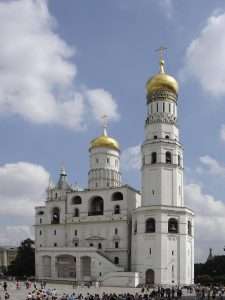
Onions.
Refresher: ''On many Russian churches the crosses on the domes often have a slanting support bar underneath the cross. This is a Russian tradition that Christ was lame...'' [Page 266 'Russia: Past, Present and Future' / R. Steiner].

Objective view? {''three and four''?}.
Side note: "Later, Philemon became relativized by the emergence of yet another figure, whom I called Ka. In ancient Egypt the 'kings Ka' was his 'earthly' form , the embodied soul. In my fantasy, the ka-soul came from below, out of the earth as if out of a deep shaft {Osiris shaft?}. I did a painting of him, showing him in his earth bound form, as a herm with a base of stone and upper part of bronze. High up in the painting {heart?} appears a kingfishers wing, and between it and the head of Ka floats a round glowing nebula of stars....Philemon had a lame foot....{with the wings of a kingfisher}. He was a winged spirit....In time I was able to integrate both figures through the study of alchemy." [Pages 207-210 'Memories, Dreams and Reflections' / C. G. Jung].
Higher/lower?
Question. What is a nebula created from. Gold/silver links? As a means....?
And/or: ''The musical instrument that takes its name from the German for 'wing' is Flugelhorn {Brass}.'' ['Impossible' / BBC1/ 2022].
N.B. Crumhorn: ''A double reed woodwind instrument.''
The Epistle to Philemon[a] is one of the books of the Christian New Testament. It is a prison letter, authored by Paul the Apostle (the opening verse also mentions Timothy), to Philemon, a leader in the Colossian church. It deals with the themes of forgiveness and reconciliation. Paul does not identify himself as an apostle with authority, but as "a prisoner of Jesus Christ", calling Timothy "our brother", and addressing Philemon as "fellow labourer" and "brother" (Philemon 1:1; 1:7; 1:20). Onesimus, a slave that had departed from his master Philemon, was returning with this epistle wherein Paul asked Philemon to receive him as a "brother beloved" (Philemon 1:9–17).
Philemon was a wealthy Christian, possibly a bishop[3] of the church that met in his home (Philemon 1:1–2) in Colossae. This letter is now generally regarded as one of the undisputed works of Paul. It is the shortest of Paul's extant letters, consisting of only 335 words in the Greek text.[4]
Chapter 'SIX': Book of the Dead.
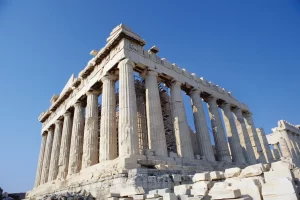
Athene: Born from the 'forehead' of Zeus.
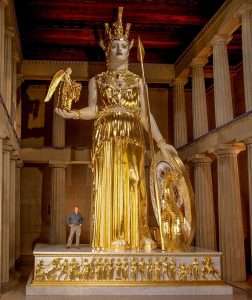
Chryselephantine statues were built around a wooden frame with thin carved slabs of ivory attached, representing the flesh, and sheets of gold leaf representing the garments, armour, hair, and other details. In some cases, glass paste, glass, and precious and semi-precious stones were used for detail such as eyes, jewellery, and weaponry.
Analogy: Growing up with the Dursleys, Harry’s scar was ‘The only thing Harry liked about his own appearance’. But once he met Hagrid, Harry’s relationship with his scar began to change. Not only did he find out that it was a mark made by Dark magic and by his parents’ murderer, but he also realised that it was a mark that made him recognisable. Time and time again through Philosopher’s Stone, it was Harry’s scar that identified him as the Boy Who Lived, identified him as an orphan, or even a victim, of Lord Voldemort. Harry’s scar also changed from dormant to active throughout the first book. Whilst he was growing up, it was merely part of his appearance, but soon after his arrival at Hogwarts it started to cause him physical pain. With his entry into the wizarding world, it was almost as though the scar came alive, and with its awakening came a searing pain in Harry’s forehead that would follow him for many years to come.....
 At King’s Cross, meeting Dumbledore again, Harry’s scar actually disappeared. He had wished it gone so many times. But, as we know, Harry decided to return; return to fight Voldemort and regain the scar on his head and enter battle once again.....
At King’s Cross, meeting Dumbledore again, Harry’s scar actually disappeared. He had wished it gone so many times. But, as we know, Harry decided to return; return to fight Voldemort and regain the scar on his head and enter battle once again.....
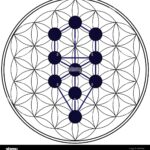 Nineteen years later, the relationship between Harry and his scar was still there, in the background, but the scar was dormant again, more like the thin lightning bolt that was once the only thing the boy Harry Potter liked about his appearance. But in adult Harry Potter, its silence also signals an end to Harry’s trials and troubles in the wizarding world: ‘The scar had not pained Harry for nineteen years. All was well’.
Nineteen years later, the relationship between Harry and his scar was still there, in the background, but the scar was dormant again, more like the thin lightning bolt that was once the only thing the boy Harry Potter liked about his appearance. But in adult Harry Potter, its silence also signals an end to Harry’s trials and troubles in the wizarding world: ‘The scar had not pained Harry for nineteen years. All was well’.
'She Who loves Silence'.
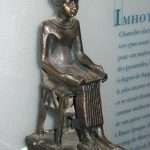 Continued: "All knowledge is the result of illumination from above, not of abstractions from below. And in the mystical angelologies of Avicenna and Suhrawardi, that active intellect, which is merely conceived by abstract theorizing, is actually encountered in the 'Event' - at the limit of the cosmos - {i.e.,'boundary' line of higher/lower divisions} - Hence the final sentence - ''as personified and individualised in a Celestial Person {'angel' and/or 'archetype'?}, who is in each case unique. Each human soul has a counterpart in heaven, who is the eternal and 'perfected' individuality of that soul..." Continued/enlarged elsewhere. [From the book 'The World Turned Inside Out'. Mentioned elsewhere].
Continued: "All knowledge is the result of illumination from above, not of abstractions from below. And in the mystical angelologies of Avicenna and Suhrawardi, that active intellect, which is merely conceived by abstract theorizing, is actually encountered in the 'Event' - at the limit of the cosmos - {i.e.,'boundary' line of higher/lower divisions} - Hence the final sentence - ''as personified and individualised in a Celestial Person {'angel' and/or 'archetype'?}, who is in each case unique. Each human soul has a counterpart in heaven, who is the eternal and 'perfected' individuality of that soul..." Continued/enlarged elsewhere. [From the book 'The World Turned Inside Out'. Mentioned elsewhere].

Higher or lower self?
As one example: {the 'pagan' one?}: ''The archetypal role of Culhwch can be seen not only from the name 'pig - run' he bears from having been born in one, thus demonstrating his place in 'pig' mythology, but also from the fact that, in all this extensive literature with its numerous repetitions of personal names, his own name is unique and nothing is known of him {'zero'?}....He bears all the marks of the 'hero' in the psychological SENSE. He is of royal birth, but at the same time he is born like an animal. He has to seek an unknown bride {Shulamite/Nefertiti?}. In order to win her, he has to overcome apparently invincible monsters, both 'male' and 'female', though not, as we have seen, WITHOUT THE HELP OF Arthur who here appears as a kind of superordinate self {'higher' self?}.'' [Page 8 'A Celtic Quest' / J. Layard].
Groundhog Day / Hogmanay / Hogwarts.
A work in progress?..."There are traces of a universal wisdom with the 'power' to transform human consciousness in all the great teachings of humanity...A common thread can be uncovered in the processes...and from that thread an understanding on its impact on the human psyche." ['Wisdom of the 4th Way']. Continued elsewhere.
Wolfgang Pauli?
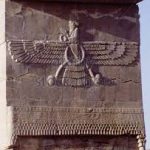
A different perspective?
As seen from a different perspective: "The journal provides a 'thread' to your everyday activities...it begins to consolidate your will towards a singular aim. Crowley once said that the 'magicians' sole aim was to interpret his own 'magical' record, and after many years i have come to agree with him." [Same book,i.e.,'The Magister' - emphasis, this readers].
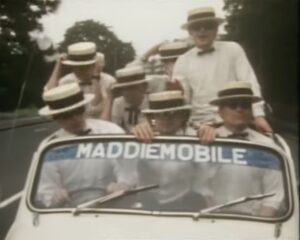 A practical {working?} example..."In this dream, i was living with my family in an area near Mesa Verde, in a home i had never seen before. I was going into my garage to get my car - in this dream, the garage was a huge place - when i saw that some Indians were living there. I went up to them to ask if everything was okay, but they ran away. Nothing like this had ever happened before. I remember thinking, ''How odd that they would want to live in my garage." Then as i headed for my car, i saw three young Indian children running to the back of my garage to hide from me. I went over to see where they were hiding and to speak to them, and i saw that they had gone into a round hole three feet in diameter. I knew i had never seen this hole before. I looked into the hole and saw that it went deep into the earth, so i dropped inside to find what was in there. The underground space opened into a very large tunnel about twelve feet high and wide...I am sure that i had not gone more than a quarter mile, when lots of them {children} blocked my way...Then three men who appeared to be in their thirties gently pushed their way to the front...The oldest one, he might even have been forty or so began to speak." ['Serpent of light beyond 2012' / D. Melchizedek]. Define those keys to {interpret} a meaning beyond the obvious.
A practical {working?} example..."In this dream, i was living with my family in an area near Mesa Verde, in a home i had never seen before. I was going into my garage to get my car - in this dream, the garage was a huge place - when i saw that some Indians were living there. I went up to them to ask if everything was okay, but they ran away. Nothing like this had ever happened before. I remember thinking, ''How odd that they would want to live in my garage." Then as i headed for my car, i saw three young Indian children running to the back of my garage to hide from me. I went over to see where they were hiding and to speak to them, and i saw that they had gone into a round hole three feet in diameter. I knew i had never seen this hole before. I looked into the hole and saw that it went deep into the earth, so i dropped inside to find what was in there. The underground space opened into a very large tunnel about twelve feet high and wide...I am sure that i had not gone more than a quarter mile, when lots of them {children} blocked my way...Then three men who appeared to be in their thirties gently pushed their way to the front...The oldest one, he might even have been forty or so began to speak." ['Serpent of light beyond 2012' / D. Melchizedek]. Define those keys to {interpret} a meaning beyond the obvious.
'Indian Givers: How Native Americans Transformed the World' / J. Weatherford.
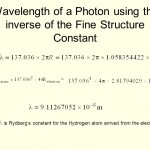

A centring within.
"Though they were enemies, [Bacon mocked Aquinas for only being able to read Aristotle in translation], both Aquinas and Bacon were representatives of the impulse of the age...to strengthen and refine the 'faculty of intelligence'. They found 'magic' in thinking. The capacity for prolonged, abstract thought, for juggling with concepts, had existed once before, but only briefly in Athens of Socrates, Plato and Aristotle, before being snuffed out again." [Chapter 18, 'The Secret History' by J. Black].
"Knowledge gives strength, doubt paralyzes the will."
"...the 'nails' of objectivity - which give conscience to thought."
The symbol of which is the Crown of Thorns, i.e.,"The 'thorns' of the crown center function as the 'nails' of objectivity..." [Taken from 'letter 5' from within the book by Tomberg].
'On Having No Head: Zen and the Rediscovery of the Obvious' / D. E. Harding.
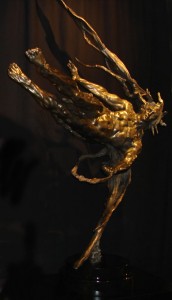
'Photon'.
A more practical attempt on the same...'The Future of the Ancient World', ['essays on the history of consciousness']. By J. Naydler. And / or 'The Synchronicity Key' by D. Wilcock. For a head scratcher, compare, 'Creative Evolution' by H. Bergson to 'The Reflexive Universe' [evolution of consciousness] by A. M. Young. Together with 'The Consciousness of the Atom' [try not to laugh] by Alice Bailey, and 'A study in Consciousness' by Annie Besant, and/or 'Philosophical Geometry' by Andre Vandenbroeck. And/or ''God and the Unconscious' by Victor White. Or 'Symbol and the Symbolic: Ancient Egypt, Science, and the Evolution of Consciousness' / R. A. Schwaller de Lubicz.
Refresher: "In trying to understand the atom, physicists built quantum mechanics, the most successful theory in science and the basis of one third of our economy. They found, to their embarrassment, that with their theory, physics encounters consciousness." [From the book 'Quantum Enigma' by B. Rosenblum and F. Kuttner].
Refresher: " I make no secret whatsoever of the fact that my rather revolutionary model of the atom came to me in a dream.'' Niels Bohr.
Finally, for a very good read, that seems to tie in all the above with 'its' possible 'physical' connection [possibility of], try.."The Hidden Messages in Water" by Masaru Emoto. "A New York Times Bestseller", [although it has to be said, that these days there seems to be more "best sellers" than bunny rabbits or would that be 'hares'?].
OR "We need no longer to remain ignorant about the structure, identity and purpose of Consciousness. It is merely a biological phenomenon...it is written into the energy of the universe itself". [Introduction to the book 'The Source Field Investigations'. D. Wilcock]. That sentence understood, in relation to the information within his book. This subject only touched on within the same book, especially in relation to the 'Pineal gland'. Understanding the 'whole' subject, gives more 'substance' and therefore a deeper possible meaning to those scientific 'facts', ideas and opinions. Try ''basket''.
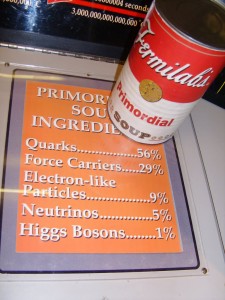
Any missing ingredients?

Leaping / jumping spiders?
That primordial soup is the best foot forward. The best hypothesis we have after all these years. Meanwhile technology has moved forward in leaps and bounds as proven by such advances in D.N.A / Gene technology. Yet no advances have been made in finding or more importantly putting forward an adequate hypothesis as to why we cannot go beyond that ‘soup’. That eternal question again. That nagging yet profound one. Why! Not just why we have not yet found it or why we cannot take it to a ‘second’ stage. Primordial broth? [ Some believe that not even that first step has yet been achieved.’To many cooks? Or too few? ]...but more importantly, why do we accept that eternal answer that all give in response to that same question...
’Lets not worry about it. After all, its just a question of time before we do. We exist do we not. Therefore sooner or later we must/will find that missing link’...The one between animate/inanimate... How many more generations ? Ten/twenty? Before we take a deeper interest. Before we attempt to find a possible answer for ourselves.
'The Missing Link: Reflections on Philosophy and Spirit' / Sydney Banks.
"The chain of life contains a great mystery. According to Biologists, the developmental sequence went something like this: atoms - minerals - crystals - large molecules - amino acids - ? - DNA. But the mystery lies with the question mark. Just how did the leap from amino acids to DNA occur?'' [Douglas Monroe].
A 'leap' of the imagination? Think about in relation to that ''bit''.

'Wheels' of time.

Winged or wingless?
The authors of this final remaining; yet least understood subject; also understand that ‘life exists’. Yet they continue to spend time and effort on the same subject. Each author explaining the same thing in their own way. [Boredom?] That same subject UNbeknown by most individuals is...and always has been...in the past and still in the present...one of the most prolific ‘subjects’ written about. [ illusional?] Generation after generation...year in year out...it compares to anything fiction or otherwise. That same subject that once understood implies what that ‘missing link’ could be. That understanding/ ‘general idea’ by way of concepts and symbols has a certain logic to it. It is that ‘logic’ that makes the subject a viable one. As logic can only do in any subject. And until we in [A] can go beyond that ‘soup’...that logic will always agree with this subject. Whether we like it or not, i.e......
"This life principle, this basic essential of Being, and this mysteries elusive factor is the correspondence in man of that which we call spirit or life in the macrocosm." [Introduction to the book by A. Bailey]. Recall what ''correspondence'' implies.

Gulls Wings. BACK to the future?
A work in progress: "Palazzo Schifanoia is a Renaissance palace in Ferrara, Emilia-Romagna (Italy) built for the Este family. The name "Schifanoia" is thought to originate from "schivar la noia" meaning literally to "escape from boredom" which describes accurately the original intention of the palazzo and the other villas in close proximity where the Este court relaxed. The highlights of its decorations are the allegorical frescoes with details in tempera by or after Francesco del Cossa and Cosmè Tura, executed ca 1469–70, a unique survival of their time. The palace had its origins in a single-storey structure without wings built for Alberto V d'Este (1385), a small retreat intended solely for suppers and diversions (delizie), as a sort of banqueting house, with an urban front and a garden front. As the equivalent of a Roman villa suburbana, the Palazzo Schifanoia long predated the first such pleasure villa built in Renaissance Rome, the Belvedere built for Nicholas V."
Refresher: "This life principle, this basic essential of Being, and this mysteries elusive factor is the correspondence in man of that which we call spirit or life in the macrocosm." [Introduction to the book by A. Bailey]. Recall what ''correspondence'' implies.
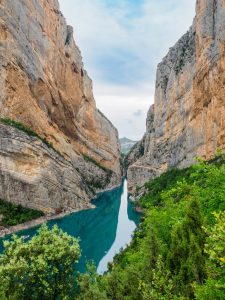
''Beethoven's fifth is morse code for the letter 'V'.....'' ['The Chase'].
continued..."Metaphysical brocade or not, it does not matter, the fact of the unintelligibility for human thought of theory [not the facts!] of evolution advanced by science nevertheless remains a fact. It is and always will be unintelligible in so far as it takes consideration of only half of the whole circle of evolution, and refuses to accept the other half of the circle; that of involution [or the 'fall'], which would make it intelligible."
Understanding that universal concept of [as in this instance] the ''divine bit'' in relation to what is implied by the ''fall'' - by what was defined [if only in modern times] as a 'metaphysical' exercise - defines the above. Before those bigger questions are asked. Fact or fiction - a possibility or not? As it does with the following...
if that same 'information' [framework] had been 'discontinued' at the end of say, the Egyptian period, then one could say, that maybe it was just an 'Egyptian' belief system. After all, most people, understand that the Egyptians were into that 'afterlife stuff'. But that same 'information' was then taken over by the Greeks and represented with new 'figure heads' and 'stories', i.e.,Greek Mythology. The Romans do the same. Islam takes it through the 'dark ages' together with a representation of same by stone builders and the 'Romances', that began in Southern France, followed by the 'Mystery clubs' right up to the present date, with so called 'stand up' philosophers. Question. Why? i.e.,when all the available information is assessed by objective analysis, what does Ockhams Razor say?
Side note: "Through the combined efforts of Wilhelm and Jung we have for the first time a way of understanding and appreciating Eastern wisdom which satisfies all sides of our minds. It has been taken out of metaphysics and placed in psychological experience. Stripped of its archaic setting, 'The Secret of the Golden Flower' is the secret of the powers of growth latent in the psyche..." Try ''being'' and/or ''rose'' as a beginning towards an end {'flowering'?}.
"Human experience is the tricky, paradoxical, mysterious and ultimately unpredictable thing that Shakespeare dramatized. Bacon taught human kind to look at the physical objects that are the contents of experience and to note the predictable laws that they obey. He devised new ways of thinking about the contents of experience. He advised the discarding of as many preconceptions as possible while gathering as much data as possible, trying not to impose patterns on it, but waiting patiently for deeper, richer patterns to emerge. This is why in the history of the philosophy of science he is known as the Father of Induction. In short, Bacon realized that if you can observe objects as objectively as possible very different patterns emerge from the ones that give subjective experience its structure. This realization would change the face of the planet." [Chapter 20, page 300, 'The Secret History of the World']. Link to the word and {purpose?} meaning of ''synchronicity''.
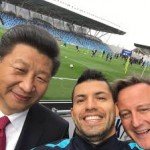 ''Wise men make more opportunities than they find." [Francis Bacon]. Quote used in the address to the 'Westminster locals' {Oct 2015] by the Chinese President Mr Xi Jinping.
''Wise men make more opportunities than they find." [Francis Bacon]. Quote used in the address to the 'Westminster locals' {Oct 2015] by the Chinese President Mr Xi Jinping.
N.B. Both men eventually {in the course of Mr Jinpings visit} went off to the pub - {the middle one went off somewhere else - ball{s?} in hand } - the name of the pub - 'The Plough'. Question. Coincidence or a meaning full one? Only time will tell. Try ''plough''. Then ''Bacon''. Question. Is Mr Jinping 'aware' of something - or attempting to become aware? Anyone whose aim is to eradicate corruption for the greater good - must have an abundance of ''grace'' within. Try that one, i.e., put those keys together to define something - other than the obvious.
'Mans Search for Meaning' / Viktor Frankl.
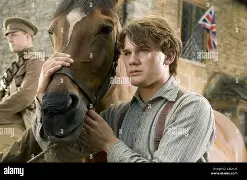
War Horse {2011}. 'lozenge' birthmark?
A working example: ''Find a ''third force'', that is, ways to reinforce your desire to sustain effort in this Work. Don't let much time go by without feeding that part of yourself that wants to make these efforts. If one does not increase, one will decrease. Christ says: 'He who puts his hand to the plough and looks back is not worthy of the Kingdom.'' ['Wisdom of the 4th Way']. Continued elsewhere.

Net? Safety net? Web of Manifestation?
And/or: As a volcanic eruption darkened the sun roughly 4,900 years ago, a Stone Age culture sacrificed hundreds of decorated stone plaques to try to coax it back {hypothesis}.
Possibly belonging to the Funnel Beaker people....
'Narrow'?
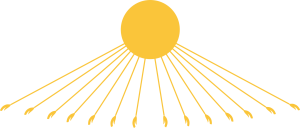
Golden?
A trove of engraved stones unearthed from ritual gathering sites on Bornholm, an island in Denmark, display motifs that most commonly represent the sun and croplike plants. What’s more, an analysis of ice cores points to a volcanic eruption around the time the stones were intentionally buried {"Like seeds into plowed furrows"}....

'Blank'?
Iversen and his team were excavating an area of Vasagard known as a causewayed enclosure , a kind of communal gathering space dated to the Neolithic period found across northern and western Europe, and as far west as Ireland....
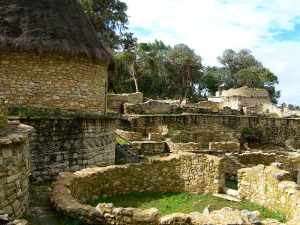
Kuelap. Circular stone 'huts' on a stone 'platform'. 'Lozenge' = "parallel lines"? Above or below the clouds?
A series of ditches where people put artifacts and made sacrifices and then sealed them up, and built several circular wooden structures on top - repeated across many centuries. Most stones bear either the sun motif or a series of parallel lines of varying lengths and are fashioned of hard, dark shale, while 25 {'twentyfive'?} are made from fine-grained pebbles. Four others are translucent {opaque?} quartz....Based on wear patterns, it seems a number had been carried and rubbed over time. 38 are blank , perhaps intended as a stockpile....
“It is a bit special that all of a sudden we have all these stones, and you don’t see them from before or later,” says Iversen, of the University of Copenhagen. This led Iversen’s team to conclude the burial was in response to a major incident. Taken together, the evidence suggests the stones’ burial may have been linked to the potentially cataclysmic event, archaeologist Rune Iversen and colleagues report January 15 in Antiquity. {'Archaeology' / September-October 2025}.
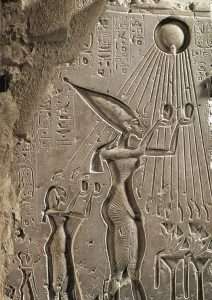
Triangular headgear or tumulus?

Pebbles?
And/or: The First Conscious Shock does not happen to man asleep. It is a conscious effort requiring special knowledge and self-observation and given in connection with the incoming impressions of life and a person’s mechanical reactions to them. Roughly, it consists in seeing the object and seeing one’s reactions to it simultaneously and without being identified. This process is sometimes put diagrammatically as follows:
(2) The First Conscious Shock to the human machine increases the energies of the machine in the form of Hydrogen 24 and Hydrogen 12. The result is actually to give every cell in the body different food —that is, higher hydrogens. In regard to this second point let me remind you here that neither the psychical nor the physical functions of man can be understood unless it is grasped that they can both work in different states of consciousness. If the First Conscious Shock is applied, the Third State of Consciousness is touched, with the result that the human machine works in a different way, owing to new energies, both as regards its psychical and its physical functions. The Third State of Consciousness is the state of Self Remembering, which man should possess but which he has gradually lost because of the wrong conditions of his life. Today it can be said only to occur in the form of very rare flashes.
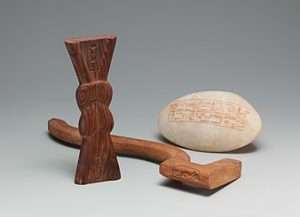
Someone's New name.
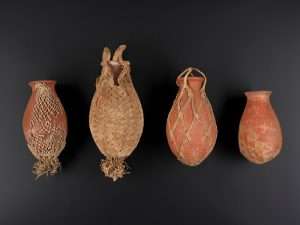
Found with the Qurna Queen and child: ''under a rocky outcrop {'overhang'?} on the north side of the valley at Thebes.''
It is the creation of this Third State of Consciousness that forms the First Conscious Shock—that is, the first object of the work is to recover this lost state, namely, to make a man remember himself until eventually he does not merely have rare flashes of increased consciousness (over which he has no control) but can create in himself increasing degrees of self-remembering by deliberate efforts. These efforts, which belong to the First Conscious Shock, gradually cause the machine to work more rightly. Many wrong functions, both in the psychic and physical spheres, acquired by the wrong working of the machine in the two lowest states of consciousness—that is, in darkness—then begin to disappear of themselves.

Basket case?
Let us now return to the question as to what prevents Do 48 from passing on to Re 24 and then to Mi 12. Why does not this always happen? It does happen in childhood ; and to a certain extent Mi 12 is created in the body in early youth. We may remember its action. But as Personality grows more and more thickly round Essence, it happens less and less. That is, impressions are more and more intercepted by Personality, which is represented in the diagram by the double line marked X. Impressions coming in through the senses fall, as it were, on a thick net which catches everything (Save a very small part, which passes onwards and produces a very small amount of Mi 12).

'Lozenge'?
This net is the Personality, with its strong Buffers, its fixed Attitudes, its mechanical Associations, its Rolls automatically set in motion, and its ideas that it knows and can do, with all its contradictory ‘I’s, with all the different forms of negative emotion, which it has acquired by imitation, with all its habits of identifying, considering, self justifying, imagining and lying, centred in the False Personality. All these prevent impressions from passing on in their normal transformations. In other words, something Opaque, as it were, has formed itself at the place where impressions enter, and closed up the way for their passage onwards. {'Psychological Commentaries on Gurdjieff and Ouspensky' / M. Nicoll}.
“Again, the kingdom of heaven is like unto a net, that was cast into the sea, and gathered of every kind: which, when it was filled, they drew up on the beach; and they sat down, and gathered the good into vessels, but the bad they cast away.”
'153' / 'Box' ?

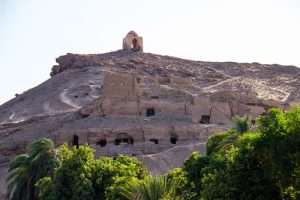
Qubbet el-Hawa or "Dome of the Wind" is a site on the western bank of the Nile, opposite Aswan, that serves as the resting place of ancient nobles and priests from the Old and Middle Kingdoms of ancient Egypt.
"Read not to contradict and confute; nor to believe and take for granted; nor to find talk and discourse; but to weigh and consider." ['Of Studies' 1625. / F. Bacon].
Recall what 'three' represents in relation ''to reinforce''. As it is in anything that ''one has to reinforce''. Represented {as ONE example} as with one of the pillars in the Hebrew culture,i.e.,''by strength.'' Enlarged elsewhere.
Side note {something to ponder on}: "Saturn is also named the Lord of Decrease...his power manifests in the later stages of decay. He rules over the spoiled, the filth and the refuse of society..." ['Saturn and the Theoretical Foundations of an Emerging Discipline']. Try ''Herod'' to 'see' it from {one} perspective.
Question. What would represent an ''increase'',i.e., Black/White? Dark/light? or M/F?
Question 2. What would represent the ''Lord'' of it.
Question 3. Where {how?} would both those concepts {principles?} be represented within {say} a landscape?

Long or wide?
 A working example: "As the Nile flows north out of Sudan into Upper, or southern, Egypt, it passes a small island that was a crossroads of exchange between Africa and the Middle East for thousands of years. Such great quantities of ivory were traded on the island that the ancient Egyptians called it Yeb, which means elephant. This legacy is the source of the name the Greeks gave it in the late fourth century b.c.—Elephantine. The island measures just a mile long and 1,300 feet across at its widest point....Farmers in the southern part of Elephantine, however, often dug into mounds containing ruined ancient houses to extract soil to use as fertilizer. In the 1890s, they began to come across bundles of papyrus documents....They were written in Aramaic, a widely used Semitic language, and contained biblical names such as Hosea and Menahem, indicating they might be connected to the Torah, or the first FIVE books of the Hebrew Bible...
A working example: "As the Nile flows north out of Sudan into Upper, or southern, Egypt, it passes a small island that was a crossroads of exchange between Africa and the Middle East for thousands of years. Such great quantities of ivory were traded on the island that the ancient Egyptians called it Yeb, which means elephant. This legacy is the source of the name the Greeks gave it in the late fourth century b.c.—Elephantine. The island measures just a mile long and 1,300 feet across at its widest point....Farmers in the southern part of Elephantine, however, often dug into mounds containing ruined ancient houses to extract soil to use as fertilizer. In the 1890s, they began to come across bundles of papyrus documents....They were written in Aramaic, a widely used Semitic language, and contained biblical names such as Hosea and Menahem, indicating they might be connected to the Torah, or the first FIVE books of the Hebrew Bible... .The texts also referenced a god named Yahu. Scholars recognized this as a variant of the Hebrew Yahweh, meaning “I am” or “He that is,” a name used to refer to God in the Torah. Taken together, the papyri hinted that some sort of Israelite or Jewish community had been present on Elephantine....Some of the Judeans are identified in the documents using military titles, suggesting they originally came to Elephantine as mercenaries in the service of Egypt, which had conquered and briefly ruled over Judah in the late seventh century b.c. As more Judeans and people from other parts of what had once been the Kingdom of Israel made their way to the island as traders {'merchant'}, the community began to grow....
.The texts also referenced a god named Yahu. Scholars recognized this as a variant of the Hebrew Yahweh, meaning “I am” or “He that is,” a name used to refer to God in the Torah. Taken together, the papyri hinted that some sort of Israelite or Jewish community had been present on Elephantine....Some of the Judeans are identified in the documents using military titles, suggesting they originally came to Elephantine as mercenaries in the service of Egypt, which had conquered and briefly ruled over Judah in the late seventh century b.c. As more Judeans and people from other parts of what had once been the Kingdom of Israel made their way to the island as traders {'merchant'}, the community began to grow....  The Elephantine papyri included sufficient detail that, in 1961, Porten was able to produce a sketch of the temple of Yahu showing its location. The texts describe it as having bronze doors and a cedar roof {'tiles'?}, and as being on a main street near a large Egyptian temple dedicated to the ram-headed god Khnum, who was revered for controlling the waters of the Nile.....A rectangular {'double'?} mudbrick building that they identified as the temple....The temple was surrounded by an enclosure wall and sat on a platform built atop a natural hill {'pavilion'?}. Archaeologists identified two levels of flooring, each covered by a layer of sand, indicating that the temple had been abandoned twice, which matches descriptions in the papyri....
The Elephantine papyri included sufficient detail that, in 1961, Porten was able to produce a sketch of the temple of Yahu showing its location. The texts describe it as having bronze doors and a cedar roof {'tiles'?}, and as being on a main street near a large Egyptian temple dedicated to the ram-headed god Khnum, who was revered for controlling the waters of the Nile.....A rectangular {'double'?} mudbrick building that they identified as the temple....The temple was surrounded by an enclosure wall and sat on a platform built atop a natural hill {'pavilion'?}. Archaeologists identified two levels of flooring, each covered by a layer of sand, indicating that the temple had been abandoned twice, which matches descriptions in the papyri....

Keresh (Hebrew קֶרֶשׁ) is a Talmudic unicorn living in the forest of Bei Ila'ei. It is similar to a deer, but the length of its body is said to be sixteen cubits (8.6 m / 28.3 ft).
A fundamental tenet of Judaism as laid out in the Torah is that there is only one God: Yahweh. The papyri, however, show that the Judean community on Elephantine worshipped multiple gods. One papyrus reports that members of the community gave money to different deities associated with the temple: Yahu received 12 silver keresh and six shekels, the god ’Asm Bethel received seven keresh, and the god ’Anath Bethel received 12 keresh. “Yahu wasn’t the only god, but was the main deity,” says Barnea. “We need to remember that we are not yet talking about Judaism. That didn’t exist until the second century b.c., when the Torah emerged as a clear set of rules and beliefs that people followed. This community goes back to before that time.”

"She who loves silence". Day of Rest?
The papyri also suggest that the Judeans showed signs of embracing other practices that would become pillars of Judaism as found in the Torah. For example, says Porten, people seem to have been aware of the Sabbath. Personal correspondence in the papyri refers to completing tasks the day before the Sabbath, and one ostracon instructs a woman to meet a boat laden with vegetables on the Sabbath, “lest they get spoiled.” “It’s hard to discern the extent to which they kept the Sabbath,” Porten says. “With the woman meeting the boat, maybe that means they didn’t refrain from such activities on the Sabbath like later Jews did, or perhaps it means there were extenuating circumstances, like a famine, for which they needed to break the Sabbath to survive.”
Boiling or roasting?
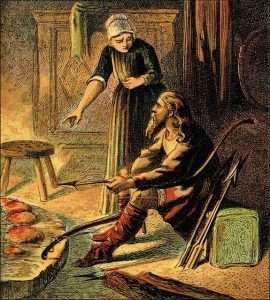
Leavened or UNleavened?

Spear point? In perspective? Any quiver?
With one possible exception, the papyri do not refer to the religious holidays that came to play an important role in Judaism. “One letter shows they likely kept Passover, refraining from eating leavened bread,” says Porten. A missive written by a man named Hananiah relates that Persian governing authorities instructed or allowed the Judean community to “refrain from leaven from the fifteenth of the month to the twenty-first.” Porten interprets this as a reference to Passover, which begins on the fifteenth of Nissan, the first month in the Jewish calendar, during which Jews eat only unleavened bread.
Leavened / UNleavened.
In contrast to many traditions set out in the Torah, women in the Judean community appear to have had high standing. For example, the papyri show that Mibtahiah initiated a divorce—which women were barred from doing under later Torah law—and rejected potential suitors....
Odysseus to enlarge.
One of the houses archaeologists unearthed near the temple appears to have belonged to Mibtahiah, a woman named extensively in the papyri. The documents record that she inherited a house from her father, Mahseiah, measuring 13 by 11 cubits, or around 19.5 by 16.5 feet. Before she inherited the house, the papyri note, it went unused for a period of time and partially collapsed, but was later rebuilt.
'Thirteen' / 'Eleven'.

'M'?

Remedy?
The papyri also suggest that the Judeans showed signs of embracing other practices that would become pillars of Judaism as found in the Torah. For example, says Porten, people seem to have been aware of the Sabbath. Personal correspondence in the papyri refers to completing tasks the day before the Sabbath, and one ostracon instructs a woman to meet a boat laden with vegetables on the Sabbath, “lest they get spoiled.” “It’s hard to discern the extent to which they kept the Sabbath,” Porten says. “With the woman meeting the boat, maybe that means they didn’t refrain from such activities on the Sabbath like later Jews did, or perhaps it means there were extenuating circumstances, like a famine, for which they needed to break the Sabbath to survive.”
Boiled / Roasted.
Side note: Perhaps we may start by admitting that we are wounded {naked?}. ‘The metaphysician (is a) wounded man. A wounded man is not an agnostic — he just has different questions arising out of his wound. Like the shaman, the wounded healer is one who knows that the true cause of pain is loss of Inner reality — the Inner Kingdom. This realization fired the Gnostics to go upon their own voyage of discovery, just as it later inspired those who went on quest for the Grail and the healing of the Waste Land. Truly, there are many ways of achieving the Great Work. {Page 253 'The Western Way'}.
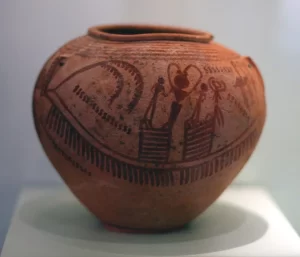
Ship {'boat'} poop deck?

North and south. East and west. Which and why?
Continued: "The letters provide evidence that, just as it was permissible to worship multiple gods, it was acceptable to have multiple temples. This contrasts sharply with the Torah, which states that there is only one God—Yahweh—who should be worshipped in only one place. The Judeans believed this was the Temple in Jerusalem. The Hebrew Bible contains cautionary tales of those who build additional places of worship, such as Jeroboam, who is punished by God in the Book of Kings for constructing a sacrificial altar outside the holy city."
Altar of sacrifice or ALTAR OF WITNESS?
 19:19 not only to enlarge but to prove a MINDSET!
19:19 not only to enlarge but to prove a MINDSET!
Side note: "Stonehenge, the famous stone circle in southern England, has confused historians for centuries, but researchers on Wednesday revealed new and unexpected information about the monument's six-ton Altar Stone.
It was long believed that the stone, which sits in the middle of the iconic circle, came from Wales, but new research suggests it actually came from hundreds of miles away in Scotland, raising new questions about transportation methods from 5,000 years ago. A geological study of the Altar Stone shows it likely came from Orcadian Basin, Scotland, at least 466 miles from Stonehenge, researchers said in a study published Wednesday in the journal Nature."
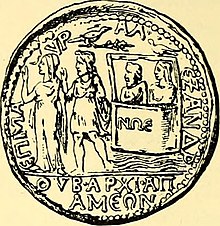
"New evidence for the antiquity of the tradition associating Mt. Ararat in Turkey with the landing place of Noah’s Ark comes to us in the form of a unique coin on display at the Israel Museum. This large bronze medallion was struck 1700 years ago at Apameia Kibotos in Asia Minor (modern Turkey) near the mountains of Ararat where, it is said, Noah’s Ark came to rest after the flood. This coin, depicting the events of the story of Noah’s Ark related in Genesis 6–8, is the only coin-type known to bear a Biblical scene. Apameia Kibotos was a Phrygian city established by Antiochus I (280–261 B.C.) who named it after his mother, Apameia." 'Helen'?
Continued: The governor of Yehud and officials from Samaria both replied, according to the papyri, giving the Judeans permission to rebuild their temple but decreeing that they should make offerings only of grain, not animals....

'M' OR 'W'?
“Was that because animal sacrifices had gotten them in trouble with the Egyptians and led to the temple’s destruction, or were the authorities saying there was only one legitimate place for these kinds of animal sacrifices?” asks Edelman. “We really don’t know.” The papyri record that the Elephantine temple was indeed rebuilt. Archaeologists found evidence that the area enclosing the new structure was reduced in size, possibly to accommodate the enlargement of the nearby Egyptian temple complex.....
'Earthquake'.
 About a decade after the temple was rebuilt, the story of the Judean community on Elephantine comes to an end. No Aramaic papyri or other evidence of the community has been found on the island dating to later than the very early fourth century b.c., by which point Egyptian rebellions had ended Persian rule....Van der Toorn notes that, in the second century b.c., Jewish scholars in the northern Egyptian city of Alexandria translated the Torah into a Greek version known as the Septuagint. ['Archeology' / Sep-Oct 2024].
About a decade after the temple was rebuilt, the story of the Judean community on Elephantine comes to an end. No Aramaic papyri or other evidence of the community has been found on the island dating to later than the very early fourth century b.c., by which point Egyptian rebellions had ended Persian rule....Van der Toorn notes that, in the second century b.c., Jewish scholars in the northern Egyptian city of Alexandria translated the Torah into a Greek version known as the Septuagint. ['Archeology' / Sep-Oct 2024].
Delta?
The beginning of the 'Children' of Israel.

Childs play?
"Read not to contradict and confute; nor to believe and take for granted; nor to find talk and discourse; but to weigh and consider." ['Of Studies' 1625. / F. Bacon].
And/or: However, the verses go on to say, “But where can wisdom be found ... it cannot be gotten for gold ..." Vob 28:12, 15). It then says “From where does wisdom come.... It is hidden from the eyes of all life (beasts; chai), and kept shut out from the birds of the air.... But God understands its way and knows its place.... When He makes a weighing for the wind ..." Vob 28:20-26). This can denote the Torah (see Zohar 3:256b).
Storm wind to enlarge.
Analogy {in reverse?}: "He wrought also a fair fallow field, large and thrice ploughed already. Many men were working at the plough with it, turning their oxen to and fro, furrow after furrow. Each time that they turned on reaching the headland a man would come up to them and give them a cup of wine, and they would go back to their furrows looking forward to the time when they should again reach the headland. The part that they had ploughed was dark behind them, so that the field, though it was of gold, still looked as if it were being ploughed - very curious to behold..." ['Homer's Secret Iliad']. Continued / enlarged elsewhere. Try ''wheat''.
Question. ''Headland'' in relation to 'peninsula' ?
 A working example: ''Cornwall (/ˈkɔːrnwɔːl, -wəl/;[3] Cornish: Kernow [ˈkɛrnɔʊ]) is a historic county and ceremonial county in South West England. It is recognised as one of the Celtic nations, and is the homeland of the Cornish people. Cornwall is bordered to the north and west by the Atlantic Ocean, to the south by the English Channel, and to the east by the county of Devon, with the River Tamar forming the border between them. Cornwall forms the westernmost part of the South West Peninsula of the island of Great Britain. The southwesternmost point is Land's End and the southernmost Lizard Point.....The ceremonial county of Cornwall also includes the Isles of Scilly, which are administered separately. The administrative centre of Cornwall is Truro, its ONLY city.''
A working example: ''Cornwall (/ˈkɔːrnwɔːl, -wəl/;[3] Cornish: Kernow [ˈkɛrnɔʊ]) is a historic county and ceremonial county in South West England. It is recognised as one of the Celtic nations, and is the homeland of the Cornish people. Cornwall is bordered to the north and west by the Atlantic Ocean, to the south by the English Channel, and to the east by the county of Devon, with the River Tamar forming the border between them. Cornwall forms the westernmost part of the South West Peninsula of the island of Great Britain. The southwesternmost point is Land's End and the southernmost Lizard Point.....The ceremonial county of Cornwall also includes the Isles of Scilly, which are administered separately. The administrative centre of Cornwall is Truro, its ONLY city.''
Side note: ''The first dinosaur fossils were recognized in the early 19th century, with the name "dinosaur" (meaning "terrible lizard") being coined by Sir Richard Owen in 1842 to refer to these "great fossil lizards"
Continued: ''The modern English name Cornwall is a compound of two ancient demonyms coming from two different language groups:
-

Belatucadros.
Corn- originates from the Proto-Celtic "*karnos" ("horn" or "headland") is cognate with the English word "horn" (both deriving from the Proto-Indo-European *ker-). An Iron Age tribe that occupied the Cornish peninsula, the Cornovii ("peninsula people") may have also existed.[20][21][22][23][a][excessive citations]
- -wall derives from the Old English exonym "wealh", meaning "foreigner" (i.e. a Welsh person).''
And/or: ''The name Tamar (or Tamare) was mentioned by Ptolemy in the second century in his Geography. The name is said to mean "great water."[5][6][7] The Tamar is one of several British rivers whose ancient name is assumed by some to be derived from a prehistoric river word apparently meaning "dark flowing" and which it shares with the River Thames.''
'Flowing against'?
 Side note: Harbour {harbor} water coming right up to the Sphinx in olden times. The word ''peninsula'' used. A few hundred miles due east on the coast of the Red {'Reed'?} Sea - the oldest harbour in the world found that was used for the boats found inland {31 rock cut caves} belonging to Khufu. Inscriptions found close by identifying Khufu with 'two snakes'....'' ['Lost Treasures of Egypt'].
Side note: Harbour {harbor} water coming right up to the Sphinx in olden times. The word ''peninsula'' used. A few hundred miles due east on the coast of the Red {'Reed'?} Sea - the oldest harbour in the world found that was used for the boats found inland {31 rock cut caves} belonging to Khufu. Inscriptions found close by identifying Khufu with 'two snakes'....'' ['Lost Treasures of Egypt'].
"Homer says the field was dark behind them and yet still shone with gold - a curiosity that can be explained by the backdrop of the Milky Way illuminating the area of dark sky..." Same book.
Question. If a correct analysis - how would a 'peninsula' be represented in that same night sky?
'Gold' in relation to an ''illumination'' of something?
Side note: ''The Inca's referred to gold as the 'sweat of the sun'...'' ['Pawn Stars' / 2020].
''In science Archimedes is said to have cried out ''i have found it'' after determining the means of finding the purity for GOLD.'' ['Weakest Link' / BBC].
"Eureka" comes from the Ancient Greek word εὕρηκα heúrēka, meaning "I have found (it)", which is the first person singular perfect indicative active of the verb εὑρίσκω heurískō "I find".[1] It is closely related to heuristic, which refers to experience-based techniques for problem-solving, learning, and discovery.''
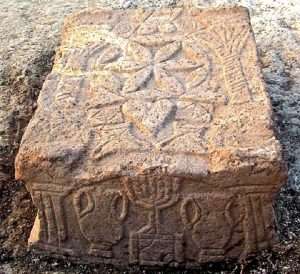
The Magdala Stone. Found in the 'city' of Mary Magdalene {shadow aspect?}. Oldest thing ever found that relates to the 2nd temple. Around at the time of Christ. Pillars for corners {concave?}. Head of the corner'? Question. Cubit stone for a foundation ? - of non other than the sacred Menorah ''made out of pure gold''. Recall what ''seven'' implies in the overall scheme of things. Question 2. What do 'vases' represent?
Working example: "Walking towards the front entrance to this cathedral, I remembered that the Inca temple that had once stood here had been covered with more than 700 sheets of pure gold and that its spacious courtyard had been planted with ''fields'' of replica corn also fashioned out of gold. I could not help but be reminded of Solomon's temple in far-off Jerusalem, also reputed to have been adorned with 'sheets' of gold and a marvellous orchard of golden 'trees'. [Page 44 'Fingerprints of the Gods' / G. Hancock]. What do ''trees'' represent?
A grain of wisdom?
Question. How many grains make a cake?
Funerary cake?

Wheels of 'fire' {chariot?} depicted within those side alcoves. Semi-circular in 'form'. In 'profile'?
And/or: "Gnosis illuminates the deepest substratum of self. Walk the road to the land of shadows. There dwells the secret knowledge of the soul. One cannot free oneself by bowing to the yoke - only by breaking it. Be a breaker of yokes, not a digger of furrows." [Page 11 'The Deeper Teachings of Merlyn' / D. Monroe].
The main point being - such answers can be ''worked'' out simply because of those universal constants - proving - validity of subject material. From the oral tradition up to ....?
Question. What does that imply?

Queen of Punt. 'Fat' of the land?
As seen from a different perspective {i.e., a working example, i.e., something hinted at}: "Not a perfect emerald? Not to worry, Zieglerin would have explained it as part of the process of 'ripening'. The 'idea' that gems and metals 'grow' in the ground from seed was pervasive within alchemy. Where did this idea come from? Proof by analogy, of course. If plants grow from seeds in the ground, and metals/gems are found in the ground, then surely metals/gems 'grow' from seed, too. The alchemists would explain this to the patron - they needed more time - and money - to 'perfect' the process. But the Paracelsian women were not the only ones who were seeking patronage. There was a complementary crop of Paracelsian men, and we are headed off to join them next." ['The Chemistry of Alchemy'].
''Analogy'' - as a means...?
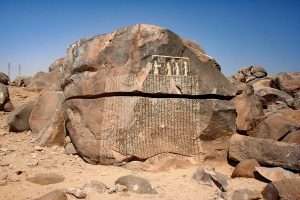
'Division' between N/S? or put another way - spine and head? ''neck'' = middle ground? Fat or 'thin'. Long or 'short'?
"The possibility of making gold has always been used by sages to hoodwink fools, so that the 'children of wisdom' - who cannot be deceived by selfish satisfactions - may be led toward the true path, which is the search for the real vision of the universe. Without the promise of gold, would the texts of master Hermetists have been disseminated, safeguarded, and respected by the ignorant?"
Jon Snow? {Game of Thrones}.
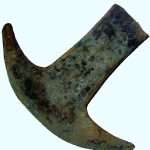
'Hoe' money. Aztec.
Side note: Gunpowder discovered by the Chinese {accidently} - while looking for the Philosophers Stone, attempting to ''turn base metals into gold.'' ['Flog It' / 8.1.20].
And/or: Giant carved stones used on the island of Yap {Caroline Islands} as money. Sometimes called ''stone money'' {'The Chase' / 11.1.22}.
Side note: ''Albert Einstein's surname when translated into English is - One Stone...'' ['The Chase' / 2018].

What do ''Jugs'' {of wine?} and a ''six petaled rose'' represent? And/or: A long necked beer jar found inside a Kushite tomb. The Kingdom of Kush that became the 25th Dynasty. Identified strongly with the Old Kingdom. All within the largest bend in the Nile River that became Egypts southern border in the time of Thutmose 1st. Karnac/Thebes therefore becoming the MIDDLE ground between N/S borders. Just as Amarna was within its normal ones. ['Black Pharaohs: Empire of Gold' / Nat. Geo / 2018]. Anything? Question. What does twentyfive represent? 'Mystery of Numbers' to enlarge.
But what makes the stone such a rare find in biblical archaeology, according to scholars, is that when it was carved, the Second Temple still stood in Jerusalem for the carver to see. The stone is a kind of ancient snapshot.
And it is upending some long-held scholarly assumptions about ancient synagogues and their relationship with the Temple, a center of Jewish pilgrimage and considered the holiest place of worship for Jews, during a crucial period, when Judaism was on the cusp of the Christian era.
Known as the Magdala Stone, the block was unearthed in 2009 near the Sea of Galilee in northern Israel, where a resort and center for Christian pilgrims was going to be built. Government archaeologists are routinely called in to check for anything old and important that might be destroyed by a project, and in this case they discovered the well-preserved ruins of a first-century synagogue and began excavating.
'Set in Stone'.
Philosophers Stone?
'See' it? i.e., more a 'spiritual' thing than a material one.
Side note: ''Albert Einstein's surname when translated into English is - One Stone...'' ['The Chase' / 2018].

And/or: {as one example}: ''What is really troubling them is their own Shadow, quite literally. For the first time the subtle levels of ordinary awareness have been expanded to bring into focus the darker side of the student's own nature....
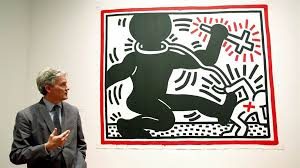
New 'beginnings' = S/E?
It has always been there, it is just that any kind of psychic activity be it basic meditation, simple pathworking and the like {study?}, will have expanded perception just enough for it to appear around the edge of the screen of reality....This shadow can get bigger and blacker {blacksmith?}....The way to deal with it is by acknowleding its existence, as part of yourself. It may be the forgotten self, the ignored self, the repressed self, even, but it is still a real, and actually valuable part of the complex and unique being which is you...Befriend it....find ways of working in harmony....It is part of the landscape of the mind, and will be far more use if you allow it to function properly, as your conscience or Guardian Angel.'' [Page 87 'The Path Through the Labyrinth' / M. Green].
Question. Carbon/Diamond?
''Criticism polishes the diamond of the truth.'' [Wim Hof / 'Freeze The Fear' / BBC1].
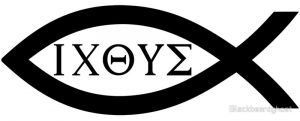
A 'northern' or 'southern' fish? or does it matter?
 And/or: Archaeologists have discovered a new site. The site turned out to be the presumed home-town of Mary Magdalene {'shadow' aspect} - one of Jesus’s most faithful followers. The dig also revealed an ancient marketplace and fishermen’s quarters along with the synagogue.
And/or: Archaeologists have discovered a new site. The site turned out to be the presumed home-town of Mary Magdalene {'shadow' aspect} - one of Jesus’s most faithful followers. The dig also revealed an ancient marketplace and fishermen’s quarters along with the synagogue.
Experts have raised the tantalizing possibility that Jesus may have taught in the synagogue when he was in Galilee. A local coin found in a side room was minted in A.D. 28, when Jesus is thought to have been alive.
Side note: ''The literal meaning of synagogue is 'place of gathering'....''
And/or: ''Most Christian scholars date the beginning of Christs ministry to 'twentyeight' A.D.....''
'Moon' link?
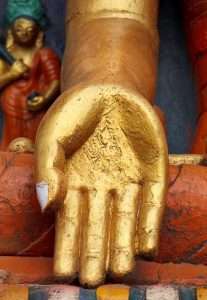
Hand of Buddha: Brahma to enlarge.

"Another interesting symbol, which later became a prime emblem of Northern Ireland, is the red hand....A myth descibes a race in which the first to reach land would win the throne {'House'} of Ulster. A certain prince called O'Neil was losing the race but cut off his hand and threw it to the shore, ensuring his hand touched land first. {Page 143 'Scota: Egyptian Queen of the Scots' / R. Ellis].
Now in its 'broader' {expansive} context {Macro, i.e.,as one example}: "The other aspect of the Hibernian Mysteries which is reflected in Druidism is not what is only connected with the soul, but what is connected with the spirit, namely, the 'creation' of the world {in the Micro sense of the word?} - and its opposite pole Resurrection from the 'Death' of the world. In this, the masculine element {and/or principle?} rules. This is the 'male' nature of the Hibernian Mysteries. The 'Father' -God - the Great Spirit - of the old western mysteries, was felt as embracing the entire Universe, so that his nature was equally manifest in the fact of death as in the fact of life. Everything was ''in the Father'', and the Father was in everything. So it is true to say that ''Death is the Father''. We come from the 'father', and we return to him, through that part of him which is death and which is his extreme manifestation in the world of matter. Man has ''contracted'' the whole universe - the very being of the 'father' - into his body at birth; at death the body is dissolved, and as a spirit man expands again into the universe, but in the full experience of his ''I AM''. "
Golden 'egg'?

Seven/eight and 'nine' as a means....?

'Six' petalled rose?
Continued: She has since spent years deciphering and interpreting the symbols that adorn the stone and researching the possible implications of the discovery....the Magdala Stone was found in the center of the old synagogue.....One side of the stone has what experts say is an unusual feature for the time: a carving of a seven-branch menorah. A candelabra of that kind is described in the Bible and is believed to have stood in the Temple, and it emerged as a Jewish symbol of hope for redemption centuries later.....During the annual eight-day festival of Hanukkah, which began on Sunday evening, Jews light a nine-branch menorah to commemorate the rededication of the Second Temple after a successful revolt against the Syrian-Greek Seleucid empire in 165 B.C.

The Church of Notra Dame de France - Soho - London. Aries-Pisces?

Inside, above the high alter, is a large tapestry designed by Dom Robert, a former Benedictine monk, and woven in Aubusson (a region of France famed for its tapestries and carpets). It depicts a scene from paradise, the young girl surrounded by flora and fauna which is though to represent the French Church in England.
And/or: ''In antiquity, the number eight, was considered interesting....It is the first form {octagon} to serve as the transition from square to the circle, which is important in the construction of domes.....It was regarded as a very lucky number: it was thought that beyond the seven spheres of the planets the eighth sphere, that of the fixed stars, was located. As a 'number of gods' it is found as early as in ancient Babylon...In the Mithriac mysteries one finds a mysterious eighth gate beyond the seven main gates....The Muslims believe there are 7 hells and 8 paradises....The custom of dividing gardens into eight parts carries over from one of the most famous works of medieval Persian literature, 'Sa'di's Gulistan' {Rose garden}, which is divided into 8 chapters....Others = Venus year of 8 months....Eight appears as a second beginning on a higher level...It is the day of purification in the Hebrew tradition....Christ's resurrection took place on the eighth day of the Passion.....Eight is the first purrfect cube {2x2x2}, imprints us in body and soul with the security of eternal beatitude." ['The Mystery of Numbers' / A. Schimmel].
'Twentytwo'?
A work in progress: ''The Octagon Earthworks in central Ohio City of Newark - built by the Shawnee Tribe 2000 years ago. The eight walls of the Octagon Earthworks' namesake structure each measures 5 to 6' high and 570 feet long. They are part of the Newark Earthworks that include circular, square, and octagonal enclosures. The mounds positions correspond to lunar movements, and structures align with points at which the moon rises and sets over the course of the 18.6 year lunar cycle.'' ['Archaeology' / July-August 2023].
'Beloved'?
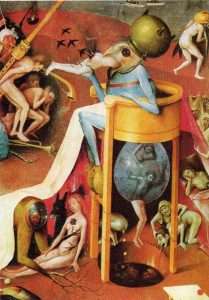
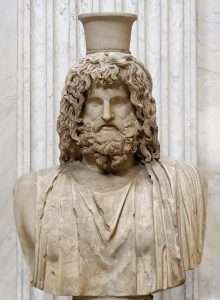
Remedy?
''At the beginning it was {'First' matter} condensed out of water out of a certain cloud {of unknowing?} and darkness being the nihil ad nos of Dionysus and Divine Darkness {Aphrodite/Cyprus?}: in other words, it came forth from 'god' , but whether by creation or some other MEANS, we are left to speculate. It is the Second Nature from god Himself and the Child of the blessed trinity. This Second Nature is not a second person...It is the 'Mother' of all...This virgin water....''fleshy and sensual'' is the fruit of the Tree of Knowledge....subject of the Philosophical Medicine...'' [Introduction: 'Thomas Vaughan' / Ed Waite].
'Second to none' / 'second childhood'? As a means.....?
Someone's New Name?
''Living Water''.
Side note: The final episode of 'Dad's Army' - the 80th - 'Never Too Old'. [1977].

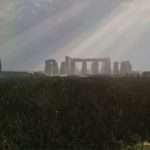
Sun or moon?
A working example: ''I decided to do this without fail so that this introductory chapter, intended as i have already said to awaken not only your 'fictitious consciousness' but also your 'real consciousness'......This second human consciousness, which in itself as well as in its manifestations is none other than what is called the subconscious....which is formed from the 'materialized results' of heredity and the confrontations produced by mans own intentions....should in my opinion predominate...'' [ Page 23 'Beelzebub's Tales to His Grandson' / Gurdjieff].
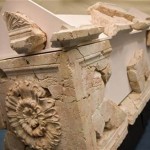
Where have you seen it before?
Continued: According to Ms. Talgam’s interpretation, there are more signs of the Temple to be seen on the stone. Sacred utensils are depicted in the order in which they would have appeared. A square shape below the menorah may represent the sacrificial altar, with large oil and water containers shown on either side. Engraved steps, arches and columns refer to the architecture of the Temple.
The professor suggested that the 12-leaf rosette on top of the stone might have echoed a motif on the veil that divided the Temple’s main sanctuary from the Holy of Holies.
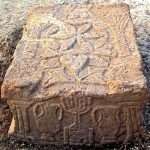
Concave corners as 'pillars' = semi-circle = ''a return to something''.
On the side of the stone that Ms. Talgam believes represents the inner sanctum, the carvings suggest the lower portion of a chariot, with flashes of fire beneath its wheels — possibly illustrating the seat of God residing in the earthly Temple. The upper half, or God himself, she said, would have been in heaven.
Ms. Talgam said the first century was a period of debates within Judaism, a factor she said must be considered in interpreting the stone.
Archaeologists can be no less quarrelsome. “There will be disputes” of her interpretation of the stone, Ms. Talgam said. “But that is the way it should be.”
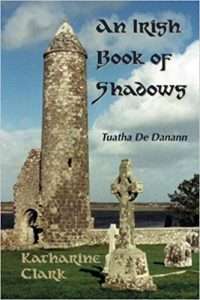
Where have you seen it before? Define subject material to get as close as possible to a mind set i.e., as ONE example attempt ''new name''.
CROSSROADS OF JEWISH AND CHRISTIAN HIGHWAYS: Magdala is a word of Aramaic origin meaning, “tower,” and most probably referring to a building or structure found on site. Furthermore, Magdala appears to be a name used commonly in antiquity in the region to the point where cities with this name would also have had a “last name.” This would be similar to the usage of the name “Santiago” for cities where a last name would clarify the location of the site such as in, Santiago de “Compostela” or Santiago de “Chile.”
Studies identify Magdala with a city that some Jewish texts called Migdal Nunayya, meaning “Magdala of the fish.” We know that Magdala had a flourishing and popular fishing industry, and we know it may have also been referred in other Jewish texts as Migdala Sab´ayya meaning, Magdala of the dyers.

'Tower' for a crown?
The majority of archaeologists now think that Magdala had its own Greek name: Taricheae. It was very normal in antiquity for cities to have two names, one of Semitic origin and a Greek name. We see examples of this in Bet Shean-Scythopolis, Rakkat-Tiberias, Emmaus-Nicopolis, etc.
Taricheae means “salted,” and would indicate that the city was known for its salting industry to preserve fish, which matches the name, Migdal Nunnaya, meaning Magdala of the fish. Josephus, the famous Jewish historian from the first century who speaks of all the major cities of his time period does not refer to Magdala, but instead to Taricheae, which according to sources suggests to be located in the same location where Magdala is found. Hence, experts today conclude that Taricheae and Magdala are the two names used for the same cities.
What does ''salt'' represent?
''Salt and light''?
El-Tel Bethsai? {Israel}.
From a different perspective: ''Thus that which causes the death of one of the principles gives life to the other, as the initial mercury, the metallic living water, dies so as to provide the dissolved sulphur of the metal, the elements of its resurrection. This is why the ancients have always asserted that the living had to be killed for the dead to be resuscitated... Yet it is this primitive subject of the sages....despised by the ignorant ones, which is the only one, the sole dispenser of the celestial water, our first mercury {'corner stone'?}, and the great Alkahest {i.e., vigor/strength from the inner hearth of energy}. It is the loyal servant and the salt of the earth, what Madame Hillel-Erlanger calls Gilly....The alkahest is the purest mercurial principle which can be removed either from mercury or from sea salt....'' [ Pages 363/4 and Page 372 'The Dwellings of the Philosophers' / Fulcanelli].

Two 'triangles' or one cube?
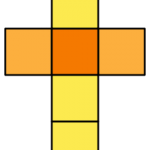 Question. Many wonder why Jerusalem and the surrounding area has been sacred since ancient times. Even before it was claimed by the Hebrews it had always been 'sacred'. Many theories abound. None about the Sea of Galilee - a 'Northern' fresh water lake - the lowest on the planet.
Question. Many wonder why Jerusalem and the surrounding area has been sacred since ancient times. Even before it was claimed by the Hebrews it had always been 'sacred'. Many theories abound. None about the Sea of Galilee - a 'Northern' fresh water lake - the lowest on the planet.
What does the ''lake'' represent within a mind set? That UNIVERSAL one. Since the dawn of human thought. BEFORE THE WRITTEN WORD CAME INTO COMMON USE.
Neanderthal / Cro-magnon?
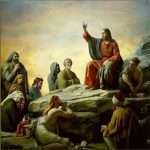 REFRESHER: "We don't know the purpose of the white quartz pebbles. There found in mortuary context from pre-historic periods onward and also medieval cemeteries. There's a passage in the Bible - Revelations- about a person who has found Christ is given a white stone - and in that - a new name." [Same program].
REFRESHER: "We don't know the purpose of the white quartz pebbles. There found in mortuary context from pre-historic periods onward and also medieval cemeteries. There's a passage in the Bible - Revelations- about a person who has found Christ is given a white stone - and in that - a new name." [Same program].
Christs new name Magdala? i.e., Tower of the Fisher.
Question. Who was the first person to be 'seen' after the 'resurrection'?
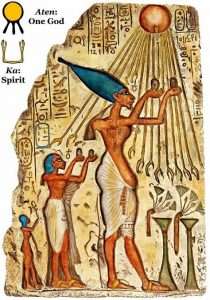
Any 'flower' ?
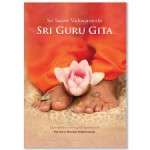 ''....I will seek thee: my soul thirts for thee.....in a dry and thirsty land, where no water is...to see thy glory as i saw thee in the sanctuary...i will lift up my hands in thy name....My soul shall be satisfied as with marrow and fatness....My soul followeth hard after thee; thy right hand upholdeth me...'' [Psalm 63 entitled ''Satisfying the thirsty SOUL''].
''....I will seek thee: my soul thirts for thee.....in a dry and thirsty land, where no water is...to see thy glory as i saw thee in the sanctuary...i will lift up my hands in thy name....My soul shall be satisfied as with marrow and fatness....My soul followeth hard after thee; thy right hand upholdeth me...'' [Psalm 63 entitled ''Satisfying the thirsty SOUL''].
Question. Right hand / Left hand. Goats or sheep?
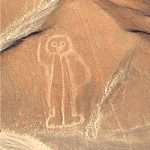
Any similarities?
And/or: ''The word ''pebble'' in Hebrew means ''bond''....to bond the past with the present {sublimate?}.....Its a Hebrew custom to bring pebbles to 'remember' the deceased rather than flowers.....So when you see these pile of pebbles {on the sarcophagus' s on the Mount of Olives}, they actually 'speak'....stones speak and proclaim who god is {'remember'?}....so when future generations pass by and they ask the question: what do these stones mean? Its a memorial to the questions that are raised up in our hearts...eternal questions about life and death.'' [Kathleen Nichols / Magdala / Israel].
Something 'Set in stone'. Recall the ''Help'' section.
From a different perspective: ''It is thought by some that the term ushabti meant "follower" or "answerer" in Ancient Egyptian, because the {stone} figurine "answered" for the deceased person and performed all the routine chores of daily life for its master in the afterlife that the gods had planned for them...'' [Wiki].
Followers of Horus and/or ''Escorts'' of Knufu and Co-heirs of Thomas Vaughan { i.e., page xxviii 'Thomas Vaughan' / Edward Waite].
As a means....?

'Childs' play?
"Read not to contradict and confute; nor to believe and take for granted; nor to find talk and discourse; but to weigh and consider." ['Of Studies' 1625. / F. Bacon].
Scales? {i.e., Libra} and/or Feather {Ma'at}.
Refresher: ''...that there is a 'divine' principle of spirit hidden or trapped in matter. It is the task of the 'alchemist' to liberate this imprisoned spirit: this alchemical process mirroring the adept's own inner transformation." [Chapter on Parzival, within the book, 'Alexandria.' Vol 1. Mentioned elsewhere, by D. Fideler].
'Silence': {''weigh and consider''} in relation to an 'understanding'. Benefit of. Understanding that {principle?} gives clues as to someone's final resting place. More importantly it explains why it was chosen.
"Object and subject are inextricably fused. I encounter a pure reciprocal relationship. Being, both breaths, and is breathed....
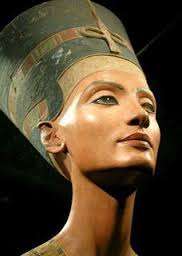
'Lure of Becoming'?
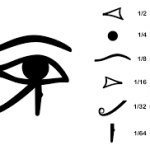
Objective eye?
"Being. Being is. Being is in-itself. Being is what it is. Being includes both Being in-itself and Being-for-itself, but the later is the annihilation of the former. As contrasted with existence, Being is all-embracing and objective, rather than individual and subjective." [Taken from the chapter 'Relation and Reciprocity' from the book 'The Fine Structure Constant: Philosophical Explorations via A Poetics of Consciousness' by Keith Whittingslow].
Subjective = Herod?
Side note: Understand the above to get a better idea on Wagner's ''annihilation'' quote - by way of Parsifal?
5:1 for something extra.
'On Having No Head: Zen and the Rediscovery of the Obvious' / D. E. Harding.
'Being' in relation to an understanding - within the whole. As ''A Means'' to perceive something. Representation of. This readers input.
''Being'' in relation to 'knowledge' and 'understanding' as expounded within the book 'In Search of the Miraculous'. Enlarged throughout.
'Being and Time' / Martin Heidegger.

Objective eye?
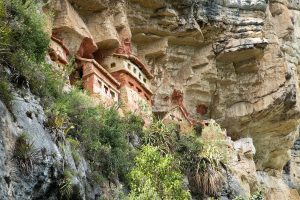
Mausoleos de Revash. Chachapoya. Above or below the clouds?
A working example: ''Plato drew openly from a wide variety of philosophical sources, especially the {H}ellenic mysteries and Pythagoreanism, but he brought to these sources a clarity of objective purpose hitherto UNSEEN. The idealism of Plato should not be seen as the beginning of philosophy. It is a product of a millennia-long process of traditional speculation and intellectual inquiry begun at the dawn of Indo-European culture. Among ALL THE LANGUAGES of the world, only the Indo-European and its derivatives has a true verb meaning ''to be'' in the SENSE of ''to exist''. [Page 71 'Lords of the Left-Hand Path' ].
Refresher: ''I am the wind that blows across the sea; I am the wave of the deep; I am the roar of the ocean; I am the stag of seven battles; I am the hawk on the cliff; I am the ray of sunlight; I am the greenest of plants; I am a wild boar; I am a salmon in a river; I am a lake on a plain; I am the word of knowledge; I am the point of a spear; I am the lure beyond the ends of the earth; I can shift my shape like a god.'' ['The Song of Amergin' / Ancient Irish Text].
Snake 'bait'?
'Tale of the Shipwrecked Sailor'.
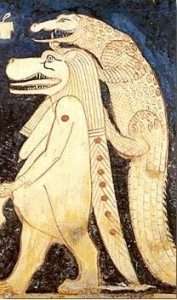

Remedy?
A Work in progress or working example: Researchers have unveiled remarkable details about a mummified crocodile by using 3D imaging technology to piece together the life and death of the crocodile, mummified by the ancient Egyptians.
The crocodile, which measures approximately 2.2 meters (7.2 feet) in length, has been the subject of intense study using state-of-the-art 3D imaging technology. The findings were published in the journal Digital Applications in Archaeology and Cultural Heritage.
The mummified crocodile, identified as specimen 2005.335, is housed at the Birmingham Museum and Art Gallery in the UK. Researchers from The University of Manchester, Loughborough University, and Birmingham City University collaborated on the project, which involved X-ray and CT scanning to examine the crocodile’s internal structure without causing any damage.
One of the most striking discoveries was the presence of a freshly eaten fish, still attached to a bronze hook, inside the crocodile’s stomach. This discovery suggests that the crocodile was wild-caught and died shortly after ingesting the baited fish. Dr. Lidija McKnight, lead author and Research Fellow from The University of Manchester explained to Newsweek, “The presence of the hook and the fish suggests that the [crocodile] died soon after ingesting them due to the lack of degradation by the digestive enzymes.”

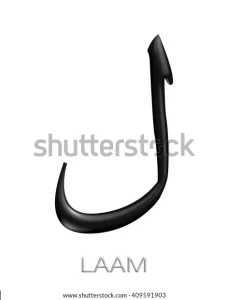 The researchers also noted that the crocodile had swallowed numerous small stones, known as gastroliths, which these animals ingest to help break down food and regulate buoyancy. The placement of the gastroliths higher up in the digestive tract indicated an attempt to process the crocodile’s last meal before death. This further supports the theory that the animal died soon after consuming the fish....
The researchers also noted that the crocodile had swallowed numerous small stones, known as gastroliths, which these animals ingest to help break down food and regulate buoyancy. The placement of the gastroliths higher up in the digestive tract indicated an attempt to process the crocodile’s last meal before death. This further supports the theory that the animal died soon after consuming the fish....
Writing in the fifth century BC, Herodotus mentions hooks baited with pork being placed in the Nile, whilst a live pig was beaten on the riverbank in order to attract the predators and facilitate capture (Herodotus, 69, II). Diodorus Siculus writing four centuries later records that the Egyptians hunted crocodiles using nets and spears, suggesting that the use of fish hooks was no longer practiced (I, 84). The hunting of wild crocodiles is reported in Roman times (30BC-AD395), some centuries later than the peak in the veneration of the animal witnessed during the Ptolemaic Period (332–30BCE)....
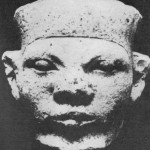
Scorpion king: Lame duck?
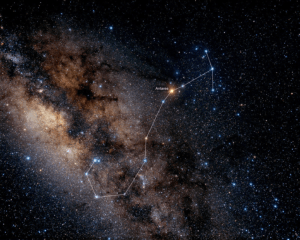
The Scorpion constellation: "Two swimming ducks."
The earliest mention of a high-status cult crocodile comes from the late 1st Century BC in the writings of Strabo who describes the captive upkeep of a tame crocodile, named Suchus, at the cult centre of Crocodilopolis. Believed to be the living incarnation of Sobek, Suchus was provided with a dedicated pond within the temple complex where he received a lavish diet of bread, meat and wine delivered by the priests, and adornments of precious metals and jewels (Strabo XVII, 1, 38). Archaeological evidence found within the temple complex suggests some truth in Strabo's words. As a cult animal, Suchus received the levels of care befitting a god on earth and upon his natural death a successor was selected to replace him as the cult animal....
The study also revealed much about ancient Egyptian beliefs and practices. Some crocodiles, like the famous Suchus at the cult center of Crocodilopolis, were pampered as “cult animals,” receiving lavish diets and adornments befitting their divine status. Others were captured from the wild, possibly using baited hooks, and mummified as offerings. ['Archaeology News' / July 2024].


Lure?
And/or: ''Without this deeper lure of becoming, people will remain asleep within the systems that keep them from accessing their mythic abilities.....Your lure of becoming is a cosmic magnet that attracts you into higher orders of reality.'' [Pages 20/31 'Book 1: The Cosmic Keys of our Future Becoming: The Quest of the Rose' / A. Smitsman and J. Houston].
"I remember yet another talk that took place during the same period. Someone asked him about the possibility of a universal language - in what connection i do not remember. 'A universal language is possible', said G., 'only people will never invent it'. 'Why not?' asked one of us. 'First because it was invented a long time ago', answered G. 'and second because to understand this language and to express ideas in it depends not only upon the knowledge of this language, but also on being'." [Same book].
Karma? i.e., what goes around comes around.
Zodiac? i.e., as {one} example - 'twelve' stones used several times in the Old Testament.
Therefore implying ''verticall'' from a 'horizontal' perspective.
144? {i.e., the foundation of something}.
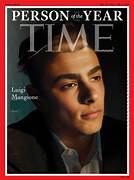
A stitch up? Which one's fake news?

"Deny, defend, depose." New or old Years Resolution?
And/or: "The knowledge of {'True'} man is his own knowledge which cannot be taken away from him - it is the objective and completely practical knowledge of all." [Same book. Including italics].
'On Having No Head: Zen and the Rediscovery of the Obvious' / D. E. Harding.
Side note: Some authors define {represent} that {final?} result with the word ''true''. The above author however {i.e.,P. D. Ouspensky} defines it as ''man number seven'' {i.e., 1-7 'levels' of knowledge/understanding relative to ''being''}.
The main point {being} - understanding what ''seven'' is a representation of - also defines {explains} what is being hinted at - AND/OR - as to the use, by that author, of the word ''connection''.
Refresher: "...This is why we have repeated so many times in these 'Letters' that practical [i.e.,lived] Hermeticism is neither occult science, nor magic, not gnosis, nor mysticism - but rather their synthesis. For it is a 'tree' not a 'tower'. And it is man himself; the whole man - who is at one at the same time philosopher and magician, gnostic and mystic - who is the 'tree'. " [Extract from the book by Tomberg. 'Letter 16' ].
"Some say it could be the largest virgin UNpollarded Oak in the world - called Majesty." Enlarged elsewhere.
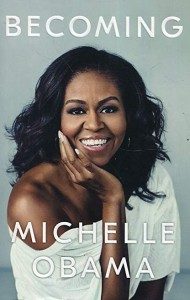
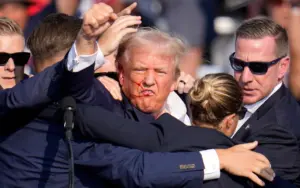
Good or bad karma? Question. Can it be BOUGHT with dollars, cents or dimes?
Sufi equivalent...Certain Sufi writers seem to think that there is an important difference between this concept of the Oneness of Being and that of the Oneness of Perception [ wahdat al-shuhud ], having regard to a very important tension in human experience between perception and being; subject and object; the knower and the object of knowledge. Ibn al-Arabi, however, in coining the term wahdat al-wujud [Oneness of Being], did not intend to make any distinction but, by choosing the word wujud, to convey the meaning of the Oneness of both Being and Perception in the perfect and complete union of the one and only 'Reality' [al-haqq]. This is because the Arabic root word wajada carries both ideas, that of being and therefore objectivity, and that of perception and therefore subjectivity, both of which he sees as being one in the Reality." [Introduction to the book 'The Bezels of Wisdom' by Ibn al Arabi].
Side note: 'Mirror' symbology found in 'Fruits of the Moon Tree' / A. Bleakley].
Try ''simultaneous''. Question. Agree/disagree?
Hermetic equivalent. The 'One Thing' in relation to the 'One Mind.' Explained elsewhere.
'Horus OF / IN the Horizon' Egyptian equivalent?
Its physical representation being the cross over point between horizontal / vertical symbolism. Can you 'see' it yet? i.e.,as one example - in a different form - Nave and Transept.

REFRESHER: "Dawn always begins in the bones." Goddess of Dawn. Gateway to the light.

Queen of punt. AND/OR: ''....I will seek thee: my soul thirts for thee.....in a dry and thirsty land, where no water is...to see thy glory as i saw thee in the sanctuary...i will lift up my hands in thy name....My soul shall be satisfied as with marrow and fatness....My soul followeth hard after thee; thy right hand upholdeth me...'' [Psalm 63 entitled ''Satisfying the thirsty SOUL''].
REFRESHER: "Got to see it, rather than just read it..." John Humphrys talking to D. Tennant and Greg Doran in relation to the plays by W. Shakespeare. [400th anniversary. Radio 4. 23/04/16].
And/or ''parables'' and/or ''trickster character.'' As a means to an understanding. Along a ''journey'' - or would that be within a journey? Defining the 'divine bit' relative to the whole - makes sense of that question. Can you see it yet? It also explains [defines?] why a certain [subject?] became its main teaching aid.
Question. The head of the corner? {'rock'?} N.B. [Come back to it later]. AS ONE DOES IN ANY SUBJECT.
The understanding of the subject or more importantly the manner in which it is written ‘to be’.. understood, possibly, verifies that same question/answer. A link to synchronicity. [Explained elsewhere ]...Together with, ''That which is truly known, knows that it is known." [Quote by Krishna], Or, "There is a difference between being told things and knowing them. Knowing comes from within., When you know, you do not need to be told, and you can have that kind of knowing. I will be glad to help you find it, but no one can find it for you." [Extract taken from Chapter 11, 'The Seth Material' ]...
 A {working?} example: "How do you define consciousness? Consciousness is considered to be indefinable, and indeed how can it be defined if it has an inner quality? With the ordinary means at our disposal it is impossible to prove the presence of consciousness in another man. We know it only in ourselves." ''All this is rubbish'; said G., the usual scientific sophistry. Only one thing is true in what you have said: that you can know consciousness only in yourself {what he defines as 'self remembering'}. Observe that i say you can know, for you can know it only when you have it..." ['In Search of the Miraculous']. Question. ''Manifested''?
A {working?} example: "How do you define consciousness? Consciousness is considered to be indefinable, and indeed how can it be defined if it has an inner quality? With the ordinary means at our disposal it is impossible to prove the presence of consciousness in another man. We know it only in ourselves." ''All this is rubbish'; said G., the usual scientific sophistry. Only one thing is true in what you have said: that you can know consciousness only in yourself {what he defines as 'self remembering'}. Observe that i say you can know, for you can know it only when you have it..." ['In Search of the Miraculous']. Question. ''Manifested''?
Follow the title of the book to 'see' it in its broader context.
Remembering / forgetting?
"Initiation is the capacity of orientating oneself in every domain and of acquiring there knowledge of relevant facts - the ''key'' facts. The initiate is one who knows how to attain knowledge, i.e., who knows how to ask, seek, and put into 'practice' the appropriate means in order to succeed, [i.e.,in one form, the study of ''keys'' etc, by objective analysis. This readers input]. No theory or doctrine, however luminous may in any way have rendered him capable of ''knowing how to know''. [Taken from the book by Tomberg. 'Letter 4'].
"The teaching of the three forces is at the root of all ancient systems''. ['In Search of the Miraculous']. Enlarged elsewhere.
That number 'three' again. Foundations? 3x4?
And/or: {A work in progress?}: "One of the next lectures began with a question asked by one of those present: What was the aim of his teaching? 'I certainly have an aim of my own', said G. 'But you must permit me to keep silent about it. At the present moment my aim cannot have any meaning for you, because it is important that you should define your own aim'..." [Same book].
"Ask and it will be given to you; seek, and you will find; knock, and it will be opened to you." [Luke xi, 9].

In profile or Face on?
"Contrary to popular belief, the Grail seekers do not set out on their journey with the deliberate intention of healing a perceived disorder within themselves or their world. Their journey is a journey of initiation...in which they may, or may not, discover the cause of the disease which affects the 'Grail King' and his 'land', and this is by no means apparent to them at the outset. It is simply the power of the 'Grail' which draws them forever onwards: they do not know what it is they seek, or why. In fact, Gawain, one of the grail seekers, does not even intend to look for the grail; he believes himself to be on an entirely different quest and it is only because his 'horse' takes the bit between its teeth that he arrives at the grail castle whether he will or not. As many of those who have found themselves in pursuit of the 'Mysteries' will vouch {synchronistic link?}, this is often the way of things. The impulses of the higher Self will somehow manage to reach through to the personality even though it is deaf and blind." ['Red Tree, White Tree' / W. Berg].
"...the bit between its teeth." Sacred pun? Recall what the ''horse'' represents. And/or ''grail king'' in relation to a ''blind'' one. {Higher/lower?}.
'Waste land' / T.S.Eliot.
 From a different perspective: "A Goidelic alphabet, called Ogham, was used in Britain and Ireland some centuries before the introduction of the Latin A B C . Its invention is credited in the medieval Irish Book of Ballymote to 'Ogma Sun - Face son of Breas' - one of the early gods of Goidels. Ogma, according to Lucian, who wrote in the second century AD, was pictured as a veteran {'old man' link?} Hercules, with club and lion skin, drawing crowds of 'prisoners' along with golden chains connected by their ears {'Sais' ?} to the tip of his tongue {'silence' link?}. The alphabet consisted of 20 letters; 15 consonants and 5 vowels - apparently corresponding to a deaf and dumb finger language." [Page 113 'The White Goddess' / R. Graves].
From a different perspective: "A Goidelic alphabet, called Ogham, was used in Britain and Ireland some centuries before the introduction of the Latin A B C . Its invention is credited in the medieval Irish Book of Ballymote to 'Ogma Sun - Face son of Breas' - one of the early gods of Goidels. Ogma, according to Lucian, who wrote in the second century AD, was pictured as a veteran {'old man' link?} Hercules, with club and lion skin, drawing crowds of 'prisoners' along with golden chains connected by their ears {'Sais' ?} to the tip of his tongue {'silence' link?}. The alphabet consisted of 20 letters; 15 consonants and 5 vowels - apparently corresponding to a deaf and dumb finger language." [Page 113 'The White Goddess' / R. Graves].
Put those keys together {highlighted in one form or another} to 'see' the parts within the whole.

"What did Timur's tomb say?
It has been said that the jade slab that Nadir Shah tried to take said "When I rise from the dead the world shall tremble" and that the coffin that the Soviet anthropologists opened supposedly had "Whomsoever opens my tomb shall unleash an invader even more terrible than myself" inscribed on the inside." Lozenges?

Right angles?
And/or: ''Back in the early 18th century BC, a new style of sword appeared in Britain - and for decades, this distinct weapon was seen to signal the arrival of a new breed of warrior into Britain: one that hailed from the Celtic heartland of central Europe. The antiquarian Edward Lhuyd had drawn on historical and linquistic evidence to suggest that Britain and Ireland had been settled in antiquity by two waves of invading Celts. These invaders brought their language with them with one exception - the consonant q was replaced with p - in the second wave....This hypothesis was disliked by most archaeologists, pointing out that changes in language can often happen without the migration of the people themselves {i.e., the transfer of IDEAS through the daily process of social/buisness gatherings. Both local and non-local}.'' [Pages 102-3 'The Celts: Search for Civilization' / A. Roberts].
Linear A/B?
Gnostic ''duality'' link?
Square/Rectangular huts {Celts}. Round ones {Brits}?
90/180? S/E -N/W?
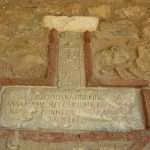
Shape of the 'graves'.
Side note: Kathleen Martinez while looking for the tomb of Cleopatra comes across FOUR ''golden tongued'' skeletons { '22' carat gold} - at the ''EAST of the temple close to a LIGHTHOUSE'' ...'It allowed them to talk to the gods'.....Close by a mummified skeleton found minus his feet. 'FEET' first. ['Lost Treasures of Egypt: Cleopatra' / 26.12.21].
'Silver tongued?
Are they trying to tell {hint?} something?
And/or: ''Another kurgan belonging to the early Scythian culture was excavated {2001-2003}. It was intact and contained over twenty graves. Among them was an elite double burial

In profile or 'Face on' ?
"The task of the scholar of esoteric studies is not to prove that such an invisible 'tradition', hidden behind the veil of historic events, did or did not exist; as such; before the Renaissance; rather, the task consists of trying to grasp and to describe the different facets of the emergence of this idea as it appears in the imaginary and the discourses of the last centuries [and/or millenniums. This readers input]. Quote by A. Faivre.
"According to the testimony of many myths, the Cosmic Man {enlarged elsewhere] is not only the beginning but also the final goal of all life - of the whole of creation. ''All cereal nature means wheat, all treasure nature means gold, all generation means man,'' says the medieval sage Meister Eckhart. And if one looks at this from a psychological standpoint, it is certainly so. The whole inner psychic reality of each individual is ultimately orientated toward this archetype symbol of the Self." ['Man and his Symbol'. Enlarged elsewhere]. Try ''quern''.
'A grain of wisdom.'
Question. How many grains make a cake?
Funerary cake?
"There is only one tradition, and that is the evolution into enlightenment which creates people of compassion, maturity, wisdom, and self-transcendence. Every generation must discover the paths that lead to authentic transformation. It isn't about creating new tradition, but about being genuine in one's efforts to reach ones highest potential." ['Wisdom of the 4th Way']. Continued elsewhere - compare it - 'see' it - in relation to all other ''paths''.

''It will never take place while i'm alive''. Question. A political animal or a spiritual one? ''There are only two ways you can deal with them....either conquer them or deter them {Gog/Magog?}.'' Question. IS there not that THIRD universal option - communication? As there is in the Bible story, the Quran and/or 1948. Question 2. Those NOBLE sentiments that were put on the table in 1948 for BOTH cultures should they not be reapplied? The PEOPLE of the BOOK are both the Hebrews/Jews and Palestinians - whether BOTH parties like it or not. You cannot have one without the other. You cant have the Hebrews/Jews without the Palestinians and you cant have the Palestinians without the Hebrews. Why? That ''duality'' clause. Opposite ends on the same pole. We LEARN FROM EACH OTHER {'neighbours' link}. To lead by EXAMPLE rather than expecting to be led {'Wilderness' years}. Postives and Negatives day by day until.... {Revelation}. ''And so begins a thousand good years'' From the CENTER outwards. From Jerusalem outwards. And NOT just across the middle East. BUT BEYOND! Question 2. Why did the Quran come about in the first place? To give those desert tribes something to think about besides 'revenge' and personel 'vendettas'? Both of which are not found in those 99 names of Allah. ONLY self defence.
Analogy of same. Different time, different place. "...I must cite one instance, which may otherwise puzzle the reader of this book. This is the word 'Reflection', which is also spelt 'Reflexion' where the content seems to require it. In Teilhard's philosophy, to which it is vital, the word represents two distinct things, which, however are so intimately connected as to be in effect different aspects of the same thing. Reflection is the power of conscious thought which distinquishes….

To 'reflect' on the inner?
….Man from all other living creatures [the animal that not only knows but knows that it knows]. But the species, Man, also differs biologically, in Teilhard's view, from all other species [or phyla] in that, instead of spreading out fanwise, breaking into sub-species and falling eventually into stagnation, it coils inward upon itself and thus generates new [spiritual] energies and a new form of growth - a process of Reflexion which is part and parcel of Reflection." [Translator's notes to the book, 'The Future of Man' by Teilhard de Chardin - includes parenthesis].
Side note: ''The holiness of the Holy Land has nothing to do with who the inhabitants are or what they do; it is a choice from on high, beyond human comprehension. The sanctity of a place is objective, a thing in its own right.'' [Page 72 'The Thirteen Petalled Rose: A Discourse on the Essence of Jewish Existence and Belief' / A. Steinsaltz].
Question. Whats the difference between Hebrews and Jews?
Continued: And / or that same quote on his very first page by Mr Du-Sautoy. Or the quote on the first page of Chapter five, [Master Game] in relation to the word 'Gnosis',[i.e.,'knowledge'] and its relevance to the subject as a whole, especially in relation to to the Egyptian equivalent of the concept of re-ligion, i.e.,Heka [essence of], chapter ten of the same book, i.e.,... "What they understood by heka does not necessarily accord with modern ideas of magic at all and therefore needs to be clearly defined....The type of 'magic' with which we are concerned differs profoundly from astrology which is not necessarily magic at all but a mathematical science based on the belief that human destiny is irrevocably governed by the stars, and that therefore from the study of a persons horoscope, and the position of the stars at the time of birth, one can foretell an irrevocably foreordained future.....
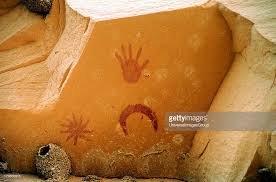
Try ''eclipse'' to ponder on something.
This magic is astrological only in the sense that it to 'bases' itself upon the stars , their images and influences, but it is a way of escaping from astrological determination by gaining power over the 'stars', guiding their influences in the direction which the operator desires. Or in the religious sense, it is a way of salvation, of escape, from material fortune and destiny, or of obtaining insight into the 'divine'." [Emphasis, this readers], + ['Esoteric Astrology', {a beginners guide} by T. Jansson].
Side note: The author P. D. Ouspensky defines that ''material fortune'' with the word 'mechanical'. Enlarged elsewhere.

A spiral brooch. Found on Oak Island. Question. Oak or Conifer. Pine?
Or put another way, "In our individual lives and collectively, we go round and round in the circles 'traced' out for us by the planets and stars. But if we can become conscious of these 'circles', if we can become conscious of the activity of the stars and planets in our lives in an 'intimate' way,{i.e.,study and/or 'lucid dreaming'?} then we are in a sense no longer trapped by them. If we are no longer trapped, we are now no longer moving in a 'circle', but in an upward spiral". [Page 146, 'The Secret History of the World'. All emphasis, this readers ].
''...intimate'' in relation to the 'divine bit'?
'Lucid Living' / T. Freke].
Hence: "Magic then {i.e.,heka}, is a mysterious divine force through which the spiritual and physical universe {'co-existence' link? See ''Help'' section} - becomes manifest - and hence a force permeating and linking all levels of reality from the highest to the most material. But it is also - and this is an especially important aspect of the way the ancient Egyptians understood magic - the means by which the human being, and ultimately all creation, returns to the 'Supreme Godhead', the UNmanifest source of all that exists." [Page 127 'Temple of the Cosmos' ].
A {working?} example: "But at the same time, possibilities of evolution exist, and they may be developed in separate individuals with the help of appropriate knowledge and methods. Such development can only take place in the interests of the man himself against, so to speak, the interests and forces of the planetary world {i.e.,what this author defines as ''mechanical''}. The man must understand this: his evolution is necessary only to himself. No one else is interested in it. And no one is obliged or intends to help him. On the contrary, the forces which oppose the evolution of large masses of humanity also oppose the evolution of individual men. A man must outwit them. And one man can outwit them, humanity cannot. You will understand later on that all these obstacles are very useful to a man; if they did not exist they would have to be created intentionally, because it is by overcoming obstacles that man develops those qualities he needs. This is the basis of the correct view of human evolution. There is no compulsory, mechanical evolution. Evolution is the result of conscious struggle..." ['In Search of the Miraculous' / P. D. Ouspensky]. Try ''struggle''.

'The Persistence of Memory' in relation to ''A representation of a collapse of our notions of a FIXED cosmic order." Wikipedia/Dali's melting clocks.
Refresher..."The human's progress is that of one who has been given a 'sealed' book, written before he was born. He carries it inside of himself until he 'dies'. While man is subject to the movement of time, he does not know the contents of that concealed book." [ Hakim Sanai]. Taken from the book 'The way of the Sufi' by I. Shah.
''movement of time'' in relation to cause and effect. Now add that extra 'bit' within that total framework.
Remember - possibilities of. Nothing more. In order to define a subject. Before those bigger questions are asked.
''Time must never be thought of as pre-existing in any sense; it is a manufactured quantity." Enlarged elsewhere. [Hermann Bondi - from the book 'About Time:Einstein's unfinished Revolution' / P. Davies].

Avatars? Sell out or Cop-out! What do the Fans really want? To hear those young joyous voices - BUT NOW sung from a mature perspective - after those intervening 40 years? Which cartoons cannot do. Worried about the odd wringle?
Understanding all the above - defines the following - gives it a certain credibility; a credibility that one can get 'ones head around'..."To prove that you are sons, god has sent into your hearts the Spirit of his Son, crying 'Abba. Father!' You are therefore no longer a slave, but a son, and if a son, then also by gods own act, an heir." [Extract from the book by G. Knight. Emphasis, this readers].
Think about it, in relation also to the word 'trapper' [ and its 'inner' representation / significance ], in the Gilgamesh story. "Another example of the same ''principles'' but from a different perspective, [i.e.,different 'keys']......

Higher or lower? - if only in determining a MIND SET.
"As long as we live on the material earth plane, matter is real to us. Matter isn't less real to us just because we understand the scientific truth about atoms, or the Hermetic teachings about the mental nature of the universe. We can control matter by applying higher forces. The laws of nature are constant, and we cant escape them. We can however overcome the laws by applying 'higher' ones. The universe and its laws and phenomena are real, so far as humans are concerned. The universe is also ever changing and transitory, so its unreal in the absolute sense. However we must live and act as if the fleeting Universe and matter were real. In the material world, Mentalism, the power of your thought, is the greatest natural force." [Back cover to the book, 'Divine Magic': A New Interpretation of the Classic Hermetic Manuel, The Kybalion: by Doreen Virtue]. Horizontal/vertical link?
'Strange Life of Ivan Osokin' / P. D. Ouspensky.
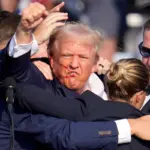
A work in progress?
Analogy of same..."...It appears that misery, starvation, and disease are whips of our karma that ultimately drive us to seek the true meaning of life." [Extract from the book 'Autobiography of a Yogi'. Enlarged elsewhere].
Side note: 'Game of Thrones'?
Jonathon Black defines those same principles within the word ''Idealism''. Find it, compare it to understand it, before asking those bigger questions, i.e.,a figment of the imagination? A collective one?

Rocket up his anus? Mad, bad, or just sad?
Together with..."Thus the 'god' Heka describes himself as the "lord of Ka's". Heka resides within the 'ka' [explained elsewhere], or vital essence of every creature, or natural element, instilling it with 'spiritual' power. It is thought that, etymologically, 'his' name originally meant, "He who consecrates the ka". As the invisible current of life energy that flows [like the Chinese 'chi', or the Hindu 'Prana.' The author Israel Regardie, of the 'Philosophers Stone' defines that same principle as ''libido'' ] inside all creatures, as an animating force, heka can also be understood as the means by which what is spiritual becomes physically manifest . Heka governs the circulation of energy between the inner and outer worlds, and so could be thought of as making the link [ bridge] between the spiritual and material levels". Think about it... in the context of an 'understanding', within that acclaimed framework, in relation to cause and effect. [Emphasis this readers. Chapter seven. "The Future of the Ancient World". Mentioned elsewhere].
"The world is a bridge; pass over it, but build no house upon it." Enlarged elsewhere.
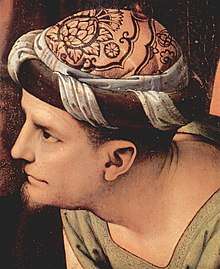
Remedy.
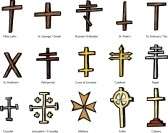
Which one 'lame'? Balanced/UNbalanced?
Side note {something extra}: "Later, Philemon became relativized by the emergence of yet another figure, whom I called Ka. In ancient Egypt the 'kings Ka' was his 'earthly' form , the embodied soul. In my fantasy, the ka-soul came from below, out of the earth as if out of a deep shaft {Osiris shaft?}. I did a painting of him, showing him in his earth bound form, as a herm with a base of stone and upper part of bronze. High up in the painting appears a kingfishers wing, and between it and the head of Ka floats a round glowing nebula of stars....Philemon had a lame foot....{with the wings of a kingfisher}. He was a winged spirit....In time I was able to integrate both figures through the study of alchemy." [Pages 207-210 'Memories, Dreams and Reflections' / C. G. Jung].
Try ''kingfisher'' for a further connection to other cultures in order to attempt a MIND SET. A universal one.
"But, beyond the physical and beyond the psyche is the spiritual world, the world of spirit, 'spiritus' in Latin, 'pnenma' in Greek and 'atman' in Sanskrit. That 'Spirit' though separate from matter and soul is yet interwoven in the whole structure. So we have body, soul and spirit. Now this takes us back to the early Christian concept that man is body, soul and spirit. It is found in St. Paul, in the letter to the Thessalonians, and in St. Irenaeus and in Origen amongst the early fathers. After that it faded out, but these early Christians had a much more integrated view of humanity. Man is an integrated whole of body, soul and spirit, not a body separated from mind, with 'god' somehow separated from all. I would like to support this with a theory which i discovered about 50 years ago when i was studying English Literature and which i have never forgotten. I give it to you for what it is worth, but it changed my whole outlook on life...

''Donald! I'd like a word in your ear. Water sports! in the White House!" The chosen one or the Great pretender?
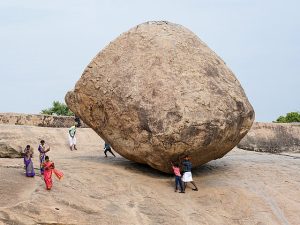
Krishna's butterball, 6 m (20 ft) high, 5 m (16 ft) wide, weighs around 250 tonnes, granite boulder, view from SE. Mahabalipuram, Tamil Nadu, India
...It came from a book called 'Poetic Diction' by Owen Barfield, a friend of my friend, C. S. Lewis. He had made a study of words as a literary critic. He took the word 'spirit' and pointed out that in most languages that one word 'spiritus' can mean wind or air or breath or life or soul or spirit. It has six distinct meanings. What Owen Barfield said was this: in the beginning words contained all of these meanings; they had not been separated out. The word 'spiritus' meant wind and air and breath and life and soul and spirit. And then gradually men began to make different words to distinguish the wind from the air, from the breath, and from life. But primitive languages, and Sanskrit is the perfect example, are immensely rich. Often one does not know exactly what a word means, because it can mean many things. This is very relevant for the Vedas, because the Vedas have many prayers for cattle and horses, and butter or wealth etc. The early European commentators always looked upon this as a very materialistic religion, but Sri Aurobindo, whom i consider the greatest philosopher of modern India, in his book on the Vedas made it clear that all these words have a psychological as well as a physical meaning. In certain texts it is absolutely obvious. So that this ''butter'' for instance, which comes from the cow, this gleaming 'butter' with all its richness, is also the 'butter' of the mind. The mind produces this butter of 'thought' and so the same word can mean butter and thought. The same is true of other words. Everything has a physical; a psychological; and spiritual being.......A very good example is 'fire'..."[First chapter 'The Cosmic Revelation' by Bede Griffith]. Put ''butter' in the box.
A working example: ''After a while these two mutually stimulating sensations gave way suddenly to a peaceful inner state such as i experienced in later life only once, when the ceremony of the 'great initiation' into the brotherhood of 'the makers of butter from air' was performed over me.'' [Page 34 'Beelzebub's Tales to His Grandson' / Gurdjieff].


''Carving Of Nandi Bull, Lord Shiva Mount At The Shore Temple Of Mahabalipuram, India, 2008 (photo); (add.info.: Mahabalipuram or Mahabillipuram or Mammallapuram, its official name, is a small seaside town located in the northern part of Tamil Nadu, the city’s name came from the Pallava king Narashima Varian I called Mahamalla the great wrestler, wrestling was the favourite sport of the Pallavas; this seaport, famously known for its ancient rock carvings, host the Shore Temple, register as a UNESCO World Heritage site and one of the most photographed monuments in India. Nandi, which means “giving delight” or “giving joy,” is the sacred bull of the Hindu god Shiva, one of the most important Hindu gods. When the world becomes evil, Shiva destroys it to make way for beneficial change. Nandi is Shiva's animal form, his means of transportation.'' SIDE NOTE: Mahabalipuram is known especially for its rathas (temples in the form of chariots), mandapas (cave sanctuaries), giant open-air reliefs such as the famous 'Descent of the Ganges' . ALL of the 'chariots' are UNFINISHED. And a large 'crack' can be seen on Shiva's Nandi Bull - on the rear end {'tail' end} just as it is with the Sphinx. Both also in resting positions. Join the dots to decipher those keys. ['Treasures of the Indus: Of Gods and Men' / S1 EP3 / BBC]. 'Fissure' to enlarge.
Side note: Many questions raised concerning an ancient 'henge' {at least 2400BC} discovered at Woodbridge in Suffolk S/E England. All within a once large hill - but since - flattened {decommissioned?}. Large circular ditch with walkway inside made of birch and oak. Animal parts found inside mainly of jaw and pelvic area {ie., ''head and tail'' ends, i.e., womb. Femur?}. Spring water prevalent throughout ''running down throughout the structure to the creek below''. Large platform on top of hill. {'Horizon' link? i.e., ''line of sight'' - in the spiritual sense of the word}. Parts {skull} of large female cow found {auroch} also on top. ''Milk'' and ''butter'' mentioned in relation to the 'tool' found alongside - ''its a wooden spatula used for butter and milk churning''. ['Digging for Britain'. Series 7. Episode 3].
Spirit/Soul. Fire/Water......as a means....?
Define a mind set to get beyond ''ritual ceremony''. i.e., what could be seen on top of that ''platform'' - another 'henge' within that locality or some constellation and planets. The 'foundation' of something? Try ''calf'' to take something further.
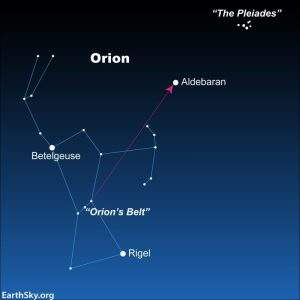
His back to us? Question. How can Rigel be his left foot? Cross-legged? 'Turnaround' to enlarge.
Side note: ''Son of Man, set thy face against Gog, the land of Magog, the chief prince of Meshech and Tubal, and prophesy against him. And say: Thus says god, 'behold i am against thee O Gog, and i will turn ye back, and put hooks into thy jaws, and i will bring thee forth, and all thine army, horses, and horseman, all of them clothed with all sorts of armour....all handling swords {therefore 'fire' link}: Persia, Ethiopia and Libya with them....'' [Ezekiel 38 taken from the book 'GogMagog' / T. Lethbridge].
Side note: ''Because all his predecessors were too busy in wars with Chalukyas and there was little time to focus on building or carving temples. After Rajasimha's death, there was anarchy like the situation with political instability and that may explain why most of Mahabalipuram's monoliths are unfinished.''
''May explain''.....?
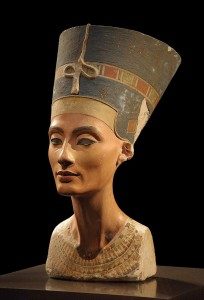
Flat top? End of a 'process' ? Therefore the beginning of something else? Foundation? ''Tower of the Fish''? All Enlarged elsewhere. 'Spirit' or 'Soul' ? As a means...?
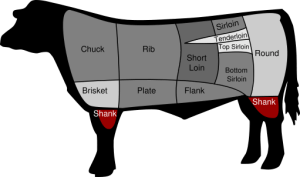
Femur?
And/or: "Ancient, however, are such terms as Ash and the Bier; Plaustrum, and Triones - this splendid constellation ran still further back - three or four or even more millenniums before even these titles were current - as the Bulls Thighs, or the Fore Shank, in Egypt. There it was presented at Denderah and in the temple of Edfu by a single thigh or hind quarter of the animal..." [Page 434 'Star Names and Their Meaning'].
''The tibia (/ˈtɪbiə/; pl. tibiae /ˈtɪbii/ or tibias), also known as the shinbone or shankbone, is the larger, stronger, and anterior (frontal) of the two bones in the leg below the knee in vertebrates (the other being the fibula, behind and to the outside of the tibia); it connects the knee with the ankle.''

The Egyptian symbol for 'gold'. Supports the cartouch
And/or: LEG bones {tibia?} found in the tomb of Nefertari {Ramses II wife} when first entered in 1905. Alongside reed sandals and a cartouche belonging to the Pharaoh Ay, blue in colour with 'copper salts'..''
Continued: "The appropriateness of creating fire by friction on actual wood should be born in mind. Although a flame might with efficiency be produced with a gas lighter it is not immediately 'fitting'. In all of this, it is not meticulous rules that we seek to provide, but a developed sense of symbolic appropriateness. We seek efficient function that is a clear expression of a spiritual intention within consciousness." [Extract from the book by G. Knight]. Enlarged elsewhere. Try Part 3.
'Fire' in relation to something internal. 'Light' in relation to external {i.e.,illumination} . Tropic of Capricorn/Cancer?
Side note: As seen from a different perspective: ''Concentration without effort is 'burning' without smoke or crackling fire...The Gnostic sense begins to operate when it is a matter of a new dimension in the act of knowledge - namely that of depth. '' within the book 'Meditations on the Tarot'.
Still waters?
Living water?
And/or: ''Perhaps because she does not trust her intuition, her head is torn from her shoulders, and she dies to her old way of life. Her spiritual knowledge is not gained without a price. But Thoth, the god of wisdom and the controller of the cycles of time, heals her by placing on her shoulders the head of the celestial cow....'' [Page 121 'Dreams of Isis' / N. Ellis].
'On the shoulders of giants'?

